post-industrial society
description: societies whose service sector provides more economic value than manufcaturing
108 results

The New Class Conflict
by
Joel Kotkin
Published 31 Aug 2014
Wells identified the ascendency of a “primary and initiating nucleus of engineers and skilled mechanics” as a new force in history.18 Over seven decades later, Daniel Bell noted that with the “rise of intellectual technology,” we were witnessing “the pre-eminence of the professional and technical class” over the rest of society.19 The emerging “post-industrial society,” Bell predicted in The Coming of Post-Industrial Society (1973), would mean a decreased reliance on the “mass mobilization of labor,” both unskilled and skilled. These inputs, he reasoned, would be supplanted by mechanization, for the benefit of those who designed and owned the machines.20 In our era, as in the industrial age, we are witnessing the growth of vast new fortunes among a relative handful of companies and individuals.
…
Wells, Anticipations of the Reaction of Mechanical and Scientific Progress Upon Human Life and Thought (Mineola, NY: Dover, 1999), p. 53. 19. Daniel Bell, The Coming of Post-Industrial Society: A Venture in Social Forecasting (New York: Basic Books, 1973), pp. 15–29, 213; International Trade Administration, U.S. Department of Commerce, “The State of Manufacturing in the United States,” July 2010, http://trade.gov/manufactureamerica/facts/tg_mana_003019.asp. 20. Bell, The Coming of Post-Industrial Society, p. 344; International Trade Administration, “The State of Manufacturing in the United States.” 21. Alex Morrell, “Billionaires 2014: Record Number of Newcomers Includes Sheryl Sandberg, Jan Koum, Michael Kors,” Forbes, March 3, 2014, http://www.forbes.com/sites/alexmorrell/2014/03/03/billionaires-2014-record-number-of-newcomers-includes-sheryl-sandberg-jan-koum-michael-kors. 22.
…
Blow, “Dinosaurs and Denial,” New York Times, December 8, 2012; Bell, The Coming of Post-Industrial Society, p. 308. 80. Bjørn Lomborg, “The Limits of Panic,” Slate, June 26, 2013, http://www.slate.com/articles/business/project_syndicate/2013/06/climate_panic_ecological_collapse_is_not_upon_us_and_we_haven_t_run_out.html; Jeff Jacoby, “Majority Rules on Climate Science?” Boston Globe, December 4, 2013; Paul Ehrlich, The Population Bomb (New York: Ballantine Books, 1968), pp. 15–44, 66–67, 136–37. 81. Bell, The Coming of Post-Industrial Society, pp. 168–69, 380, 387. 82. Frank Furedi, “Elevating Environmentalism over ‘Less Worthy’ Lifestyles,” Spiked, November 9, 2009, http://www.spiked-online.com/newsite/article/7684#.U4GA7C8TFsE. 83.

Cultural Backlash: Trump, Brexit, and Authoritarian Populism
by
Pippa Norris
and
Ronald Inglehart
Published 31 Dec 2018
The book has analyzed a large body of empirical evidence to understand the impact of different types of threats on authoritarian and populist values and, in turn, how these values lead to support for Authoritarian-Populist parties. Our theoretical argument is based on the following building blocks, illustrated in Figure 13.1. 1) Social Structural Change in Post-Industrial Societies Our account starts with long-term transformations in the social structure of post-industrial societies arising from processes of economic growth, demographic turnover, the expansion of access to higher education, more egalitarian roles of women and men, and the growing ethnic diversity of large cities combined with processes of urbanization.
…
Thus instead of analyzing support for a specific category of Authoritarian-Populist parties which are classified as belonging to the same family, our models treat adherence to these value scales as matters of degree, where all political parties and voters can be more wing or or less authoritarian–libertarian, populist–pluralist, and left- right-wing. II Authoritarian and Populist Values Our backlash thesis builds upon the extensive body of research demonstrating that long-term social structural developments in post-industrial societies – growing prosperity, rising access to college education, more egalitarian gender roles, and processes of urbanization – led to the silent materialist values, which first revolution in socially liberal and post- became evident at the societal level in the late 1960s and early 1970s. To update the trends, and see whether they are continuing, Chapter 4 presents longitudinal evidence demonstrating the evolving trajectory of value changes during recent decades – the silent revolution shifting the balance between the rising proportion of social liberals and the shrinking proportion of social conservatives in Western societies.
…
Finally, governance concerns the consequences where parties and leaders gain votes and elected office. Demand-side: the silent revolution catalyzes the cultural backlash The first premise in our argument concerns the silent revolution in cultural values that occurred during the second half of the twentieth century, transforming the cultures of post-industrial societies. More than 40 years ago, The Silent Revolution argued that the postwar era’s unprecedentedly high levels of existential security led to an intergenerational value shift among Western publics.2 This shift eroded materialist values emphasizing economic and physical security above all, bringing a gradual rise of post- materialist values prioritizing individual free choice and self-expression.
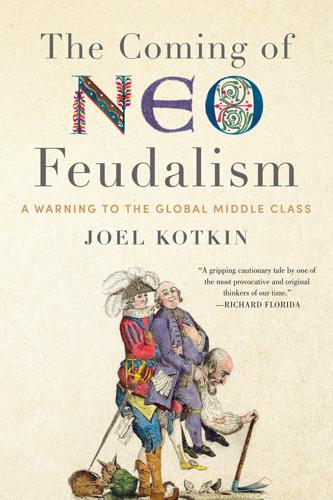
The Coming of Neo-Feudalism: A Warning to the Global Middle Class
by
Joel Kotkin
Published 11 May 2020
Sternberg, “The European Union’s Democracy Deficit,” Wall Street Journal, February 15, 2018, https://www.wsj.com/articles/the-european-unions-democracy-deficit-1518739588. 14 Daniel Bell, The Coming of Post-Industrial Society (New York: Basic Books, 1973), 15, 51, 213, 387. 15 “An hereditary meritocracy,” Economist, January 22, 2015, https://www.economist.com/briefing/2015/01/22/an-hereditary-meritocracy; Kevin Carey, “‘I Do’ Between Elites Widens Class Gap, Researchers Say,” WRAL, March 31, 2018, https://www.wral.com/-i-do-between-elites-widens-class-gap-researchers-say/17456597/. 16 Bell, The Coming of Post-Industrial Society, 427. 17 Michael Lind, “The New Class War,” American Affairs, Summer 2017, https://americanaffairsjournal.org/2017/05/new-class-war; Michael Lind, The New Class War: Saving Democracy from the Managerial Elite (New York: Portfolio, 2020). 18 Charles Murray, Coming Apart: The State of White America, 1960–2010 (New York: Crown Forum, 2012), 19–20. 19 Marge Anderson, “The Clergy and the Nobility: The French Revolution,” Big Site of History, June 9, 2008, https://bigsiteofeistory.com/the-clergy-and-the-nobility-the-french-revolution/. 20 Christophe Guilluy, Twilight of the Elites: Prosperity, the Periphery, and the Future of France (New Haven: Yale University Press, 2016), 2, 9. 21 U.S.
…
There are growing calls for regulation of the tech empire, for more antitrust action, or even for nationalization of the tech giants, not only in the United States but also in Canada and Europe.39 In recent years, some once favorable progressives have labeled the tech oligarchs as just the latest purveyors of “predatory capitalism” and a mounting threat to democracy.40 Ultimately, few stand to benefit from the rise of the tech oligarchy. Almost half a century ago, Daniel Bell predicted in his landmark work, The Coming of Post-Industrial Society, that technology would enable those who control it to fulfill “a social alchemist’s dream: the dream of ordering mass society.”41 Allowing a small number of technologists and financiers to dominate a huge portion of the economy and the information pipelines, and to monetize every aspect of human behavior, seems incompatible with democratic self-determination.42 Stanley Bing’s novel Immortal Life portrays a society in the near future that is ruled by tech oligarchs.
…
President Trump Could Change That,” Daily Beast, April 13, 2017, https://www.thedailybeast.com/progressives-have-let-inner-cities-fail-for-decades-president-trump-could-change-that. 24 Michael Lind, “The New Class War,” American Affairs, Summer 2017; Brody Mullins and Jack Nicas, “Paying Professors: Inside Google’s Academic Influence Campaign,” Wall Street Journal, July 14, 2017, https://www.wsj.com/articles/paying-professors-inside-googles-academic-influence-campaign-1499785286; Justin Danhof, “I Confronted Google about Its Liberal Groupthink at a Shareholder Meeting—Here’s What Happened Next,” Investors, August 9, 2017, https://www.investors.com/politics/commentary/i-confronted-google-about-its-liberal-groupthink-at-a-shareholder-meeting-heres-what-happened-next/. 25 Daniel Bell, The Coming of Post-Industrial Society (New York: Basic Books, 1973), 391. 26 Bruce Stokes, “Expectations for the Future,” Pew Research Center, September 18, 2018, https://www.pewresearch.org/global/2018/09/18/expectations-for-the-future/. 27 Bruce Stokes and Kat Devlin, “Despite Rising Economic Confidence, Japanese See Best Days Behind Them and Say Children Face a Bleak Future,” Pew Research Center, November 12, 2018, https://www.pewglobal.org/2018/11/12/despite-rising-economic-confidence-japanese-see-best-days-behind-them-and-say-children-face-a-bleak-future/; Ameber Pariona, “The World’s Most Pessimistic Countries,” World Atlas, August 15, 2017, https://www.worldatlas.com/articles/the-world-s-10-most-pessimistic-countries.html. 28 “Employment and Wages,” China Labour Bulletin, July 2019, https://clb.org.hk/content/employment-and-wages. 29 Lyman Stone, “More Thoughts on Falling Fertility,” Medium, December 4, 2017, https://medium.com/migration-issues/more-thoughts-on-falling-fertility-366fd1a84d8; Rich Miller, “Powell’s Puzzling U.S.

The Global Auction: The Broken Promises of Education, Jobs, and Incomes
by
Phillip Brown
,
Hugh Lauder
and
David Ashton
Published 3 Nov 2010
The growth of middle-class jobs was assumed to represent an ever-tighter relationship between human capital, jobs, and rewards, as it became more important to get the best minds working on the scientific and technological challenges of the age. In his classic study The Coming of Post-Industrial Society, published in the early 1970s, Daniel Bell highlighted the link between a rising meritocracy and economic efficiency. “The post-industrial society, in its initial logic, is a meritocracy. Differential status and differential income are based on technical skills and higher education. Without these achievements one cannot fulfill the requirements of the new social division of labor which is a feature of that society.
…
Moreover, it is not difficult to see how by sleight of hand “learning is earning” eliminated the inconvenient fact that you need to be in a job to earn (unless self-employed) and that some appear to be overpaid for their talents whereas many more are undervalued. 9. Daniel Bell, The Coming of Post-Industrial Society (New York: Penguin, 1973), 409. 10. Peter Drucker, Post-Capitalist Society (New York: HarperCollins, 1993), 22. 11. Sumantra Ghoshal and Christopher A. Bartlett, The Individualized Corporation: A Fundamentally New Approach to Management (London: Random House, 2000), 8. 12. Michael B. Arthur and Denise M.
…
China Today, “Chinese Cities and Provinces”; based on 2005 data from the Ministry of Construction. http://www.chinatoday.com/city/a.htm 24. See Walt Whitman Rostow, The Stages of Economic Growth: A Non-Communist Manifesto (Cambridge: Cambridge University Press, 1960) and Daniel Bell, The Coming of Post-Industrial Society (New York: Penguin, 1973). 25. Alexander Gerschenkron, Economic Backwardness in Historical Perspective: A Book of Essays (Cambridge, Mass.: Harvard University Press, 1962). See also Albert Fishlow’s review of Gerschenkron’s book published through Economic History Services (2003). www.eh.net/bookreviews/library/fishlow. shtml 26.

The end of history and the last man
by
Francis Fukuyama
Published 28 Feb 2006
.: Stanford University Press, 1970), pp. 321ff. 2 The term “high mass consumption” was coined by Walt Rostow (in The Stages of Economic Growth: A Non-Communist Manifesto [Cambridge: Cambridge University Press, 1960]), “technetronic era” by Zbigniew Brzezinski (in Between Two Ages: America’s Role in the Technetronic Era, [New York: Viking Press, 1970)], and “post industrial society” by Daniel Bell. See the latter’s “Notes on the Post-Industrial Society” I and II, The Public Interest 6-7 (Winter 1967a): 24-35 and (Spring 1967b): 102-118, and his description of the origin of the concept of “post-industrial society” in The Coming of Post-Industrial Society (New York: Basic Books, 1973), pp. 33-40. 3 Bell (1967), p. 25. 4 Figure cited in Lucian W. Pye, “Political Science and the Crisis of Authoritarianism,” American Political Science Review 84, no. 1 (March 1990): 3-17. 5 Even in the case of these older industries, however, socialist economies have fallen considerably behind their capitalist counterparts in modernizing manufacturing processes. 6 Figures given in Hewett (1988), p. 192. 7 Aron quoted in Jeremy Azrael, Managerial Power and Soviet Politics (Cambridge, Mass.: Harvard University Press, 1966), p. 4.
…
American Journal of Political Science 20, no. 1 (February): 151-177. Barros, Robert. 1986. “The Left and Democracy: Recent Debates in Latin America.” Telos 68: 49-70. Bell, Daniel. 1967a. “Notes on the Post-Industrial Society I.” The Public Interest no. 6: 24-35. Bell, Daniel. 1967b. “Notes on the Post-Industrial Society II.” The Public Interest no. 7: 102-118. Bell, Daniel. 1973. The Coming of Post-Industrial Society: A Venture in Social Forecasting. Basic Books, New York. Bell, Daniel. 1976. The Cultural Contradictions of Capitalism. Basic Books, New York. Bell, Eric Temple. 1937. Men of Mathematics. Simon & Schuster, New York.
…
What has replaced it has been given a variety of titles: a “mature industrial society,” the stage of “high mass consumption,” the “technetronic era,” the “information age,” or a “post-industrial society.”2 While specific formulations differ, all stress the vastly increased role of information, technical knowledge, and services at the expense of heavy manufacturing. Modern natural science—in the familiar forms of technological innovation and the rational organization of labor—continues to dictate the character of “post-industrial” societies, much as it did that of societies entering the first stages of industrialization. Writing in 1967, Daniel Bell pointed out that the average time span between the initial discovery of a new technological innovation and recognition of its commercial possibilities fell from 30 years between 1880 and 1919, to 16 between 1919 and 1945, to 9 years from 1945 to 1967.3 This figure has since decreased even further, with product cycles in the most advanced technologies like computers and software now measured in months rather than years.
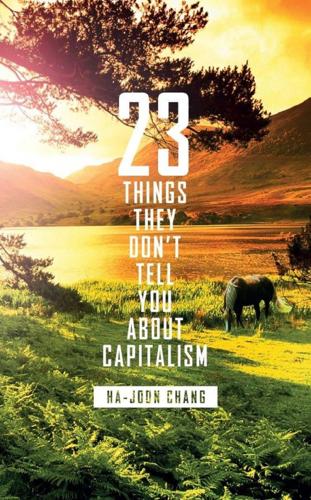
23 Things They Don't Tell You About Capitalism
by
Ha-Joon Chang
Published 1 Jan 2010
The fascination with the ICT (Information and Communication Technology) revolution, represented by the internet, has made some rich countries – especially the US and Britain – wrongly conclude that making things is so ‘yesterday’ that they should try to live on ideas. And as I explain in Thing 9, this belief in ‘post-industrial society’ has led those countries to unduly neglect their manufacturing sector, with adverse consequences for their economies. Even more worryingly, the fascination with the internet by people in rich countries has moved the international community to worry about the ‘digital divide’ between the rich countries and the poor countries.
…
The decline of manufacturing is not only something natural that we needn’t worry about but something that we should really celebrate. With the rise of knowledge-based services, it may be better even for some developing countries to skip those doomed manufacturing activities altogether and leapfrog straight to a service-based post-industrial economy. What they don’t tell you We may be living in a post-industrial society in the sense that most of us work in shops and offices rather than in factories. But we have not entered a post-industrial stage of development in the sense that industry has become unimportant. Most (although not all) of the shrinkage in the share of manufacturing in total output is not due to the fall in the absolute quantity of manufactured goods produced but due to the fall in their prices relative to those for services, which is caused by their faster growth in productivity (output per unit of input).
…
Shop assistants and some office workers interact directly with customers, whereas factory workers never see their customers. I am not enough of a sociologist or a psychologist to say anything profound in this regard, but all this means that people in today’s rich countries not only work differently from but are different from their parents and grandparents. In this way, today’s rich countries have become post-industrial societies in the social sense. However, they have not become post-industrial in the economic sense. Manufacturing still plays the leading role in their economies. In order to see this point, we first need to understand why de-industrialization has happened in the rich countries. A small, but not negligible, part of de-industrialization is due to optical illusions, in the sense that it reflects changes in statistical classification rather than changes in real activities.
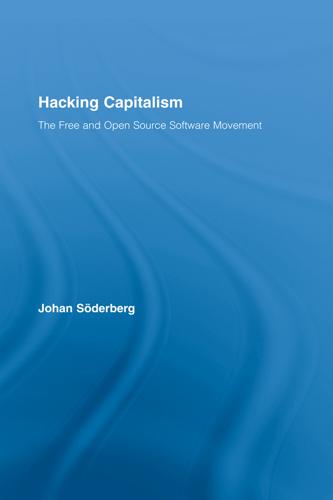
Hacking Capitalism
by
Söderberg, Johan; Söderberg, Johan;
The sharp end of their argumentation was pointed against Marx’s prediction that capitalism headed towards a polarisation of two antagonistic classes, capitalists and proletarians, which would make a final showdown inevitable. These writers objected that the modern industrial society with its welfare provisions was moving towards diminishing social conflicts.1 In the following decade, the claims about an end to ideology were coupled with the idea of a post-industrial society. The social causes for conflicts in capitalism would give way together with the manufacturing industry. One of the earliest and most scholarly inclined among post-industrial thinkers is Daniel Bell.2 Writing in the 1960s and 1970s, Daniel Bell paved the way for more popularised works by futurists like Alvin Toffler, Peter Drucker and Robert Reich, just to mention the most influential names.
…
The conservative futurist Daniel Bell was so unsettled by this implication of his own writings that he felt compelled to denounce any likelihood of communism due to an end of scarcity in his post-industrial kingdom-come. In Cultural Contradictions of Capitalism, Bell charged that communism always was, always will be, unattainable. The reason is the human plight of eternal scarcity: “But what we have come to realize is that, the question of resources aside, we will never overcome scarcity. In the post-industrial society […] there would be new scarcities which nineteenth-century utopians could never envision—scarcities of information, […].”3 Daniel Bell missed the point. Marxist theory is clear about scarcity is a social relation and that it cannot be done away with inside the confines of capitalism. In the case of intellectual property, it is obvious that scarcity is embedded in institutions and is deliberately enforced.
…
Alan Liu, The Laws of Cool—Knowledge Work and the Culture of Information (Chicago: The University of Chicago Press, 2004). 79. In the last chapter we will engage closer with the notion of play and struggle. Notes to Chapter Two 1. Ralf Dahrendorf, Class and Class Conflict in Industrial Society (London: Routledge, 1959). 2. Daniel Bell, The Coming of the Post-Industrial Society (New York: Basic Books, 1973). 3. For a collection of essays critical of Castell’s work, ed. Frank Webster and Basil Dimitriou, Manuel Castells—From the Informational City to the Information Age, vol. III (London: Sage, 2004). 4. Richard Florida, The Rise of the Creative Class—And How it’s Transforming Work, Leisure, Community & Everyday Life (New York: Basic Books, 2002). 5.
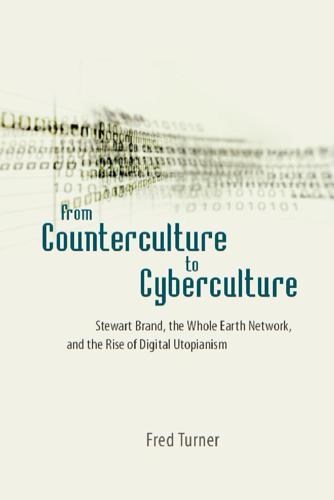
From Counterculture to Cyberculture: Stewart Brand, the Whole Earth Network, and the Rise of Digital Utopianism
by
Fred Turner
Published 31 Aug 2006
For critiques in this vein, see Slack and Fejes, Ideology of the Information Age; Lyon, Information Society; and Garnham, “Information Society Theory as Ideology.” For a thorough, critical introduction to the information society debates, see Webster, Theories of the Information Society. 5. Bell, Coming of Post-Industrial Society, 13. 6. Bell himself acknowledged this connection. “One might well say that 1945 to 1950 were the ‘birth-years,’ symbolically, of the post-industrial society,” he wrote (ibid., 346). Yet, subsequent analysts have tended to downplay or ignore the role of cold war military research in shaping the network mode of production. 7. Ibid., 373. See, e.g., Lyon, Information Society; Zuboff, In the Age of the Smart Machine; Castells, Rise of Network Society; DeSanctis and Fulk, Shaping Organization Form.
…
Yet, despite their differences, these scholars have tended to agree that, starting sometime in the late 1960s or early 1970s, a postindustrial mode of development emerged as a dominant force in society.4 Within this mode, as Daniel Bell put it in his early and still-influential 1973 account The Coming of Post-Industrial Society, “theoretical knowledge” would serve as the “axial principle” of production.5 Under the industrial regime, he argued, major technological innovations such as telegraphy and aviation had arisen from individual tinkering. By contrast, under the postindustrial system then emerging, new technologies such as chemical synthesis had come about as a result of systematic scientific research.
…
In part, that structure grew out of the need to take a comprehensive, systemic approach to weapons development, one that could see men and machines as twinned elements of a larger combat apparatus. And in part, that flexible, interdisciplinary mixing helped spawn a rhetoric of systematic knowledge (cybernetics) and the tools with which to model and manage such knowledge (computers). In other words, by the time Daniel Bell wrote The Coming of Post-Industrial Society, theoretical knowledge had already been serving as the central principle of military research and military-industrial production for some [ 242 ] Chapter 8 thirty years. Perhaps partially for this reason, Bell argued that “the decisive social change taking place in our time . . . is the subordination of the economic function to the political order.”

A Pelican Introduction Economics: A User's Guide
by
Ha-Joon Chang
Published 26 May 2014
Even in the agricultural sector, productivity has been raised in some countries, such as the Netherlands (which is the third-largest exporter of agriculture in the world, after the US and France), through the application of manufacturing-style organizational knowledge, such as computer-controlled feeding. The rise of the post-industrial society? It has recently become fashionable to argue that the manufacturing sector does not matter very much any more, as we have entered the era of post-industrial society. In the early days of industrialization, many assumed that the manufacturing sector would keep growing. And for a long time, it looked to be the case. The share of manufacturing both in output and in employment was almost constantly rising in most countries.
…
The share of manufacturing both in output and in employment was almost constantly rising in most countries. However, from the 1960s, some countries started experiencing deindustrialization – a fall in the share of manufacturing, and a corresponding rise in the share of services, in both output and employment. This prompted the talk of a post-industrial society. Many economists have argued that, with rising income, we begin to demand services, such as eating out and foreign holidays, relatively more than we demand manufactured goods. The resulting fall in the relative demand for manufacturing leads to a shrinking role for manufacturing, reflected in lower output and employment shares.
…
They look to India, which is supposed to have become – through its success in the export of services like software, accountancy and the reading of medical scanning images – ‘the office of the world’ to China’s ‘workshop of the world’ (a title which had originally been conferred on Britain after its Industrial Revolution). Deindustrialization doesn’t mean that we are producing fewer manufactured products While many people, including key policy-makers, have been seduced by it, the discourse of post-industrial society is highly misleading. Most rich countries have indeed become ‘post-industrial’ or ‘deindustrialized’ in terms of employment; a decreasing proportion of the labour force in these countries is working in factories, as opposed to shops and offices. In most, although not all, countries this has been accompanied by a fall in the share of manufacturing in output.
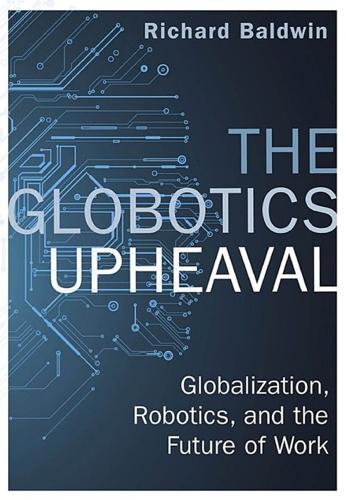
The Globotics Upheaval: Globalisation, Robotics and the Future of Work
by
Richard Baldwin
Published 10 Jan 2019
This new phase of structural transformation is called the post-industrial transformation, but it is really a second great transformation, call it the Services Transformation.1 New Technological Impulse, New Four-Step Progression The new ICT impulse launched a second great transformation and a second four-step progression (economic transformation, upheaval, backlash, and resolution). This new economic transformation was not as great as the original Great Transformation, but it did disorder the lives of millions and reshape economic social and economic realities into what the sociologist Alain Touraine called the “post-industrial society.”2 Jobs shifted from factories to offices, urbanization continued, many rural communities declined or disappeared, and the fulcrum of value creation shifted from capital to knowledge. The nature of globalization changed, and the unquestioned economic dominance of the West was questioned by facts on the ground.
…
In 2011, Apple was the only one in the top five and in 2006, only Microsoft was a top-fiver; the number one in 2006 and 2011 was Exxon Mobil (Table 3.1).9 Table 3.1 TOP-TEN LARGEST COMPANIES BY MARKET CAPITALIZATION: RECENT DOMINANCE OF KNOWLEDGE-DRIVEN FIRMS Stock Market Rank 2017 2011 2006 1 *Apple Exxon Mobil Exxon Mobil 2 *Alphabet (Google) *Apple General Electric 3 *Microsoft PetroChina *Microsoft 4 *Amazon Royal Dutch Shell Citigroup 5 *Facebook ICBC Gazprom 6 Berkshire Hathaway *Microsoft ICBC 7 Exxon Mobil *IBM Toyota 8 Johnson & Johnson Chevron Bank of America 9 JPMorgan Chase Walmart Royal Dutch Shell 10 *Alibaba Group *China Mobile BP * Data-driven companies SOURCE: Author’s elaboration of data published in BCG Perspectives, 2017. An additional source of fuel for the upheaval came from a shock rise in income inequality. The transformation of advanced economies from industrial to post-industrial societies has not been gentle on the “forgotten men and women.” Economic Inequality In the United States, the pattern is very clear and very pronounced. The well-off did well, the poor did poorly, and the average did awfully. The average US man working full-time got $53,000 in 1973, but only $50,000 in 2014 in inflation-adjusted terms.10 The average American family is sliding backward in terms of earning power—and has been since the early 1970s.
…
If twenty-three thousand Pennsylvanians, twelve thousand Wisconsinites, and six thousand Michiganders had switched their votes, Hillary Clinton would have been elected president.12 This was not an FDR-like upwelling of discontent. Less than 60 percent of eligible voters even bothered to fill out a ballot. Economic and social calamity had been swirling around the country for years. Many low-skill white men outside of large urban areas have been left behind by the post-industrial society, and this group voted heavily for Trump. People who said their family’s financial situation was worse in 2016 than 2012 voted heavily for Trump (78 percent), while only 39 percent of those who reported things being about the same did.13 Those who thought the nation’s economy was in a poor state voted for Trump, as did 65 percent of those who thought trade takes jobs away.
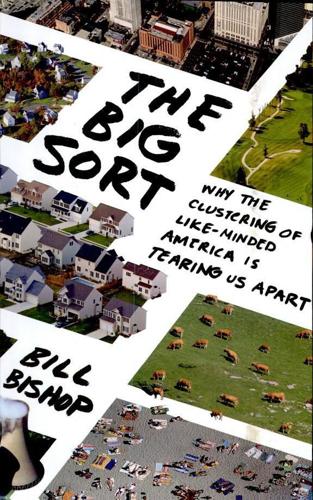
The Big Sort: Why the Clustering of Like-Minded America Is Tearing Us Apart
by
Bill Bishop
and
Robert G. Cushing
Published 6 May 2008
Besides, Wilensky has argued, most of the trends identified by the post-materialists (women's rights, environmentalism) were in motion during the heyday of the industrial economy. Wilensky suggests that we "drop" terms such as "post-materialism" "from our vocabulary."65 Other scholars, however, acknowledge that society has changed focus. Daniel Bell announced the "coming of post-industrial society" in the title of his 1973 book. Working with Ronald Inglehart, the University of Chicago's Terry Nichols Clark has described a "new political culture" born of economic prosperity and a more democratic workplace.*66 Market researchers Paul Ray and Sherry Ruth Anderson have described a growing number of "cultural creatives," people who have many of the same interests and sociabilities as Inglehart's post-materialists and those Clark has identified in his new political culture.67 Ruy Teixeira and John Judis have predicted a new constituency for the Democratic Party in the fast-growing tech cities.
…
See also Ron Lesthaeghe and Lisa Neidert, "The Second Demographic Transition in the United States: Exception or Textbook Example?" Population and Development Review 32, no. 4 (December 2006): 669–98. 23. Émile Durkheim, Selected Writings, ed. Anthony Giddens (Cambridge: Cambridge University Press, 1972), pp. 142–44. 24. Ibid., pp. 186–88. 25. Ibid., p. 175. 26. Daniel Bell, The Coming of Post-Industrial Society (New York: Basic Books, 1999), pp. 287–88. 10. Choosing a Side 1. Alan Greenblatt, "What Makes ALEC Smart?" Governing, October 2003; Pauline Vu, "How ALEC, CPA Help Shape State Laws," Statehne.org, June 7, 2005, http://www.stateline.org/live/ViewPage.action?siteNodeId = 136 &languageId=1&contentId=35924. 2.
…
American Journal of Political Science 44, no. 1 (January 2000): 35–50. ———. "What's the Matter with What's the Matter with Kansas?" Paper prepared for the annual meeting of the American Political Science Association, September 2004. http://www.princeton.edu/~bartels/kansas.pdf. Bell, Daniel. The Coming of Post-Industrial Society. New York: Basic Books, 1999. Berube, Alan, Audrey Singer, Jill H. Wilson, and William H. Frey. "Finding Exurbia: America's Fast-Growing Communities at the Metropolitan Fringe." Brookings Institution, October 2006. http://www.brookings.edu/rep0rts/2006/10metropolitanpolicy_berube.aspx. Bianco, Anthony.
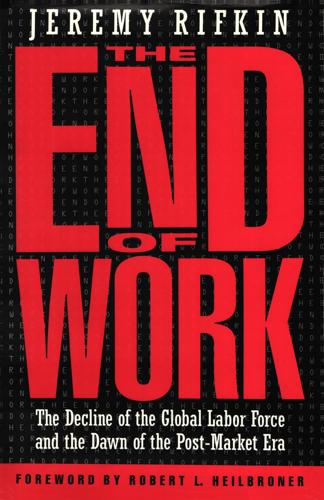
The End of Work
by
Jeremy Rifkin
Published 28 Dec 1994
Biotechnology and information technologies therefore go hand in hand to create the new production process in agriculture. In this perspective, biotechnology and micro-electronics mark the end of the pre-history of the food industry and its incorporation within the broader dynamics of the industrial system and post-industrial society.47 Chemical companies are already investing heavily in indoor tissueculture production in the hope of removing farming from the soil by 124 THE DECLINE OF THE GLOBAL LABOR FORCE the early decades of the twenty-first century. Recently, two U.S.-based biotechnology firms announced they had successfully produced vanilla from plant-cell cultures in the laboratory.
…
"The Myth of Manufacturing's Decline," Forbes, January 18,1993, p. 40; Judis, John, "The Jobless Recovery," The New Republic, March 15, 1993, p. 22. 20. Winpisinger, William w., Reclaiming Our Future (Boulder: Westview Press, 1989), pp. 150-151. 21. Masuda, Yoneji, The Information Society as Post-Industrial Society (Washington, D.G: World Future Society, 1980), p. 60. 22. "Price of Progress." 23. Churbuck, David, and Young, Jeffrey, "The Virtual Workplace," Forbes, November 23, 1992, p. 186; "New Hiring Should Follow Productivity Gains," Business Week, June 14,1993. 24. Harrison, Bennett, Lean and Mean: The Changing Landscape of Corporate Powerin the Age of Flexibility (New York: Basic Books, 1994), pp. 45-47, 51. 25.
…
Noble, David, Forces of Production: A Social History of Industrial Automation (New York: Alfred Knopf, 1984), p. 50; Fjermedal, Grant, The Tomorrow Makers p. 70; Davidow, William, and Malone, Michael, The Virtual Corporation: Restructuring and Revitalizing the Corporation for the 21st Century (New York: HarperColiins, 1992 ), p. 37· 18. Davidow and Malone, p. 37. 19. Masuda, Yoneji, The Information Society as Post-Industrial Society (Bethesda, MD: World Future Society, 1981), p. 49. 20. Kurzweil, p. 186. 21. Ceruzzi, Paul, ''An Unforeseen Revolution: Computers and Expectations, 1935-1985," in Corn, Joseph J., Imagining Tomorrow: History, Technology, and the American Future (Cambridge, MA: Massachusetts Institute of Technology, 1986), P·19 0 . 22.

Cogs and Monsters: What Economics Is, and What It Should Be
by
Diane Coyle
Published 11 Oct 2021
Naturally, these independent economic institutions will lack the democratic legitimacy of elected politicians or officials who are directly answerable to, and sackable by, politicians. Daniel Bell identified as long ago as 1973 an emerging political faultline in the tension between the growing populism of modern democracy in the mass media age and the growing requirement for technical expertise in running a modern economy. In The Coming of Post-Industrial Society he predicted that technocrats such as economists, the ‘hierophants of the new society’, would either align themselves with politicians, or compete with politicians. This tension approached breaking point in Greece in the aftermath of the GFC, where economist and former central banker Lucas Papademos became prime minister, and in Italy, where economist and former European Commissioner Mario Monti did likewise.
…
J., 1952, Welfare Economics and the Theory of the State, The London School of Economics and Political Science, London: Longmans, Green & Co. Becker, G. S., 1962, ‘Irrational Behavior and Economic Theory’, Journal of Political Economy, 70 (1), 1–13. Becker, G., 1965, ‘A Theory of the Allocation of Time’, The Economic Journal, 75 (299), 493–517. Bell, D., 1973, The Coming of Post-Industrial Society, New York: Basic Books. Bergson, A, 1938, ‘A Reformulation of Certain Aspects of Welfare’, The Quarterly Journal of Economics, 52 (2), 310–334. Berkes, E., and S. Williamson, 2015, ‘Vintage Does Matter, The Impact and Interpretation of Post War Revisions in the Official Estimates of GDP for the United Kingdom’, https://www.measuringworth.com/datasets/UKdata/UKGDPs.pdf, accessed 19 October 2018.
…
J., 122, 124 BBC Reith Lectures, 77–78 BBC Trust, 83 Becker, Gary, 2, 92, 119 behavioural economics: aggregation and, 3, 40, 42, 71–72, 100–102, 106, 113, 122–23, 141, 176–77, 201–2; beliefs of tomorrow and, 22; bias and, 109, 136; Coase on, 58; cognitive science and, 35–36, 48, 51, 91–92, 118–19, 186; competition and, 45–51 (see also competition); consumers and, 22, 59–60, 92, 109; context and, 88; failures and, 55; Goodhart’s Law and, 72, 103; happiness and, 70–71, 153; incentives and, 29, 33, 35, 55, 63–64, 80, 106, 110, 160, 200; interventions and, 48, 63, 104, 106, 160, 208, 211; markets as process and, 37–45; models and, 22, 35, 47, 63, 88, 92–93, 119, 136, 154; outsider context and, 88, 92–93, 100, 103–9; performativity and, 11, 23, 30, 211; progress and, 136–37, 145, 154, 157–60; psychology and, 38, 63, 70, 92, 94; public choice theory and, 64, 106, 119, 124; public services and, 33; rationality and, 22, 35, 46–47, 59, 109, 117–19; self-referential policy advice and, 63–64; separation protocol and, 119–20, 124; special interest groups and, 64–66; technocratic dilemma and, 67–79; twenty-first-century policy and, 186, 202, 207–8; Wu study and, 8 Bell, Daniel, 67 Bernanke, Ben, 17 Berners-Lee, Tim, 195 bias: academics and, 6; artificial intelligence (AI) and, 13, 161, 165, 187; behavioural, 109, 136; causality and, 13, 105; control groups and, 105; data, 13, 101, 105, 161, 187, 209; decision making and, 13, 109, 187, 209; framing effects and, 47; gender, 6, 8; institutional, 180; market, 180, 187, 209; non-rational, 47, 109; skill-biased technical change and, 132; special interest groups and, 64–66; survey, 101; twenty-first-century policy and, 187, 209 Biden, Joe, 205 Big Bang, 16 big data, 3, 13, 40, 51, 86, 100, 203, 209 biodiversity, 39, 63, 165 Black, Fisher, 23–25, 28 blackboard economies, 99 black box solutions, 161 BlackLivesMatter, 9, 214 black markets, 43 Black-Scholes-Merton model, 24–25 Blair, Tony, 208 Blake, William, 150 Blue Books, 150 BMW, 196 Booking, 173 Borges, J., 90 Boskin Commission, 146–47 Boston Dynamics, 137 Bowles, Sam, 85, 117, 119 Bretton Woods, 192 Brexit, 1, 37, 53, 56, 70, 110, 131, 155, 213 Brown, Dan, 108 Brynjolfsson, Eric, 176 bubbles, 20, 22, 29 Buchanan, James, 33 budget constraints, 177 Bundeskartellamt, 205 Bureau of Economic Policy Analysis, 66 business cycles, 71, 81, 102, 124 calculus, 16, 33, 90, 145 Calculus of Consent, The: Logical Foundations of Constitutional Democracy (Buchanan and Tullock), 33 Camus, Albert, 87, 108, 111 capitalism: criticism of, 19–20; free market and, 19, 41, 186; globalisation and, 110, 132, 139, 154, 164, 193–94, 196, 213; inequality from, 19; progress and, 143, 149; Schumpeter on, 143; twenty-first-century policy and, 186, 190, 195 Capital (Piketty), 131 carbon emissions, 38–40, 180, 187 Carlin, Wendy, 85 Cartlidge, John, 27 Case, Anne, 131 cash for clunkers, 55, 63 causality: bias and, 13, 105; correlation and, 94; deductive approach and, 103; economically establishing, 100; empirical work and, 2, 61, 94–96, 99; feedback and, 11, 94, 96; Leamer on, 102; methodological debate over, 2; models and, 2, 94–95, 102; moral issues and, 96; outsider context and, 94–96, 99–105; progress and, 137; public responsibilities and, 61, 74; randomised control trials (RCTs) and, 93–95, 105, 109–10; reflexivity and, 11, 81; societal statistics and, 61; statistics and, 61, 95, 99, 102; two-way, 94, 96 central banks: independence of, 16; progress and, 149; public responsibilities and, 16, 32, 62, 64, 66–67, 76, 81 central planning: artificial intelligence (AI) and, 184, 186–87; competition and, 38, 41, 124, 182; failure of communist, 40, 182–88, 190; socialist calculation debate and, 182–88, 190, 209 Central Planning Bureau, 66 Chetty, Raj, 86 Chicago School, 24–25, 73, 75, 190, 193–94 Chile, 184 China, 173, 195, 206 Citadel, 27 City of London, 16, 19 climate change, 85, 148, 154 Close the Door campaign, 155–56 cloud computing, 150, 170–72, 184, 197 Coase, Ronald, 57–58, 62, 98–99 codes of conduct, 9, 206 cognitive science, 35–36, 48, 51, 91–92, 118–19, 186 Colander, David, 100 Cold War, 190 Coming of Post-Industrial Society, The (Bell), 67 common sense, 78, 127 communication, 53, 127, 168; bandwidth and, 171; compression and, 171; cost of, 196; 4G platforms and, 195; instant messaging, 171; latency and, 171; price of, 150, 171, 177; servers and, 25–26, 141, 170; smartphones and, 46, 138–39, 164, 171, 173, 177, 195, 198; SMS, 171; social media and, 52, 73, 82, 140–41, 149, 157, 163, 173, 176–77, 195; telephony and, 4, 31, 46, 98, 123, 138–39, 144, 156, 164, 171, 173–74, 177, 184, 195, 198; 3G platforms, 60, 139, 173, 195; transmission speeds and, 171 comparative advantage, 78, 97 competition: behavioural fix and, 45–51; central planning and, 38, 41, 124, 182; Chinese, 173, 195, 206; creative destruction and, 41; digital economy and, 42, 85, 165, 181, 201–6; directory numbers and, 60; empirical work and, 181, 209; envelopment and, 203–4; incumbents and, 41–42; innovation and, 28, 41, 46, 68, 85, 209; monopolies and, 20, 42; network effects and, 202, 205; opportunity cost and, 56, 58, 80, 156; outsider context and, 98, 105; Pareto criterion and, 122–23, 126–27, 129; production and, 12, 41; profit and, 33, 41–42, 105, 204; progress and, 135, 158, 165; public responsibilities and, 28, 33, 38, 41–42, 45–48, 57–69, 74, 77, 79, 85; rationality and, 117; resource, 41, 45, 117, 123, 125; separation protocol and, 120, 123–25; socialist calculation debate and, 182–83; special interest groups and, 64–66; specific studies in, 12; spectrum auctions and, 60–61; SSNIP test and, 204; twenty-first-century policy and, 182, 201–9 Competition and Markets Authority (CMA), 205 computers: AI and, 116 (see also artificial intelligence [AI]); Black-Scholes-Merton model and, 24–25; changing technology and, 169; cloud computing and, 150, 170–72, 184, 197; data sets and, 2, 13, 51–52, 60, 101, 161, 177, 201, 209; David on, 169; declining price of, 170; empirical work and, 2, 17, 52; exchange locations and, 25; feedback and, 179; Millennium Bug and, 155; Moore’s Law and, 170, 184; power of, 2, 17, 40, 58, 170, 183–84, 188; progress and, 138, 144, 155; rationality and, 116–17; servers and, 25–26, 141, 170; software and, 25, 140, 155, 171, 177–78, 186, 197, 200–201, 203; Solow on, 169; speed and, 25, 184; statistics and, 17, 52, 58, 144, 169; supercomputers, 170; twenty-first-century policy and, 183–84, 186, 188, 214; ultra-high frequency trading (HFT) and, 25–27 conservatism, 30 Consumer Price Index (CPI), 146–47, 172 consumers: bad choices and, 3; behavioural economics and, 22, 59–60, 92, 109; conspicuous consumption and, 42; digital economy and, 42, 137, 172–76, 181, 198, 200–206, 213; empirical work and, 3, 181; income and, 93 (see also income); innovation and, 28, 102, 200; Keynes and, 22; online shopping and, 173, 198; outsider context and, 92, 96, 98, 100–102, 105, 108–9; progress and, 137, 141, 144, 146–47, 151; public responsibilities and, 22, 28, 42, 59–60, 65; rationality and, 116; technology and, 28, 102, 171–76, 181, 200, 213; time spent online, 176–78; twenty-first-century policy and, 184, 198–206; welfare and, 105, 206 Cook, Eli, 150 copyright, 140 CORE’s The Economy, 85–86, 212–13 cost-benefit analysis (CBA), 56–57, 58n12, 125–26, 207 cost of living, 143–47, 172 counterfactuals, 97–98, 158, 161, 198, 208 Covid19 pandemic: body politics and, 163; financial recovery from, 88, 114; GDP growth and, 88, 165; impact of, 3, 10–11, 14, 20, 38, 43, 45, 68, 75, 88, 110, 114, 132–33, 149, 153, 155, 163–66, 181, 194, 213–15; lockdowns and, 3, 43, 45, 88, 114, 163, 198; public opinion and, 165–66 “Creating Humble Economists” (Colander), 100 creative destruction, 41 curriculum issues, 2, 4–5, 83, 85, 88 Daily Telegraph, 159 Darwin, Charles, 48 data centres, 26 data sets, 2, 13, 51–52, 60, 101, 161, 177, 201, 209 David, Paul, 169 Deaths of Despair (Case and Deaton), 131 Deaton, Angus, 128–29, 131 debt, 76, 101, 153 decision making: artificial intelligence (AI) and, 116, 186–87; bias and, 13, 109, 187, 209; Green Book and, 56, 126; normative economics and, 110, 114, 120; opportunity cost and, 56; outsider context and, 93; production and, 12, 123, 140, 196; progress and, 160, 162; rationality and, 116 (see also rationality); rules of thumb and, 47–48, 90, 117, 212; self knowledge and, 81; separation protocol and, 120 DeepMind, 115–16 Deliveroo, 173 demand management, 31, 191–92 democracy, 33, 67, 69, 79, 193 deregulation, 16, 31, 60, 68, 71, 193–94 derivative markets, 16, 18, 23–25, 28 Desrosières, Alain, 146 Dickens, Charles, 150 digital economy: AI and, 115 (see also artificial intelligence (AI)); changing nature of, 168–81; cloud computing and, 150, 170–72, 184, 197; cogs and, 6, 129, 154, 165, 179; competition and, 42, 85, 165, 181, 201–6; consumers and, 42, 137, 172–76, 181, 198, 200–206, 213; difference of, 168–76; dominance of by giant companies, 133; envelopment and, 203–4; 4G platforms, 195; GAFAM and, 173; globalisation and, 110, 132, 139, 154, 164, 193–96, 213; GPTs and, 169; Great Financial Crisis (GFC) and, 113–14; growth and, 129, 132, 140, 143, 194, 202; implications of, 176–78, 211–14; individual and, 6, 13–14, 128–29, 141, 175, 179, 181, 201; innovation and, 169–70; market changes and, 173–76; measuring online value and, 176; monsters and, 6, 154; network effects and, 127, 141, 174, 177, 185, 199–202, 205, 209; new agenda for, 179–81; online shopping and, 173, 198; Phillips machine and, 135–37, 151, 192; populism and, 211; production and, 132, 140, 142, 176, 195–97, 202, 213; progress and, 14, 137–43, 150, 153–54, 164–67; Project CyberSyn and, 184; services and, 176; software and, 25, 140, 155, 171, 177–78, 186, 197, 200–201, 203; statistics and, 113, 150, 164, 170, 172, 212; superstar features and, 173–74; 3G platforms, 60, 139, 173, 195; twenty-first-century policy and, 13, 185–88, 194–210; wealth creation and, 132–33; welfare and, 128, 134, 143, 206, 208, 212 Director, Aaron, 190 directory numbers, 60 discount rates, 147–48 diversity, 6–9, 213–14 Dow Jones, 26 Duflo, Esther, 20–21, 52, 109, 137 eBay, 175 ECO, 11 Economics Job Market Rumors, 8 Economics Observatory (ECO), 214 economies of scale: changing technology and, 174; network effects and, 127, 174, 177, 185, 199–201, 209; progress and, 142 education: derivatives and, 16; growth and, 16–17, 132; interventions and, 12; online, 177; policy on, 60; provision of basic, 30; real-world context and, 88; skills and, 88, 128, 132, 169–70; spread of higher, 151, 153 Efficient Markets Hypothesis, 17, 29 Eichengreen, Barry, 16 electricity: changing economies and, 127, 169, 191–92; progress and, 139, 142, 156, 165, 169, 191–92; regulation and, 65; supply of, 32; twenty-first-century policy and, 191–92, 200–201; warranties on goods and, 105 empirical work: behavioural economics and, 117, 159; causality and, 2, 61, 94–96, 99; competition and, 181, 209; computers and, 2, 17, 52; consumers and, 3, 181; context and, 17, 35, 61, 78, 92; correlation and, 70, 94; counterfactuals and, 97–98, 158, 161, 198, 208; data sets and, 2, 13, 51–52, 60, 101, 161, 177, 201, 209; feedback and, 11, 94–95, 155, 179, 188–89, 203, 205; growth and, 17, 61, 78, 209; macroeconomics and, 74, 100; market structures and, 35; physics envy and, 50; politics and, 3, 76, 78–79, 124, 213; populism and, 77; public responsibilities and, 17, 35, 40, 52, 61, 70, 74–81, 90, 92, 94–102, 110–11; randomised control trials (RCTs) and, 93–95, 105, 109–10; rationality and, 17; separation protocol and, 119, 124, 128; social constructs and, 13; statistics and, 17, 52, 61, 90, 95, 99; taxes and, 3; theory and, 2, 17, 52, 74, 90, 96, 99, 124, 181 endogenous growth theory, 17, 202 Enlightenment, 20 envelopment, 203–4 environmentalists, 126 equilibrium, 31, 38–39, 90–91, 123, 182 ethics, 4, 34, 39, 100, 105, 115, 119–24 Ethics and Society group, 115 ethnicity, 6–7, 9 European Commission, 67, 130, 205 European Steel and Coal Community, 190 European Union (EU), 37, 67, 195, 204 Eurozone, 67, 74 exchange rates, 118, 192 Facebook, 133, 173, 204–5 facial recognition, 165 fairness, 43, 45–46, 166 fake items, 98 Fear Index, The (Harris), 27 feedback: causality and, 11, 94–96; changing technology and, 179; political economy and, 188–89; progress and, 155; twenty-first-century policy and, 203, 205 financial intermediation services indirectly measured (FISIM), 28 Financial Times, 68–69, 97–98 Fisher Ideal index, 144n3 fixed costs, 174, 177, 179, 185–86, 200 forecasting: agent-based modeling and, 102; conditional projections and, 76; financial crises and, 17, 30, 100–101, 112–13; growth and, 37, 61; inflation and, 36; macroeconomics and, 3, 12, 36–37, 76, 101–2, 112; models and, 17, 74, 101–2, 113; self-fulfilling prophecies and, 5, 22–23, 154–55, 157; twenty-first-century policy and, 205; weather, 76 Fourastié, J., 191 4G platforms, 195 framing, 47, 130, 208 Frankenfinance, 18, 21, 25, 51–52, 165 Freakonomics, 108 free market: Brexit and, 213; capitalism and, 19, 41, 186; criticism of, 19; globalisation and, 110, 132, 139, 154, 164, 193–94, 196, 213; politics and, 30, 36, 130, 206; public responsibilities and, 19, 30–32, 35–36, 45, 54; separation protocol and, 123–24; twenty-first-century policy and, 182, 186, 191, 193, 195, 207 frictions, 22, 113, 136, 154, 182 Friedman, Ben, 16 Friedman, Milton, 16, 31, 93, 104, 121, 190 Furman, Jason, 86 GAFAM, 173 GameStop, 27 game theory, 48, 90–91, 129, 159–60, 179–80 Gelman, Andrew, 108 gender, 6–9, 93 GenZ, 166 Giavazzi, Francesco, 68 Gigerenzer, Gerd, 48 Gilded Age, 133 Giudici, Claudio, 69 Glaeser, Ed, 92 globalisation, 110, 132, 139, 154, 164, 193–96, 213 Goldman Sachs, 19 Good Economics for Hard Times (Banerjee and Duflo), 109 Goodhart’s Law, 72, 103 Google, 133, 141, 173, 201, 204–5 Gordon, Robert, 142 Gould, Stephen Jay, 49–50 Gove, Michael, 110, 149 Government Economic Service (GES), 53, 83–85 GPT, 169 Great Depression, 3, 10, 17, 20, 74, 191, 213 Great Financial Crisis (GFC): behavioural economics and, 51; consequences of, 1, 3, 11, 213; digital economy and, 113–14; dynamic stochastic general equilibrium models and, 31; forecasting, 30, 101, 112–13; Greece and, 56–58, 67; Italy and, 56–58, 67–69; models and, 31, 101, 113; outsider context and, 87–88, 101, 110, 112–14; progress and, 149, 153, 159; public responsibilities and, 16–19, 21, 29–31, 37–38, 50–51, 56, 67–68, 73–74, 79, 84; technology and, 56, 181; twenty-first-century policy and, 194 Great Moderation, 17, 73 Greece, 56, 67–68 greed, 11, 16, 29, 164 Green, Duncan, 95–96 Green Book, 56, 126 Greenspan, Alan, 101 Griliches, Zvi, 198 Gross Domestic Product (GDP), 60; Covid19 pandemic and, 88, 165; Fisher Ideal index and, 144n3; FISIM and, 28; flatlining of, 142; free market and, 130; Gross Domestic Product (GDP) and, 172–73; Gross National Product (GNP) and, 151; growth and, 28, 46, 88, 97, 138, 143–44, 159, 165, 169, 171–72; inflation and, 13, 113, 148; internet and, 97; Laspeyres index and, 144n3; macroeconomics and, 13, 101, 113, 151; progress and, 138, 142–44, 148, 151, 158–59, 165, 172–73; real, 101, 142–44, 169, 173; Sen-Stiglitz-Fitoussi Commission on the Measurement of Economic Performance and, 151; social welfare and, 134; twenty-first-century policy and, 187; Winter of Discontent and, 158, 192 Gross National Product (GNP), 151 Grove, Andy, 41 growth: changing economies and, 171–72, 212; Covid19 pandemic and, 88, 165; derivatives market and, 16, 23, 28; digital technology and, 129, 132, 140, 143, 194–210; education and, 16–17, 132; empirical work and, 17, 61, 78, 209; endogenous growth theory and, 17, 202; faster, 66, 71, 144, 159; forecasting, 37, 61; Goodhart’s Law and, 72; Gross Domestic Product (GDP) and, 28, 46, 88, 97, 138, 143–44, 159, 165, 169, 171–72; income, 70, 131, 138, 143, 164–65, 194, 207; inflation and, 12, 66, 73, 178; innovation and, 37, 41, 46, 68, 71, 194, 209; internet and, 97; living standards and, 143–47, 172, 194; outsider context and, 12, 97, 101n1, 111; political economy and, 167, 181, 188–95; progress and, 138, 140, 143–45, 152, 159, 165; public responsibilities and, 16–17, 23, 28, 37, 41, 46, 61, 66, 68–73, 76, 78; recession and, 17, 51, 73, 111, 154, 158–59; slow, 11, 72; spillovers and, 129–30; sustainability and, 11, 20, 111, 148, 152, 166; technology and, 71, 132, 140, 202; twenty-first-century policy and, 187, 191–92, 194, 202, 207, 209; velocity of money and, 71 Guardian, 159 happiness, 70–71, 153 Harberger, A.
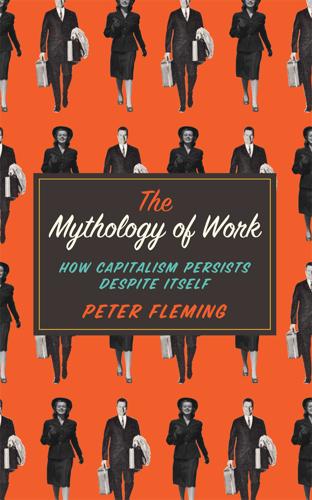
Mythology of Work: How Capitalism Persists Despite Itself
by
Peter Fleming
Published 14 Jun 2015
I hope to demonstrate in the following pages that our workers’ society has little to do with material subsistence, although that doesn’t mean our jobs are any less real in terms of the influence and sway work holds over vast numbers of people around the world. The way work exploits us in post-industrial societies has taken on some specific attributes that this book aims to explore in more depth. Neoliberal class relations are distinct in that they transform exploitation into something that strongly resembles subsidization. We work, pay taxes, take care of the bills and commuting costs for one single reason: not to ‘survive’ but so that the governing elite gains its privileges for nothing.
…
Given the above trends that have generalized some horrible principles in the form of human and social capital, this is more easily said than done. For how might we oppose the ‘I, Job’ function when it is now somehow tied up with our very sense of identity and personal worth? And what would a world without work actually look like? I argue that a new resistance movement is emerging in post-industrial societies and beyond that seeks to put work in its place. Unlike traditional conceptions of employee resistance (such as the strike or sabotage) which often functioned as a platform to demand more, better or fairer work, this novel form of opposition seeks to escape the paradigm of work altogether.
…
Conflict-Seeking Behaviour While it might be tempting to view managerialism as a fundamentally defensive stance given the above analysis, it also displays an extremely strong attraction to conflict. Indeed, I suggest that it literally thrives on antagonism and actively seeks it out or instigates it. One obvious reason for this is the timing of its emergence in post-industrial societies. The birth of managerialism corresponded with the dissolution of labour unions in the 1980s and was crafted as the most suitable social technology for combatting workers and reforming their understanding of the employment relation, especially apropos abandonment, zero-hour contracts, so-called flexible employment arrangements, subcontracting and a stagnating wage packet.
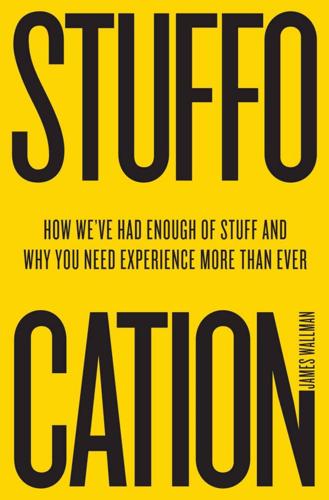
Stuffocation
by
James Wallman
Published 6 Dec 2013
The Story of Stuff Watch the Story of Stuff and read Story of Stuff, Referenced and Annotated Script, which contains evidence for the video’s statements, at www.storyofstuff.org. “Four out of five were materialistic in 1970” Ronald Inglehart, “The Silent Revolution in Europe: Intergenerational Change in Post-Industrial Societies”, American Political Science Review Vol. 65, No. 4, December 1971. For updates since then, see Ronald Inglehart, “Changing Values among Western Publics from 1970 to 2006”, West European Politics Vol. 31, Nos. 1–2, January–March 2008; also, the World Values Survey (www.worldvaluessurvey.org).
…
I have Martin Raymond to thank for introducing me to the field of forecasting, and teaching me a great deal of what I know about it. For good examples of forecasting from the past, take a look at two prescient texts: Alvin Toffler, Future Shock (New York: Random House, 1970), and Daniel Bell, The Coming of Post-Industrial Society (New York: Basic Books, 1973). CHAPTER TWO The Original Mad Men and the Job of Creating Desire To understand where the ideas came from that influenced the original Mad Men – people like Edward Bernays and Earnest Elmo Calkins and Christine Frederick – read Wilfred Trotter, Instincts of the Herd in Peace and War (London: Macmillan, 1916); Gustave Le Bon, The Crowd: A Study of the Popular Mind (London: Unwin, 1903); Edward Bernays, Propaganda (New York: H Liveright, 1928, IG Publishing, 2005 edition); Edward Bernays, Crystallizing Public Opinion (New York: Liveright, 1923); Stuart Ewen, Captains of Consciousness (New York: McGraw-Hill, 1976); Stuart Ewen, PR!
…
My reading, of course, is that conspicuous living is replacing conspicuous consumption in its importance for our status and our lives. Is Experientialism the Answer to Stuffocation? Ron Inglehart Again, Ron Inglehart, “The Silent Revolution in Europe: Intergenerational Change in Post-Industrial Societies”, American Political Science Review Vol. 65, No. 4, December 1971. To see the shift away from materialistic values, see the World Values Survey (www.worldvaluessurvey.org). The changing make-up of our economy Compare the type of items in Simon Kuznets, National Income, 1929-32 (Cambridge, MA: NBER, June 1934) with those in today’s economies.
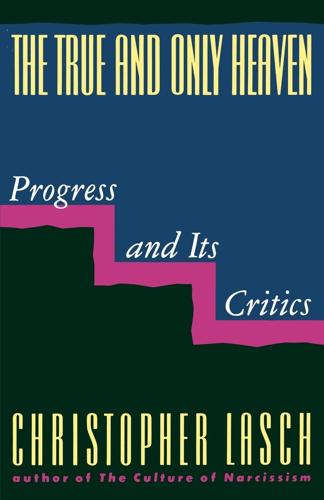
The True and Only Heaven: Progress and Its Critics
by
Christopher Lasch
Published 16 Sep 1991
"Reversionists" like Barry Goldwater and George Wallace "yearned for the simple, ordered society of the small town," while the left developed its own version of the "politics of nostalgia," based on "bucolic romanticism," an "exaggerated veneration of pre-technological societies," and an "exaggerated contempt for science and technology." In Toffler's view, both left and right harbored a "secret passion for the past." A historian, Peter Clecak, claimed in I983 that the "theme of nostalgia dominated popular culture" in the seventies and early eighties. "Caught in the transition from industrial to post‐ industrial society, Americans in large numbers felt themselves losing their psychological, social, and moral bearings." They sought solace in a "thoughtless clinging to the social past," even though "such behavior makes adaptation to present realities difficult if not impossible." The Frozen Past Even those who took a more sympathetic view of the "nostalgia boom" shared the prevalent confusion of nostalgia with conservatism, the age‐ old opposition to change.
…
In The Cultural Contradictions of Capitalism (1976), Bell argued that the nihilistic hedonism celebrated by adversarial intellectuals undermined the work discipline required by capitalism (though he also argued, well beyond the limits of the neoconservative consensus, that capitalism itself encouraged hedonism and was thus at war with itself). In The Coming of Post-Industrial Society (1973), however, "new men" referred to the "technical and professional intelligentsia," whose skills had become essential to the maintenance of an "information society." * In general, neoconservatives took a kindlier view of the new class when they identified it with scientific and technical expertise than when they identified it with cultural radicalism.
…
In the upper reaches of this new elite—that is, in the scientific community—men hold significantly different values [from] those authorizing economic self-aggrandizement, which could become the foundation of the new ethos for such a class." Unfortunately the ethic of professionalism had to compete for the allegiance of the "knowledge class" with the "apocalyptic, hedonistic, and nihilistic" ethic promoted by literary modernism and popularized by the counterculture. In the closing pages of The Coming of Post-Industrial Society, Bell argued that "these anti-bourgeois values ... go hand in hand with the expansion of a new intellectual class huge enough to sustain itself economically as a class.... This new class, which dominates the media and the culture, thinks of itself less as radical than 'liberal,' yet its values, centered on 'personal freedom,' are anti-bourgeois
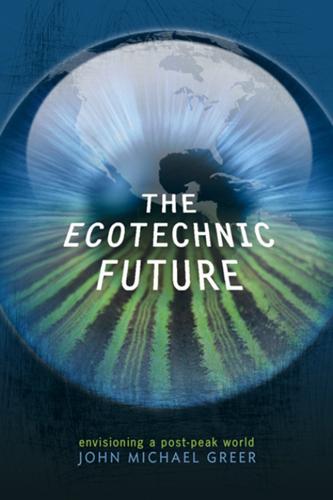
The Ecotechnic Future: Envisioning a Post-Peak World
by
John Michael Greer
Published 30 Sep 2009
For the following paragraphs I have drawn extensively on Bryan WardPerkins, The Fall of Rome: And the End of Civilization, Oxford University Press, 2005. Chapter Eight: Work 1. Energy Information Administration, Annual Energy Review, Energy Information Administration, 2007. 2. Daniel Bell, The Coming of Post-Industrial Society: A Venture in Social Forecasting, Basic Books, 1973. 3. See, for example, Mary Carruthers and Jan M. Ziolkowski, eds., The Medieval Craft of Memory: An Anthology of Texts and Pictures, 2002; and Frances Yates, The Art of Memory, Routledge and Kegan Paul, 1966. 4. The American Radio Relay League (ARRL) website atarrl.org is the best online introduction to amateur radio.
…
Greer, The Long Descent pp. 182–187. 3. See Lewis Mumford, The Myth of the Machine Volume One: Technics and Human Development, 1967 and The Myth of the Machine Volume Two: The Pentagon of Power, 1972, Harcourt, Brace and World; and Theodore Roszak, Where the Wasteland Ends: Politics and Transcendence in Post-Industrial Society, Doubleday, 1972. 253 254 T he E cotechnic F u t u re 4. See, for example, Derrick Jensen and George Draffan, Welcome to the Machine, Chelsea Green, 2004. 5. A standard history is William Kneale and Martha Kneale, The Development of Logic, Oxford University Press, 1962. 6. D. T. Mason, “Appropriate ecology: a modest stress-strain proposal.”
…
. ——— and Mary Catherine Bateson, Angels Fear: Towards an Epistemology of the Sacred, Macmillan, 1987. Becker, Peter W., “The role of synthetic fuel in World War II Germany,” Air University Review, July-August 1981 (online edition, airpower.maxwell.af.mil). Beckford, James A., New Religious Movements and Rapid Social Change, SAGE Publications, 1986. Bell, Daniel, The Coming of Post-Industrial Society: A Venture in Social Forecasting, Basic Books, 1973. Bell, Graham, The Permaculture Garden, Thorsons, 1994. Brand, Stewart, How Buildings Learn: What Happens After They’re Built, Viking, 1994. ——— ed., The Next Whole Earth Catalog, Rand McNally, 1980. Brierley, Corale L., et al., Coal: Research and Development to Support National Energies Policy, National Academies Press, 2007.
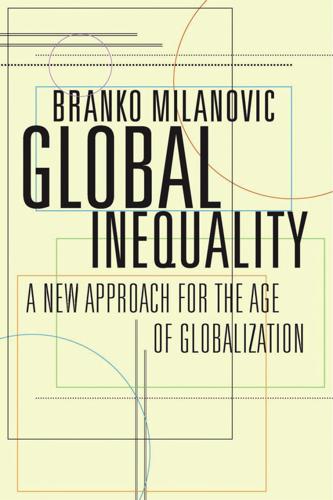
Global Inequality: A New Approach for the Age of Globalization
by
Branko Milanovic
Published 10 Apr 2016
The books of the late 1960s and early 1970s see the world of the future as being ever more dominated by behemoth companies and expanding monopolies, and they predict a widening gulf between shareholders and managers, with the latter having the upper hand (examples are John Kenneth Galbraith’s The New Industrial State [1967], Lester Brown’s The World Without Borders [1972], and Daniel Bell’s The Coming of Post-Industrial Society [1973]). They all note similarities in the primacy of technology in both the United States and the Soviet Union. Gigantism in the USSR seemed to be a response to the same technological requirements that were observed in the United States: management of complex systems needed to be left in the hands of the best and the brightest, with help from the state.
…
Dismal forecasting of the 2008 global financial crisis, even once it had started, is documented in Wieland and Wolters (2012). 2. It is also remarkable that the writers of this period were unable to define the “new society” except negatively, that is, by what it no longer was. Hence, the proliferation of “post” prefixes in Bell’s Coming of Post-Industrial Society (1973): a cursory review reveals “post-industrial,” “post-bourgeois,” “post-Marxist,” “post-capitalist,” and “post-scarcity.” 3. Limits to Growth (1972) was also the first report of the Club of Rome. The second report, Mankind at the Turning Point (1974), by Mihailo Mesarovic and Eduard Pestel, was even more quantitative and ostensibly scientific. 4.
…
Bartels, Larry M. 2010. Unequal Democracy: The Political Economy of the New Gilded Age. Princeton: Princeton University Press. Beitz, Charles. 1999. “International Liberalism and Distributive Justice: A Survey of Recent Thought.” World Politics 51: 269–296. Bell, Daniel. 1973. The Coming of Post-Industrial Society: A Venture in Social Forecasting. New York: Basic Books. Beloff, Max. 1984. Wars and Welfare: Britain, 1914–1945. Baltimore: E. Arnold. Bértola, Luis, Cecilia Castelnovo, Javier Rodríguez, and Henry Willebald. 2009. “Income Distribution in the Latin American Southern Cone during the First Globalization Boom and Beyond.”

The Warhol Economy
by
Elizabeth Currid-Halkett
Published 15 Jan 2020
Their success lies less in the differences in what they produced (whether computers, accounting spreadsheets, or designer clothing) and more in how they produced it. In 1973, just before the collapse of the manufacturing economy, Harvard sociologist Daniel Bell wrote a seemingly clairvoyant text on the transformation of the global economy. In The Coming of a Post-Industrial Society, Bell argued that the base of the economy would shift radically, from manufacturing to information, science, and technology, and be oriented toward providing services. In Bell’s view, post-industrialism would become the overarching framework under which society and economy would operate. Look again at the industries that were doing so well while the manufacturing economy declined—science, technology, finance, entertainment, and so on—and consider how radically they differ from the manufacturing that drove the American economy—the world economy, really—for the previous one hundred or so years.
…
G. Smith, and P. J. Taylor. (1999). “A Roster of World Cities.” Cities 16, 6: 445–58. Becker, Gary. (1975). Human Capital. New York: Columbia University Press. Becker, Howard. (1982). Art Worlds. Berkeley/ Los Angeles: University of California Press. Bell, Daniel. (1973). The Coming of Post-Industrial Society: A Venture in Social Forecasting. New York: Basic Books. ———. (1976). The Cultural Contradictions of Capitalism. New York: Basic Books. Bender, Thomas. (1988). New York Intellect: A History of Intellectual Life in New York City from 1750 to the Beginnings of Our Own Time. Baltimore: Johns Hopkins University Press.
…
See also marketing; nightlife Center for an Urban Future (CUF), 167–68 CEOs, 54–55, 164, 182 Chaiken, 142, 146 Chamberlain, Lisa, xix Chanel, Coco, 22, 160 Charleston, 55 Chase, Edna Woolman, 23 Chelsea, 41, 99–100, 106, 158, 175, 179 Chicago, 113; creative culture and, 45, 54; financial sector and, 56; location quotient (LQ) and, 55; mega-bonuses of, 56; tastemakers and, 181, 185 China, 51 Chinatown, 42, 165 Chomsky, Noam, 121 Christian Dior, xiii, 6, 128 Christie’s, 37, 224n21 Chronicles (Dylan), 88 Chuck D, 121, 127 Cielo, 96 Citibank, 175 civil rights movement, 28 Clap Your Hands Say Yeah, 92, 137–39, 187–90 Clark, Larry, 43 Clark, Terry, xvii, 95, 104, 106–7, 164, 167 Claw, 91, 114, 116, 121, 151 Clemente, Francesco, 1 Cleveland, 46, 67 clubs, 1–2; fashion and, 128–29; high prices in, 11–12; industry parties and, 94–95; networking in, 94–99; public policy and, 172–77; rent and, 172–73. See also nightlife; specific clubs Cobain, Kurt, 2 Coffee Shop, 96 Cole, Kenneth, 40 Coleman, 81 Colt45, 105, 136 Coltrane, John, 27 Columbia Records, 89, 97 Columbia University, 75, 127, 178 Combs, Sean John (Puff Daddy), 40, 125–26, 150 Coming of a Post-Industrial Society, The (Bell), 68 commodification, 227n1; cultural analysis of, 36–42, 121–26; Fairey and, 117–21 communications services, 53 Conley, Dalton, xviii Connecticut, 55 Connecticut College, 137 Connolly, James, xvii–xviii, 163 contemporary art, 37 Cope, 123 Cornell, Joseph, 26 Cosmopolitan, 142 Costa, Francisco, 15, 79, 91, 96, 140–41, 156–57 Costume Institute, xiii, 7, 23, 116, 160 Cotton Club, 22 Council of Fashion Designers of America (CFDA), 83 Crane, Diana, 135 creative class, 46 creative destruction, 127 Creative Industries: Contracts Between Art and Commerce (Caves), 77 Creative Time, 81 creativity: artists-in-residence and, 178–81; blending and, 126–29; career path flexibility and, 150–53; commodification of, 36–42, 115–26, 227n1; as concept, 45; critical mass of, 89–93; economic issues and, 45–46; education and, 170–72; environment for, 12–14; exchange nodes and, 93–94, 107–10; flexible career path and, 150–53; formal institutions and, 99–101; Great Depression and, 24; Homebrew Computer Club and, 72–73, 88; hyper-socialization and, 79; interdependency of, 34–35; location and, 45; networking and, 75–86; new ideas and, 13; nightlife and, 31–34; policy for, 11; public funding and, 177–78; recession and, 29–30; reputation and, 77–78; role of, 2–7; scene importance and, 102–10; social life of, 5–6; spatially bound chaos and, 111–13; spontaneity and, 11; supporting, 172–77; symbolic capital and, 35, 40; tax initiatives and, 177–78; weak ties and, 75–86; workings of, 77–78 credibility, 124–26, 145–46 crime, 74, 123–24, 132–33, 151 Cultural Institutions Group, 177–78 cultural producers, 2; blending and, 126–29; branding and, 156–57; buzz creation and, 130–32, 139; clustering and, 156–57, 229n16; education and, 169–72; field theory and, 224n21; gatekeepers and, 130–37; tastemakers and, 154–85 (see also tastemakers); word-of-mouth marketing and, 137–40 culture: American style and, 23; blending and, 126–29; buzz creation and, 130–32, 139; commodification of, 36–42, 115–26, 227n1; as concept, 45; critical mass of, 89–93; Department of Cultural Affairs (DCLA) and, 165, 177–78; drugs and, 33; economic issues and, 7, 11–12, 182–83; employment from, 49–51; gatekeepers and, 5–8, 107–10, 130–37; Harlem Renaissance and, 22; importance of, 48–51; interdependency of, 10–11; lessons from, 181–85; literature and, 18–20; New York City and, 1–2; peer review and, 140–45; performance and, 4–5; policy and, 12–14; post–World War II era and, 24–28; production of, 126–40; punk, 45 (see also punk culture); recession and, 28–30; refugees and, 18, 21, 24; role of, 2–7, 10; scene importance and, 102–10; symbolic capital and, 40; taste and, 4–6; theater and, 20; weak ties and, 75–86; Works Progress Administration (WPA) and, 23–24 Dada, 18, 20–21, 26, 44 Dali, Salvador, 24 dancing, 166; deal making and, 89; Double Seven and, 87; fashion and, 128–29; Lotus and, 87–88.
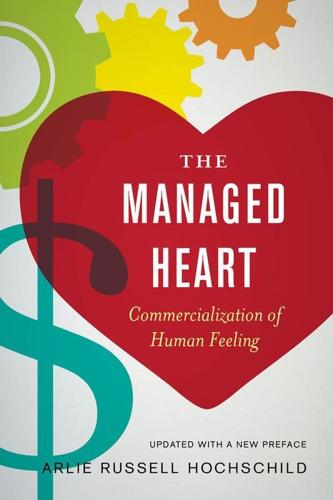
The Managed Heart: Commercialization of Human Feeling
by
Arlie Russell Hochschild
Published 1 Nov 1983
Those who discuss labor often comment that nowadays most jobs call for a capacity to deal with people rather than with things, for more interpersonal skills and fewer mechanical skills. In The Coming of Post-Industrial Society (1973), Daniel Bell argues that the growth of the service sector means that "communication" and "encounter" -"the response of ego to alter and back" -is the central work relationship today.* As he puts it, "The fact that individuals now talk to other individuals, rather than interact with a machine, is the fundamental fact about work in the post-industrial society." • Jobs that Bell includes in the service sector are those in transportation and utilities, distribution and trade, finance and insurance, professional and business services, jobs deriving from demands for leisure activities (recreation and travel), and jobs that deal with communal services (health, education, and government).
…
In Diana Leonard Barker and Sheila Allen (eds.), Dependence and Exploitation in Work and Marriage. London and New York: Longmans. Beck, Aaron 1971 "Cognition, affect, and psychopathology." Archives of General Psychiatry 24:495 - 500. Becker, Howard S. 1953 "Becoming a marihuana user." American Journal of Sociology 59: 235-242. Bell, Daniel 1973 The Coming of Post-Industrial Society. New York: Basic Books. Bern, Daryl, and Andrea Allen "On predicting some of the people some of the time: 1974 Bibliography 289 the search for cross-situational consistencies in behavior." Psychological Review 81 :506-520. Bendix, Reinhard 1952 "Complaint behavior and individual personality."

The Age of Entitlement: America Since the Sixties
by
Christopher Caldwell
Published 21 Jan 2020
were cabineted in wood: See, e.g., the ads for Motorola and RCA TVs in Jim Heimann, ed., All-American Ads of the 60s (Cologne, Germany: Taschen, 2002), 385. “has been carried largely”: Peter F. Drucker, The Age of Discontinuity: Guidelines to Our Changing Society (New York: Harper & Row, 1968), 3–9. “post-industrial” problems: Theodore Roszak, Where the Wasteland Ends: Politics and Transcendence in Post-Industrial Society (Garden City, New York: Doubleday, 1972), xxvii. City Hall Plaza: Stephen Carr, Mark Francis, Leanne G. Rivlin, and Andrew M. Stone, Public Space (Cambridge, England: Cambridge University Press, 1992), 88–90. “Go right to it”: Chalmers M. Roberts, “President Approves D.C. Redevelopment,” Washington Post, March 6, 1952.
…
Huntington, “The Bases of Accommodation,” Foreign Affairs, July 1968. “mad rationality”: Theodore Roszak, The Making of a Counter Culture (Berkeley: University of California Press, 1995 [1968]), 78. Roszak attributes the phrase to Lewis Mumford. “lunatic realism”: Theodore Roszak, Where the Wasteland Ends: Politics and Transcendence in Post-Industrial Society (Garden City, New York: Doubleday, 1972), xxix. “We are what went wrong”: Loren Baritz, Backfire: A History of How American Culture Led Us into Vietnam and Made Us Fight the Way We Did (Baltimore: Johns Hopkins University Press, 1998 [1983]), 349. “I want to leave”: Lloyd C. Gardner, Pay Any Price: Lyndon Johnson and the Wars for Vietnam (Chicago: Ivan R.
…
New York: Alfred A. Knopf, 2010. Rosenblatt, Roger. Coming Apart: A Memoir of the Harvard Wars of 1969. Boston: Little, Brown, 1997. Roszak, Theodore. The Making of a Counter Culture. Berkeley: University of California Press, 1995 [1968]. ———. Where the Wasteland Ends: Politics and Transcendence in Post-Industrial Society. Garden City, New York: Doubleday, 1972. Russell, Bertrand. The Impact of Science on Society. London: George Allen & Unwin, 1952. ———. Marriage and Morals. New York: Horace Liveright, 1929. Salis, J. R. von. Weltgeschichte der neuesten Zeit, vol. 1. Zürich: Orell Füssli Verlag, 1955. Slater, Philip.

Head, Hand, Heart: Why Intelligence Is Over-Rewarded, Manual Workers Matter, and Caregivers Deserve More Respect
by
David Goodhart
Published 7 Sep 2020
Moreover, they may add, the so-called Flynn effect (named after the New Zealand academic James Flynn) shows that everyone is getting brighter—that average IQ levels have been rising throughout the twentieth century as a result of improved living conditions and human minds adapting to a more demanding cognitive environment.1 They argue that as long as the social biases mentioned above are ironed out, through spending on education and a sustained effort to give people of all backgrounds a fair chance at joining the cognitive class, all will be well. This book disagrees. In the tradition of Michael Young’s The Rise of the Meritocracy, his dystopian satire on rule by the cognitive elite, Daniel Bell’s The Coming of Post-Industrial Society: A Venture in Social Forecasting, and Charles Murray’s Coming Apart: The State of White America, 1960–2010—a socialist, a centrist, and a conservative—it argues that today’s “achievement society” has replaced one system of domination by another. It is true that the knowledge created by human reason continues to drive civilization, and in our data-based economies this is not about to decline in importance.
…
Autor, David, “Work of the Past, Work of the Future,” Richard T Ely Lecture to the annual meeting of the American Economic Association (2019). Baldwin, Richard, The Globotics Upheaval: Globalization, Robotics and the Future of Work (London: Weidenfeld & Nicolson, 2019). Bell, Daniel, The Coming of Post-Industrial Society: A Venture in Social Forecasting (London: Penguin, 1976). Bishop, Bill, The Big Sort: Why the Clustering of Like-Minded America Is Tearing Us Apart (New York: Houghton Mifflin Harcourt, 2008). Blanden, Jo, Paul Gregg and Stephen Machin, Intergenerational Mobility in Europe and North America: A Report Supported by the Sutton Trust (Centre for Economic Performance, London School of Economics/Sutton Trust, 2005).
…
Heartlands, 17–18 “leaving” mentality and, 126–31, 164 political cognitive domination and, 13–14, 160 “Somewheres” in, 12, 19–20 technology of connection and, 19 see also urbanization Appiah, Kwame Anthony, 3, 86–87 apprenticeships: in France, 117 in Germany, 105, 112, 119–21, 198–99 globalization impact on, 111–17 in the UK, 15, 40, 47, 57–58, 106, 109–14, 119, 170–71, 200–201 in the US, 112–13 see also vocational training architecture, 184–85, 288–89 Arnold, Matthew, Culture and Anarchy, 49 artificial intelligence (AI) and robotics, 23–25, 255–58, 270, 272–73, 298 Arum, Richard, Academically Adrift (with Roksa), 123, 129 Ashton, David, The Global Auction (with Brown and Lauder), 23, 144, 258–60 assortative mating, 79–83 Atlas Respite and Therapy (UK), 238–39 Attenborough, David, Blue Planet, 280 Austen, Jane, 184 Austria, 24, 98, 99, 213 Autor, David H., 135–36, 138 baby boomer generation, 10, 79–80, 198, 222 baccalauréat (France), 35, 117–18 Baldwin, Richard, The Globotics Upheaval, 25, 134–35, 253, 258, 262 Balls, Ed, 174 Bank of England, 255–58, 298 Baumol, William, 25 Baxendale, Toby, 201 BBC/BBC Radio, 31, 110, 166, 174, 178, 191 Beasley, Christine, 147 Becker, Gary, 136 behavioral genetics movement, 72–75, 83, 86, 88 Bell, Daniel, The Coming of Post-Industrial Society, 7, 211 Belsky, Daniel, 75 Bentham, Jeremy, 45 Bezos, Jeff, 14 Binet-Simon scale, 64 Blair, Tony, 103, 163, 167, 168 Blinder, Alan S., 166 Bloodworth, James, The Myth of Meritocracy, 75 Bloomsbury Group, 53 Botton, Oli de, 300 Bovens, Mark, Democracy (with Wille), 95, 155–58, 169, 177–78 Boys Smith, Nicholas, 288–89 Breen, Richard, 81 Brexit Britain: alienation and, 276 Anywhere-Somewhere divide, 12–20, 287–88 immigration policy and, 168, 169 job status decline and, 213–14 pushback against cognitive class, 10, 32, 154–55, 160–61, 164–66, 185–86, 213–14 British Cohort Study (1970), 76 British Red Cross, 222–23 British Social Attitudes (BSA) survey, 140, 209–10, 212, 219, 226n, 230 Brooks, David, 276 Brown, Gordon, 25, 174 Brown, Phillip, The Global Auction (with Lauder and Ashton), 23, 144, 258–60 Brown, Tara Tiger, 195–96 Building Beautiful Commission, 289 Bukodi, Erzsébet, 75–76 Bunting, Madeleine, Labours of Love, 27, 217, 225, 227, 233, 246 Burt, Cyril, 100 Butler, Joseph, The Analogy of Religion, 42 Byng, John, 52 Cameron, David, 156, 170 Campbell, Rosie, 171–72 Caplan, Bryan, The Case Against Education, 123, 129 care sector, see Heart (care) work Caregivers UK, 224 Carer’s Allowance (UK), 293 Carl, Noah, 165n Carnegie Mellon University, 282 Carnes, Nicholas, 172 Carr, Nicholas, The Shallows, 22 Case, Anne, 206–7, 220 Cavendish, Camilla, 240, 242 Cavendish Laboratory (UK), 45 CBI/Pearson Education and Skills Survey, 198 CCTV, 185 Centre for Time Use Research, 242–43, 246–47 centrifugal forces, x, 278 centripetal forces, x, 278 Chabris, Christopher, 67, 78–79 Charman, Ken, 253–55 Chartered Institute of Personnel and Development (UK), 145–46 Cheese, Peter, 145–46 child-rearing, 224–25, 227, 229–30, 242, 243 China, 39, 85, 259 Churchill, Winston, 194 Cinderella sectors, xii, 162, 241 CIPD, 209 civil service, 31, 41, 43 Clarke, Kenneth, 102 Clinton, Bill, 111, 161–62 Clinton, Hillary, 152, 215 Cobb, Jonathan, The Hidden Injuries of Class (with Sennett), 190 Coe, Robert, 124 Cognitive Abilities Test (CAT), 65 cognitive aptitude, 55–89 assortative mating and, 79–83 behavioral genetics movement and, 72–75, 83, 86, 88 “cognitive elite” and, 78–79 correlation with socioeconomic status, 78–82, 83–84 eleven-plus (UK), 20, 65–66, 82, 100, 196 as gold standard of human esteem, 3–5, 11–12, 28 as innate vs. learned, 55–56, 63, 68, 71–75 measuring, 56, 61–71, see also IQ/IQ-type tests in meritocracy, 75–89 nature of, 55–57, 61, 70–71 need for cognitive diversity and, 88–89, 281–84 selection into cognitive classes, 75–84, 87–88, see also cognitive class social mobility and, 75–84 wisdom and, 283, 302–3 see also intelligence cognitive class, 31–53 assortative mating and, 79–83 cognitive elite (Herrnstein and Murray), 78–79 cognitive entrepreneurs and, 33 creative class cohort, 28, 223–25, 256–58, 270, 299 economic cognitive domination and, see knowledge economy education trends and, 36, 43–53 educational cognitive domination and, see college/university education family background and, 48, 115, 118, 125–26, 156 in future of knowledge economy, 143–44, 253–74 high school graduation (US) and, 14–15, 35, 40, 51, 95–96, 98–99, 116, 118, 124 high-skill occupations, 97, 135–36, 138, 148, 259, 268–71 historical emergence of, 39–53 industrialization and, 32, 33–35, 41–42, 45, 51–52, 253 levels of, 13–15 low-skill occupations, 25–26, 120–21, 135–36, 152, 198, 202–3 methods of entering, 35 middle-skill occupations, 107–11, 129–31, 135–36, 150–52, 198, 209 need for cognitive diversity, 88–89, 281–84 political, see political cognitive domination in postindustrial society, 32, 35–39 professions/professional exams, 39–43, 44, 53 selection into, 75–84, 268–71 shift in cognitive class hegemony, 20–29, 32–33 size in 1930s, 53 social selection based on intelligence, 34–35, 39–41, 46–53 value divide and, 32, 36, 279–84 cognitive sector, see Head (cognitive) work College Board, 66 College of Policing (UK), 148–49 college/university education, 43–53, 93–131 assumptions about, 93–94 brain/gene drain and, 125–26 community colleges (US), 96, 102, 112–13, 115–16 corruption in admissions process, 6n creeping credentialism and, 15, 94–97, 99, 122–24, 130, 271–72 demographic trends and, 131 effectiveness of, 14, 123–25, 129, 130–31, 171–74 era of educational selection, 96–97 expansion of, 99, 100–111, 113–17 family background and, 115, 118, 125–26, 156 funnel for single elite, 5, 36, 52–53, 126, 156 future of, 298 generalist vs. specialized, 38, 47, 49–50, 53, 97–99, 105, 113–17, 272, 299 “genetics of success” and, 75 GI Bill (1944, US), 43–44, 66, 96, 115 globalization and, 259 graduate pay premium, 105, 116–17, 136, 139, 145, 152, 262–64 “graduatization”/income divergence of the labor market, 133–52, 234–39 grandes écoles (France), 44, 48, 81, 102, 118, 141, 156 mass higher education and, 36, 96–98, 100–111, 113–17 meritocracy based on, 6–12 need for cognitive diversity and, 283 overeducation and, 266–67 oversupply of graduates, 94–95, 121–26, 171–72, 268–71 Oxford/Cambridge (UK) and, 41–42, 44–52, 84, 97–98, 101–2, 156, 172–73, 263, 264 political cognitive domination and, 172–74 polytechnics/“new universities” (UK), 98, 100–102, 105–8, 115, 119, 263 postgraduate degrees, 78, 116, 122, 148, 191–92, 212, 258, 266 reversal of trends in, 24, 268–71 Russell Group (UK), 80, 102, 107, 125, 130, 263 SAT (US) and, 20, 52, 64, 65–68, 80, 114–15, 117, 287 signaling effect and, 94–96, 121–26, 267, 271 social mobility and, 6, 103, 105, 125–31, 253–55, 268–71 social selection based on intelligence, 34–35, 39–41, 46–53 student debt and, 14, 104, 115, 116, 268, 297 technician gap and, 107–11, 130–31, 135–36 tuition ceiling in UK, 104, 106–7, 109, 116, 119 in the UK, 41–53, 80–81, 100–107, 116, 262–63 in the US, 48–49, 50, 80, 112–17, 264 see also knowledge economy Collins, Randall, 15 community colleges (US), 96, 102, 112–13, 115–16 Conley, Dalton, 83 construction industry, 197–98, 200–201 Cook, Philip J., The Winner-Take-All Society (with Frank), 142 Corby, Paul, 196–97 Covid-19 crisis, ix–xiii digital giants and, xiii, 16 educational mobility and, 128, 130–31 failure to prepare for, 20 gender division of labor and, xii globalization and, ix–x Hand (manual) work and, 7, 23, 26, 203, 277–78 Head (cognitive) work and, 7, 23, 62, 277–78 Heart (care) work and, 7, 23, 217, 225, 241, 245, 277–78 Internet and, 294, 298–99 lockdown period, xi, 32–33, 298–99 rebalancing of Hand, Head, and Heart work, ix–xiii, 4–5, 20, 21–22, 277–78 Cowen, Tyler, Average Is Over, 273–74 Cowley, Philip, 171–72 Cox, Brian, 299 craft skills, 114, 194, 195, 256–57, 294–96, 299–300, 301–2 Crawford, Matthew B., The Case for Working with Your Hands, 17, 47–48, 114, 189, 195, 275 creative class cohort, 28, 223–25, 256–58, 270, 299 Crosland, Tony, 100, 101 Darwin, Charles, 42 de Gaulle, Charles, 118 Deary, Ian, 165n death penalty, 160–61 deaths of despair (Deaton), 10–11, 136, 206–7, 220, 222 Deaton, Angus, 10–11, 136, 206–7, 220, 222 Dench, Geoff, 164 Dewey, John, 49, 98 Diamond, Jared, 299 digital giants: Covid-19 crisis and, xiii, 16 employment trends and, 25 impact of Internet on intelligence, 22 technology of connection and, 19 “winner-takes-all” markets and, 14, 33, 142, 272, 286 digital Taylorism, 23–25, 144, 258–61 Direct Seafoods, 201 Dodd-Frank Act (2010, US), 284 Duckworth, Angela, 67 Dweck, Carol, 60, 67 early-years education, 15, 73, 217, 218, 242 East India Company, 41 École Nationale d’Administration (ENA, France), 48, 118, 156 economic cognitive domination, see knowledge economy education: college/university, see college/university education early-years, 15, 73, 217, 218, 242 grammar school, 46, 58, 65, 82, 98, 100 lifelong learning, 95, 107–9, 296–301 secondary, see secondary education STEM education, 101–2, 108, 111, 236, 265, 268 vocational, see vocational training Education Acts (UK), 43–44, 46, 98, 100 Educational Testing Service (ETS), 52 Einstein, Albert, 58, 275 elder care, see adult social care eleven-plus (UK), 20, 65–66, 82, 100, 196 Elias, Peter, 266 Eliot, T.

Utopia for Realists: The Case for a Universal Basic Income, Open Borders, and a 15-Hour Workweek
by
Rutger Bregman
Published 13 Sep 2014
For an overview of attitudes in various countries, see: Robert Skidelsky and Edward Skidelsky, How Much is Enough? The Love of Money and the Case for the Good Life (2012), pp. 29-30. 50. For an overview, see: Jonathan Gershuny and Kimberly Fisher, “Post-Industrious Society: Why Work Time Will Not Disappear for Our Grandchildren.” Sociology Working Papers. http://www.sociology.ox.ac.uk/working-papers/post-industrious-society-why-work-time-will-not-disappear-for-our-grandchildren.html 51. Richard Layard, Happiness (2005), p. 64. See also: Don Peck, “How a New Jobless Era Will Transform America,” The Atlantic (March 2010). http://www.theatlantic.com/magazine/archive/2010/03/how-a-new-jobless-era-will-transform-america/307919/ 52.
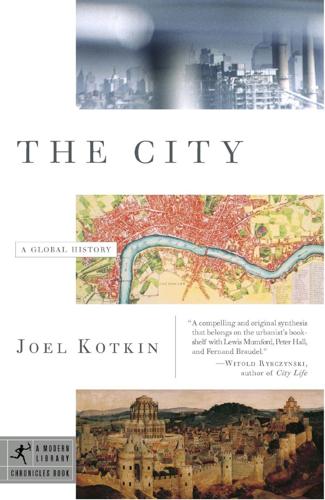
The City: A Global History
by
Joel Kotkin
Published 1 Jan 2005
Stern, “How Dagger John Saved New York’s Irish,” City Journal (Spring 1997). 56. Eli Lehrer, “Broken Windows Reconsidered”; Charles Zwingmann and Maria Pfister-Ammende, Uprooting and After (New York: Springer-Verlag, 1973), 25; Schorske, op. cit., 109–11. 57. Daniel Bell, The Coming of Post-Industrial Society: A Venture in Social Forecasting (New York: Basic Books, 1973), 367, 433; Arthur Herman, The Idea of Decline in Western History (New York: Free Press, 1997), 312, 348–57. 58. Lenn Chow, Des Verma, Martin Callacott, and Steve Kaufmann, “Ethno-Politics Threaten Canadian Democracy,” National Post, March 31, 2004; Stephen Toulmin, Cosmopolis: The Hidden Agenda of Modernity (Chicago: University of Chicago Press, 1992), 26. 59.
…
Of somewhat more recent vintage but also quite prophetic are Manuel Castells’s The Information Age: Economy, Society and Culture, Volume III: End of Millennium (Blackwell Publishers, 1998); Jacques Ellul’s The Technological Society, translated by John Wilkinson (Vintage, 1967); Taichi Sakaiya’s The Knowledge-Value Revolution, or, A History of the Future, translated by George Fields and William Marsh (Kodansha, 1985); Daniel Bell’s The Coming of Post-Industrial Society: A Venture in Social Forecasting (Basic Books, 1973); and works by Alvin and Heidi Toffler, and most particularly Alvin Toffler’s The Third Wave (William Morrow, 1980). THE MODERN LIBRARY EDITORIAL BOARD Maya Angelou A. S. Byatt Caleb Carr Christopher Cerf Charles Frazier Vartan Gregorian Richard Howard Charles Johnson Jon Krakauer Edmund Morris Azar Nafisi Joyce Carol Oates Elaine Pagels John Richardson Salman Rushdie Oliver Sacks Arthur M.

Capitalism 4.0: The Birth of a New Economy in the Aftermath of Crisis
by
Anatole Kaletsky
Published 22 Jun 2010
Peter Groenewegen, “Thomas Carlyle, ‘The Dismal Science,’ and the Contemporary Political Economy of Slavery,” History of Economics Review 34 (Summer 2001): 74-94. 6 Galbraith quoted in The Observer, London, April 3, 1977. 7 Deng Xiaoping, “Build Socialism with Chinese Characteristics,” Speech to the Council of Sino-Japanese Non-Governmental Persons (June 30, 1984), printed in William De Bary and Richard Lufrano, eds., Sources of Chinese Tradition: From 1600 Through the Twentieth Century, vol. 2, 507-510. 8 The key events in computer technology were the introduction of the first standardized IBM personal computers and Intel microprocessors in 1983, the addition of a Graphical User Interface (GUI) to the Apple Macintosh in 1984, the Windows GUI by Microsoft in 1986, and the release in 1990 of Windows 3.0, a much improved GUI developed for the IBM 386 computer. 9 See, for example, Edward Glaeser and Janet Kohlhase, “Cities, Regions and the Decline of Transport Costs,” and Nils-Gustav Lundgren, “Bulk Trade and Maritime Transport Costs: The Evolution of Global Markets,” Resources Policy 22:1-2 (March-June 1996): 5-32. 10 Jeffrey Frankel, “The Japanese Cost of Finance: A Survey,” Financial Management 20:1 (Spring 1991). Chapter Five 1 Quoted in New York Times, October 8, 2006. 2 John Naisbitt, Megatrends. 3 Toffler elaborated and popularized the idea of a post-industrial society. Although this term was invented by the sociologist Daniel Bell in The Coming of the Post-Industrial Society, its relationship to information technology was developed most convincingly by Toffler in his book The Third Wave. Ignored by “serious” academics, Toffler was the only modern Western economist or social scientist to appear in a list of “Fifty foreigners shaping China’s modern development” published by People’s Daily in 2006. http://english.people.com.cn/200608/03/eng20060803_289510.html. 4 Martin Wolf, Why Globalization Works.
…
Available from http://www.bankofengland.co.uk/publications/inflationreport/conf090211.pdf. Bardo, Michael, and Barry Eichengreen, eds. A Retrospective on the Bretton Woods System: Lessons for International Monetary Reform. Chicago: University of Chicago Press, 1993. Bell, Daniel. The Coming of the Post-Industrial Society. New York: Basic Books, 1973. Benedick, Richard. Ozone Diplomacy: New Directions in Safeguarding the Planet. Cambridge, MA: Harvard University Press, 1991. Benen, Steve. “What Has Government-run Health Care Ever Done for Us?” Washington Monthly, July 29, 2009. Bernanke, Ben. “Deflation: Making Sure ‘It’ Doesn’t Happen Here.”
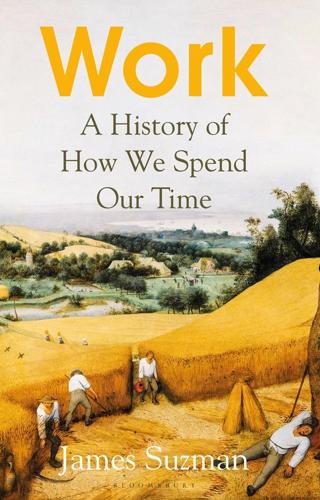
Work: A History of How We Spend Our Time
by
James Suzman
Published 2 Sep 2020
So too did globalisation, as the most labour-intensive industries progressively began losing out to manufacturers operating in geographies where labour was cheaper than in Britain. The rapid expansion of the service sector is thought by many economists to follow on inevitably from large-scale industrialisation. It is also now often considered to be the hallmark feature of ‘post-industrial societies’. This, at least, was the view of Colin Clark, the economist most closely associated with developing the now well-established ‘three sector model’ of the economy. Writing in 1940, Clark accurately predicted the subsequent expansion of the service sector in economies like Britain’s over the following eight decades.
…
Even so, the fact that workplace surveys consistently find more people are dissatisfied with the work they do, suggests that this is often just a coping mechanism – a characteristic of a species whose evolutionary history has been shaped so profoundly by its need for purpose and meaning. Graeber was by no means the first to notice the proliferation of pointless jobs in the burgeoning service sectors that characterise post-industrial societies. The tendency for organisational bureaucracies to balloon is now sometimes referred to as Parkinson’s Law, after Cyril Northcote Parkinson, who proposed it in a tongue-in-cheek article he published in The Economist in 1955. Based on his experiences in the notoriously flabby Colonial Service, Parkinson’s Law states that ‘work inevitably expands to fill the time available for its completion’, and correspondingly that bureaucracies will always generate enough internal work to appear busy and important enough to ensure their continued existence or growth without any corresponding expansion in output.
…
He attributed his illness to work-related stress, and explained to a reporter for the Florida Times-Union that he was especially worried because his combined vacation and sick leave entitlement was only four weeks and his doctor insisted he could not return to work in his frail condition. Graeber was by no means the first to notice the proliferation of pointless jobs in the burgeoning service sectors that characterise post-industrial societies. The tendency for organisational bureaucracies to balloon is now sometimes referred to as Parkinson’s Law, after Cyril Northcote Parkinson, who proposed it in a tongue-in-cheek article he published in The Economist in 1955. Based on his experiences in the notoriously flabby Colonial Service, Parkinson’s Law states that ‘work inevitably expands to fill the time available for its completion’, and correspondingly that bureaucracies will always generate enough internal work to appear busy and important enough to ensure their continued existence or growth without any corresponding expansion in output.

Make Your Own Job: How the Entrepreneurial Work Ethic Exhausted America
by
Erik Baker
Published 13 Jan 2025
Output was expanding, capitalists were growing rich, science was marching onward, and workers were being left behind.28 This prospect was politically explosive. In the early twentieth century, especially in the work of the so-called “Young Intellectuals,” radical writers entertained visions of a post-industrial society no longer organized around the imperative of productive work. Instead, individuals could be liberated to build lives on aesthetic, ethical, or spiritual grounds, free from the constraining logic of monetization.29 As events unfolded, however, the disruption wrought by the advent of the age of surplus came to a significantly less revolutionary resolution.
…
The key books are Drucker, The New Society: The Anatomy of the Industrial Order (New York: Harper, 1950); Landmarks of Tomorrow (New York: Harper, 1959), where the term was coined; and The Age of Discontinuity: Guidelines to Our Changing Society (New York: Harper, 1969). See also John Kenneth Galbraith, The Affluent Society (New York: Houghton Mifflin, 1958); Daniel Bell, The Coming of Post-Industrial Society: A Venture in Social Forecasting (New York: Basic Books, 1976); Fritz Machlup, The Production and Distribution of Knowledge in the United States (Princeton, NJ: Princeton University Press, 1962). 2For an overview of discontent with the “affluent society” in the 1960s, see Howard Brick, Age of Contradiction: American Thought and Culture in the 1960s (Ithaca, NY: Cornell University Press, 1998). 3Theodore Roszak, The Making of a Counter Culture: Reflections on the Technocratic Society and Its Youthful Opposition (New York: Anchor, 1969). 4Henry F.
…
See also entrepreneurial management Management and the Worker (1939), 60 Management: Tasks, Responsibilities, Practices (1973), 193 manufacturing, 27, 34–35, 73, 107, 124, 126, 146, 162, 187, 193–94, 197–98; capital-goods, 28; computer, 148; consumer-goods, 26, 36; corporations, 71; electrification, 27; and employment growth, 28, 161; high-technology, 5; and household economies, 22; mechanized, 29; plants, 195; workers, 4, 23, 71–72, 93, 145, 175, 214–15, 254 Marden, Orison Swett, 33–34, 82, 84 market, 83, 199, 201, 203, 207, 225; analysts, 188, 212; capitalist, 159; demands of, 106; economy, 156; freelance, 205; internal, 134, 193; and investors, 70; and services, 13; “share,” 150, 187, 198; and the state, 92 Market-Based Management (MBM), 182–84 Massachusetts Institute of Technology (MIT), 106–7, 110, 210; Center for International Studies, 119; Center for Urban Studies, 219; and engineering program, 104; Program on Neighborhood and Regional Change, 218; School of Industrial Management, 103–4 mass-market publications, 20–21, 155, 163, 219 Mayo, Elton, 55–57, 59–61, 63, 66, 91, 101 McDonald, Maurice, 165–66 McDonald, Richard, 165–66 McDonald’s, 165–69, 187, 203, 207, 219, 226 military industrial complex, 110 von Mises, Ludwig, 51, 181 modernization, 116, 118, 123, 163–64 modernization theory, 116, 119, 121, 125 Morris, Philip, 195 Morris, William, 49 National Association of Direct Selling Companies, 73 National Association of Manufacturers, 142 National Business League, 129–30 National Commission on Technology, Automation, and Economic Progress, 125–26, 149 National Federation of Business and Professional Women, 26, 79 National Labor Relations Act (1935), 73 National Right to Work Committee (NRTWC), 185–86 National Right to Work Foundation, 257 Negro World, 38 New Age, 153–58 New Age Journal, 153, 158 New Deal, 70, 77, 97–100, 110, 161–62; and anti-monopolists, 75; and democratic capitalism, 92; and liberalism, 69, 128; opposition to, 71, 86; and Norman Vincent Peale, 87–89; planners, 12, 116; and reforms, 69, 73; state, 59; welfare state, 91 New Economy, 204–7, 209, 212–14, 220–22, 224, 232–33, 235, 240 New Right, 15, 161–64, 188 New School, 45 New Thought, 14–15, 19–21, 30–31, 33, 36, 49, 77, 80, 82–87, 164, 222, 242, 248, 253, 258; and Divine Science, 38; and Mental Science, 32 Nisbet, Robert, 100 Noyce, Robert, 146 Occupy Wall Street movement, 250 Pareto, Vilfredo, 57–60, 62, 65 Peale, Norman Vincent, 85–88, 134–35, 164, 177, 210, 245 Pichai, Sundar, 6 Pinchot, Elizabeth, 190–93, 199, 201, 221 Pinchot, Gifford, 190–93, 199, 201, 221 popular psychology, 7–8, 10; literature, 9; and New Thought, 14, 19–20, 86; and self-help, 14 positive psychology, 15, 241–46 post–industrial society, 29, 248, 256 The Practice of Management (1954), 101 Principles of Scientific Management (1911), 41, 67 production, 29, 41, 48, 53, 61, 102, 110–11, 195, 205; and Arab entrepreneurs, 123; of books, 30; and capitalism, 131; employment, 71, 93; expanded, 106; household, 23; and McDonald’s, 165; “problem of,” 69; process, 27, 43–44, 55, 96, 124, 199, 214–15; and rationalism, 59; steel, 187; systems, 202; and Toyota, 207; workers, 109, 152, 204 productivity, 4, 104, 116, 156, 164, 187, 192; and entrepreneurship, 165; growth, 26; improvement of, 9, 27, 42, 63, 144; labor, 9, 27, 30; and Taylorism, 42 psychology, 157; and Andrew Kay, 111; and Arbeitsfreude, 51; and Brandeis University, 110; and David McClelland, 117; and democracy, 103; and Elton Mayo, 55; and entrepreneurship, 117–18, 121; and Hugo Münsterberg, 45; industrial, 44–45, 48–49; and Max Weber, 50; and Northwestern University, 45; personality, 15; scientific, 20, 86, 242; social, 97; and Werner Sombart, 50; worker’s, 47, 50 racism, 80; biological, 116; and neo-racism, 116, 124; white, 81 rationalism, 58–59, 67 Reconstruction Finance Corporation (RFC), 98–99, 110 republicanism, 22–23, 25 Republican Party, 76, 106, 142, 162, 168, 174; National Committee, 175 “right to work,” 185–86 Rockefeller, John, Jr., 44, 46 Rockefeller, Nelson, 123 Rockefeller Foundation, 44–45, 49, 65, 119 routinization, 234–35, 243 Ruskin, John, 49 Sanders, Bernie, 234, 250 San Francisco (CA), 1, 149, 154, 157 Schwartz, Peter, 155 Schwartz, Robert, 158, 191 Schumpeter, Joseph, 59, 101, 257; and Archiv für Sozialwissenschaft und Sozialpolitik, 51; and Capitalism, Socialism, and Democracy, 58; and entrepreneurial history, 65; and entrepreneurship, 52, 58, 61–62, 66, 70, 120, 234; and expertise, 61; and industrial creativity, 70; and L.

Listen, Liberal: Or, What Ever Happened to the Party of the People?
by
Thomas Frank
Published 15 Mar 2016
The Boston area has prospered fabulously as knowledge workers have become the country’s dominant cohort. In every sort of lab-coat and starched-shirt pursuit the city is well-represented: it has R&D; it has law firms; it has investment banks; it has management consulting; it has a remarkable concentration of life-science businesses. The coming of post-industrial society* has treated this most ancient of American cities extremely well. Massachusetts routinely occupies the number one spot on the previously mentioned State New Economy Index, a measure of how “knowledge-based, globalized, entrepreneurial, IT-driven and innovation-based” a place happens to be.
…
* Among other things, the Democrat Cuomo has said that his program for teacher evaluation is “the single best thing that I can do as governor that’s going to matter long-term to break what is in essence one of the only remaining public monopolies—and that’s what this is, it’s a public monopoly.” See Valerie Straus, “Cuomo Calls Public School System a ‘Monopoly’ He Wants to Bust,” Washington Post, October 29, 2014. * “The coming of post-industrial society” is a phrase that was coined, incidentally, by Daniel Bell, a professor at Harvard. * In truth, the “first tech president” was surely Herbert Hoover, a Stanford graduate who was one of the world’s most prominent engineers before becoming president. As secretary of commerce in the 1920s, Hoover took an interest not only in radio but in the brand-new technology of television.

Wealth and Poverty: A New Edition for the Twenty-First Century
by
George Gilder
Published 30 Apr 1981
When one buys a car or a television set, one could be said to acquire transportation or entertainment services, the rents for which are capitalized in the price. Nonetheless, when the term is used in the social sciences, as in an explanation of declining national rates of productivity or in a prediction of the shape of “post-industrial society,” phrases like “the revolution in services,” “the emerging service economy,” and “the low-productivity, people intensive services” refer to two groups of activities that minister to people’s needs without making anything themselves. Schools, hospitals, museums, retail shops, merchandising chains, restaurants, employment agencies, professions, and the like and unlike, comprise the smaller group.
…
As Theodore Levitt of the Harvard Business School wrote,Only recently have some of the traditional service industries and service occupations begun to think industrially. Only recently have they begun to look at “service” with the cognitive style of the industrialist instead of the humanist, much as people began, in the latter eighteenth century, to look at work in the style of the manufacturer rather than the craftsman.... The so-called post-industrial society is not industrially “post.” Industrialization is as possible in the service as in the goods producing industries, in the service occupations as in the craft occupations.5 Perhaps the epitome of the service sector as an inflationary problem is the hospital. In 1950 the average cost per patient per day was $16; by 1979 it had exceeded $200.
…
Speech at University of Rochester, April 9, 1980. Bartlett, Bruce. A Walk on the Supply Side. New Rochelle, NY: Arlington House, Inc., 1981. Becker, Gary. “The Effect of the State on the Family.” Monograph prepared for the Mont Pelerin Society Meetings, September 1978. Bell, Daniel. The Coming of Post-Industrial Society. New York: Basic Books, Inc., 1973. ———. The Cultural Contradictions of Capitalism. New York: Basic Books, Inc., 1975. ———. “The New Class: A Muddled Concept.” Transaction/Society 16 (2) Januray–February 1979. Reprinted in Bruce-Briggs, Barry, ed. The New Class. New Brunswick, NJ: Transaction Books, 1979.

Behemoth: A History of the Factory and the Making of the Modern World
by
Joshua B. Freeman
Published 27 Feb 2018
Left-wing scholars like Mills and Marcuse and many of their followers in the New Left abandoned the idea that the industrial proletariat would act as an agent for progressive social change. While in 1972 there were 13.5 million manufacturing production workers in the United States (more than two million of them working in facilities with 2,500 or more workers), one-time socialist Daniel Bell, a leading sociologist, announced in a book the next year, The Coming of Post-Industrial Society. For Bell and many others, “knowledge workers” or “symbolic analysts” had elbowed aside blue-collar workers to constitute the key economic group. In the late 1960s and early 1970s, there was a brief flurry of political and cultural interest in the discontent of industrial workers—the so-called “blue-collar blues”—but an economic downturn quickly put an end to that.
…
See also George Lipsitz, “The Meaning of Memory: Family, Class, and Ethnicity in Early Network Television Programs,” Cultural Anthropology 1 (4) (Nov. 1986), 355–87. 29.Nelson Lichtenstein, State of the Union: A Century of American Labor ([2002] Princeton, NJ: Princeton University Press, 2013), 148–62, 215–18; U.S. Bureau of the Census, Census of Manufactures, 1972, vol. 1, Subject and Special Statistics (Washington, D.C.: U.S. Government Printing Office, 1976), 68; Daniel Bell, The Coming of Post-Industrial Society; A Venture in Social Forecasting (New York: Basic Books, 1973); Freeman, American Empire, 303–06, 344–49; Metzgar, Striking Steel, 210–23. 30.Anders Åman, Architecture and Ideology in Eastern Europe during the Stalin Era; An Aspect of Cold War History (Cambridge, MA: MIT Press, 1992), 76; Sonia Melnikova-Raich, “The Soviet Problem with Two ‘Unknowns’: How an American Architect and a Soviet Negotiator Jump-Started the Industrialization of Russia: Part II: Saul Bron,” Industrial Archeology 37 (1/2) (2011), 21–22; “History—Chelyabinsk tractor plant (ChTZ)” (accessed Jan. 18, 2016), http://chtz-uraltrac.ru/articles/categories/24.php; New York Times, Feb. 25, 2016; Stephen Kotkin, Steeltown, USSR: Soviet Society in the Gorbachev Era (Berkeley: University of California Press, 1991), xii–xiii, 2, 5. 31.Kate Brown, Plutopia: Nuclear Families, Atomic Cities, and the Great Soviet and American Plutonium Disasters (New York: Oxford University Press, 2013); Lewis H.
…
See social status and class Classic Landscape (Sheeler), 152–53 Cleveland, Ohio, 116, 149, 163–64, 238, 242 Coburn, Alvin Langdon, 149 Cold War mass production in Eastern Europe decentralization and downsizing, 264–65 factory construction, 253–54, 257 model industrial cities, 249–57 Nowa Huta steelworks, 249, 251–65, 253, 255, 387n politicized working class, 257–64 shrinkage of workforce, 264–65 urbanism, 250–51, 254 valorization of industry and workers, 249–50 in Egypt, 268–69 in Germany, 265–67 legacy of giant factories, 320 in Soviet Union automotive industry, 246–48 convergence theory, 226–27 post-WWII reconstruction, 245–46 scientific and atomic cities, 246 tractor industry, 246 Western assistance, 247 in United States convergence theory, 226–27 decentralization and downsizing, 227–28, 235–44, 382n loss of interest in industrial workers, 244–45 military giantism, 228–33 post-WWII sale of plants, 238 productivity increases, 243 shrinkage of workforce, 240–41, 243–45 trade unions and labor organization, 233–42 Colt, Samuel, 123 Columbian Exposition (1893), 85 Coming of Post-Industrial Society, The (Bell), 244–45 Committee for Industrial Organization (CIO), 163–68 Commons, John L., 112 Communist Manifesto, The (Marx and Engels), 42 company housing and villages boardinghouse model, 54, 55, 61–62, 65–66, 74–75 in China, 278, 285–87, 300, 304–5 Eastern European model industrial cities, 249–51, 253–56 iron and steel industry, 103–6 in Soviet Union, 192–93, 208–10, 246, 248, 373n, 385n company housing and villages (continued) textile industry, 18, 20, 53–54, 61–62, 65–66, 74–75, 334n WWII era, 230–32 company stores, 18, 46 compensation and wages, xv in China, 271, 286, 301 company store credit, 46 currency shortages, 18, 46 downward pressure on wages and living standards, 37 Ford Motor Company, 129–30, 132, 145–46 piecework, 6, 65, 108, 176, 178–79, 371n post-WWII, 234 productivity vs., 65–66 raising after bad publicity, 271, 389n reductions in, 65–66, 99–100, 163 sliding scale, 90, 100 truck, 18, 36 Waltham-Lowell system, 60 withholding, 308, 335n women and children, 23 Condition of the Working Class in England, The (Engels), 29–30, 41, 112, 337n Connecticut, 46, 68, 240, 347n Cook, Tim, 296 Cooper, Hugh L., 186 cooperatives, 10, 179, 224 Corliss engines, 80, 81, 350n Corn Laws, 31–32, 41 Cotton Factories, Union Street, Manchester (engraving), 28 cotton gin, 5 cotton industry, 4–8 age of workers, 23 architecture and construction of mills, 14–17 early American, 45–46 in Egypt, 268 England compared to New England, 43–44 environmental damage from, 27–28 fire danger, 15, 17 first giant factories, 7–10 import substitution, 5 limit of plant size, 13 living conditions, 29–30 machine wrecking, 35 Marx’s Capital and, 34 mechanization of, 7, 9 radical change in, 6–7 renting space and power to multiple employers, 10 rising demand for goods, 4–5, 46 slavery and, 5 technical demands of, 5–6 theories behind adoption of factory model, 10–13 working conditions, 23–27, 30–32 Cotton States and International Exposition (1895), 85–86 Council for Mutual Economic Assistance, 252 Couzens, James, 359n Cowie, Jefferson, 316–17 Coxe, Tench, 82 Criss-Crossed Conveyors—Ford Plant, 1927 (Sheeler), 152 Crockett, Davy, 68–69 Cromford, England, 7–8, 13–15, 17, 23, 36, 314, 333n–34n Crompton, Samuel, 7 croppers, 36–37 Crystal Palace Exhibition (1851), 84–85, 88, 93, 134, 291 Cuba, 161 Curtis-Wright Corporation, 229 Czechoslovakia, 249, 385n Daily Worker (newspaper), 161 Daimler AG, 248 Dalton, Massachusetts, 72 Daqing Oil Field, 277–78 Datang, China, 295 Davies, Stuart, 154 de Gaulle, Charles, 256 Dearborn, Michigan, 122, 137–38, 155, 242.

Capitalism in America: A History
by
Adrian Wooldridge
and
Alan Greenspan
Published 15 Oct 2018
And yet this was the manufacturing sector’s swan song: the 1956 census revealed that there were more Americans doing white-collar jobs than blue-collar ones, and the most far-sighted commentators asked whether manual workers would go the way of agricultural workers. Peter Drucker coined the phrase “knowledge worker” to describe the rising class. Daniel Bell spotted a “post-industrial society” emerging in the womb of industrial society. Americans began to regard their prowess in winning Nobel Prizes as a measure of the country’s economic virility—between 1943 and 1969, America won twenty-one Nobel Prizes in Physics, far more than any other country, though eleven of the winners were European refugees.
…
The proportion of men aged sixteen to sixty-four engaged in the workforce declined from 91 percent in 1950 to 84 percent in 2000, while the proportion of women rose from 37 percent to 71 percent. One of the most unpleasant side effects of the advance of the cerebral economy was the striking increase in the number of men who dropped out of the labor force entirely and became wards of the state. The era saw what Daniel Bell dubbed the “post-industrial society” emerge from the womb of industrial America. The focus of economic life shifted from making things to irrigating ideas—from factories to office parks and from steel mills to universities. Specialists in IT and finance were in particularly heavy demand. The share of U.S. gross domestic product accruing as income to finance and insurance rose fairly steadily from 2.4 percent in 1947 to 7.6 percent in 2006.
…
(musical), 111 Olson, Mancur, 300 Omidyar, Pierre, 3, 355 O’Neill, Paul, 368 Oregon, 5, 40 Otis, Elisha Graves, 110 Otis Elevator, 110 Owens-Corning Fiberglass, 265 “ownership society,” 372–73 Pacific Mail, 138 Packard, David, 352 Page, Larry, 354–55, 356 Palmisano, Samuel, 347 Pan Am, 286–87, 335 panic of 1819, 42 panic of 1893, 42, 43, 154, 192, 237 panic of 1907, 42, 131, 425 Papageorgis, Joann, 412 Paris Commune, 162 partnerships, 134 Pasteur, Louis, 430 Patent Act of 1790, 48 Patent Office, U.S., 48, 73, 98–99, 147 patents, 3, 8–9, 45–46, 48, 73, 98–99, 391, 397 issued for inventions (1901–2000), 148 Patterson, John Henry, 422 PayPal, 423, 439 penicillin, 284 Pennsylvania Railroad, 137, 138, 206 People’s Party, 172–73 per capita income (PCI), 84, 92 Perkins, George, 106–7 Perkins, Jacob, 38 Permanent Normal Trade Relations (PNTR), 346 Perot, Ross, 230, 344 personal computers (PCs), 350–51, 353–54 Pfizer, 312, 324 philanthropy, 126, 164, 357 Philip Crosby Associates, 344–45 Philip Morris, 290–91 Phillips curve, 309 Piggly Wiggly, 215–16 Pinckney, Charles Cotesworth, 67 Pittsburgh Steam Engine Company, 52 plows, 33, 47, 72–73 plutocracy, 3, 169 polio vaccines, 284 politics (politicians), 12, 23–26 cult of government, 176–79 Pollock v. Farmer’s Loan & Trust Company, 159 pollution, 168–69, 427, 429 Pomperipossa effect, 440 Pony Express, 19–20, 49–50 Poor, Henry Varnum, 138 population growth, 11, 40–41, 95, 300 populism, 25, 69, 172–73, 245–46, 297, 344, 415 “post-industrial society,” 360–61 Post Office, U.S., 154, 199–200, 251 post–World War II economic expansion, 270–72, 273–98 potholes vs. progress, 394–98 Potter, David, 295 Pratt, Francis, 72 presidential passivity, 157–59 Prince, Charles, 382 prison labor, 87–88 Procter & Gamble, 118–19, 263, 288, 391 productivity, 12–13, 122, 195, 269, 290–93, 453–54 sources of, 14–21 productivity growth, 4, 273–75, 301, 301, 387, 387, 403 Professional Air Traffic Controllers Organization (PATCO), 327–28 professional managers, 207–9 Progressive Era, 25, 165, 176–79, 182, 188, 189, 240–41, 251 Prohibition, 192, 197, 263 property rights, 8, 159–60 protectionism, 7, 194, 230–31, 232, 343–44 Protestant Reformation, 7, 69 Protestant work ethic, 44 Public Broadcasting Act of 1967, 303 Public Works Administration (PWA), 244 Pujo, Arsène, 185 Pullman Company, 144 Pullman Strike of 1894, 154, 173 Pure Food and Drug Act of 1906, 182–83 Puritans, 7, 60 “pursuit of happiness,” 8 pursuit of self-interest, 6–7 Quaker Oats, 92, 320 Quakers, 60 quants, 381–82 racism, 89, 295 radio, 202–4, 316 Radio Corporation of America (RCA), 203–4, 316, 320 “railroaded,” 172 railroads, 53–55, 96–98, 112–15, 121, 136–38, 139, 166–67, 197–98, 265 first refrigerated cars, 119 first transcontinental, 16, 18, 90, 114 miles of railroad built, 96–97, 97 Rand, Ayn, 277–78 Rand, Remington, 350–51 Random House, 320 Ransom, Roger, 85 Raskob, John, 221, 222–23 ratio analysis, 340 Ratzel, Friedrich, 88–89 Raytheon, 283, 349 Reagan, Ronald, 26, 248, 324, 325, 326–31, 344, 391, 406 Reaganomics, 330–31 regulations, 255–58, 328–29, 411–15, 412, 416, 425 resource constraints, 10–11 resource revolution, 48–49 retirement age, 404, 441, 442–43 Revolutionary War, 5–6, 31, 34–35, 38–40, 62, 69, 266, 266 Revson, Charles, 264–65 Riesman, David, 295, 296 Riggio, Leonard, 341 “Rip Van Winkle” (Irving), 40 risk management paradigm, 383–84 Road to Serfdom, The (Hayek), 26, 277 robber barons, 124–33, 167–68, 170–71, 356 Roberts, George, 341 Rockefeller, John D., 17, 103, 124, 125–26, 128–30, 136, 142–43, 164, 167–68, 187, 190 Rockefeller University, 126 Rockoff, Hugh, 186, 187 Roebuck, Alvah, 141–42 Rogers, Will, 239, 243 Roosevelt, Franklin D., 234–35, 237, 239–62 fireside chats, 204, 240, 243, 252 New Deal, 25–26, 225–26, 242–62, 415 wartime renaissance, 266, 268–70 Roosevelt, Theodore, 110, 124, 153, 179, 181–85, 268, 427 “Rosie the Riveter,” 363 rubber, 47, 110, 198–99 Rubin, Robert, 332 Rumsfeld, Donald, 306, 368 russet potato, 118 Rust Belt, 321–23, 366 Sanders, Harland, 197, 443 San Francisco–Oakland Bay Bridge, 90 Santa Clara County v.

The Rise of the Network Society
by
Manuel Castells
Published 31 Aug 1996
The cultural nationalist regards the nation as the product of its unique history and culture and as a collective solidarity endowed with unique attributes.”32 Calhoun, although rejecting the historical newness of the phenomenon, has also emphasized the decisive role of identity in defining politics in contemporary American society, particularly in the women’s movement, in the gay movement, in the civil rights movement, movements “that sought not only various instrumental goals but the affirmation of excluded identities as publicly good and politically salient.” 33 Alain Touraine goes further, arguing that “in a post-industrial society, in which cultural services have replaced material goods at the core of production, it is the defense of the subject, in its personality and in its culture, against the logic of apparatuses and markets, that replaces the idea of class struggle.”34 Then the key issue becomes, as stated by Calderon and Laserna, in a world characterized by simultaneous globalization and fragmentation, “how to combine new technologies and collective memory, universal science and communitarian cultures, passion and reason?”
…
To do so, I shall first comment on the evolution of each category of service in each country; then I shall compare the relative importance of each type of service vis-à-vis each other in each country; finally, I shall consider the trends of evolution of employment in those services that have been identified in the literature as characteristic of “post-industrial” societies. In proceeding with this analysis I must remind the reader that the further we go into the fine-grain analysis of specific categories of employment, the less solid the database becomes. The inability to obtain reliable data for some categories, countries, and periods will make it difficult to be systematic in our analysis across the board.
…
Downgraded labor, particularly in the entry positions for a new generation of workers made up of women, ethnic minorities, immigrants, and young people, is concentrated in low-skill, low-paid activities, as well as in temporary work and/or miscellaneous services. The resulting bifurcation of work patterns and polarization of labor is not the necessary result of technological progress or of inexorable evolutionary trends (for example, the rise of the “post-industrial society” or of the “service economy”). It is socially determined and managerially designed in the process of the capitalist restructuring taking place at the shopfloor level, within the framework and with the help of the process of technological change at the roots of the informational paradigm. Under these conditions, work, employment, and occupations are transformed, and the very notion of work and working time may be changed for ever.
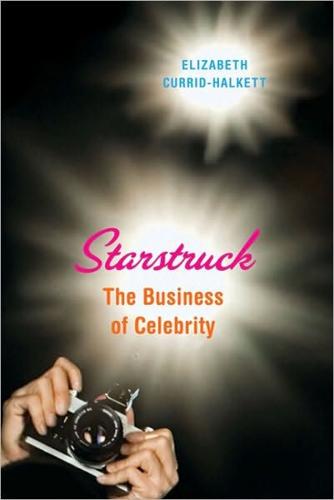
Starstruck: The Business of Celebrity
by
Currid
Published 9 Nov 2010
Baudrillard, Jean. Simulacra and Simulation. Trans. Sheila Faria Glaser. Ann Arbor: University of Michigan Press, 1994. Beard, Mary. “Welcome to the Human Zoo, Susan.” Times (London), June 2, 2009. Becker, Howard S. Art Worlds. Berkeley: University of California Press, 1982. Bell, Daniel. The Coming of Post-Industrial Society: A Venture in Social Forecasting. New York: Basic Books, 1973. Berridge, Kate. Madame Tussaud: A Life in Wax. New York: William Morrow, 2006. Blau, Peter M. “A Theory of Social Integration.” American Journal of Sociology 65, no. 6 (1960): 545–56. ———. “A Macrosociological Theory of Social Structure.”
…
These initial events generate increasing returns that enable one place, one technology, or one individual to dominate the market and capture most of its benefits. See Arthur, Ermoliev, and Kaniovski, “Path-Dependent Processes” Arthur, Increasing Returns and Path Dependence; Arthur, “Competing Technologies, Increasing Returns” Arthur, “‘Silicon Valley’ Locational Clusters” Bell, The Coming of Post-Industrial Society; David, “Clio and the Economics of QWERTY” Glaeser, “Urban Colossus” Glaeser and Saiz, “The Rise of the Skilled City” Lucas, “On the Mechanics of Economic Development.” 11. Concentration of human capital is a central explanation for productivity and regional and urban development. Although I am discussing a particular form of human capital, the wider point is that industrial success is predicated on having a critical concentration of the necessary labor force within that industry.
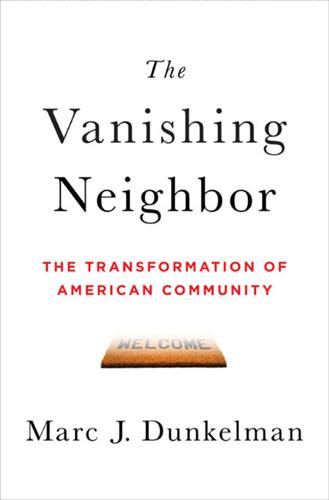
The Vanishing Neighbor: The Transformation of American Community
by
Marc J. Dunkelman
Published 3 Aug 2014
fa=biospartnership. 3Nathan Gardels, “Lunch with the FT: He has seen the future,” Financial Times, August 19, 2006. 4Alvin Toffler, The Third Wave (New York: Bantam Books, 1981), 9–11. 5http://www.presidency.ucsb.edu/ws/?pid=25958. 6Judis, “Newt’s not-so-weird gurus.” 7Toffler, The Third Wave, 4. 8Toffler, The Third Wave, 14. 9An argument made along similar lines can be found in Daniel Bell, The Coming of Post-Industrial Society (New York: Basic Books, 1999). 10Marshall McLuhan and Bruce R. Powers, The Global Village (New York: Oxford University Press, 1970). 11Thomas L. Friedman, The World Is Flat: A Brief History of the Twenty-First Century (New York: Farrar, Straus and Giroux, 2005). 12Fareed Zakaria. The Post-American World (New York: W.
…
Jamaica, 180–81 Chinatown Bus and, 33–35 health care and, 203 Buzzfeed, 37–38 Cameron, David, 230 campaign fund-raising, xvi, 183, 187 Canada, Geoffrey, 222, 223 careers, 20, 30, 101, 104–5, 169–70, 236 Caro, Robert, 187 cars, 10, 54, 58, 99, 134, 172, 175 mobility and, 25, 39–40 Carter, Jimmy, 47, 136, 184 cell phones, 18, 104, 123, 160, 260n chapter-based organizations, 44–45 character, 216–17 social, 4–8, 12 see also American character Chargaff, Erwin, 161 Cherlin, Andrew, 66, 70–71, 120 Chicago, Ill., 4–5, 19, 48, 84, 149 Chicago, University of, 105 Chicago School, 83, 84, 86, 125 children, 12, 27–30, 70, 84, 101, 214–27 affirmation and, 106 health issues and, 51, 52, 58, 59, 198, 201 poor, 62 shopping and, 38–39, 41 urban, 83–86, 222 see also adolescents China, xiv, xvii, 19, 227, 230 Chinatown Bus effect, 33–49, 62, 73, 75, 101, 108, 126, 138 intimate relations and, 42–46, 49 neighborhoods and, 46–49 shopping and, 38–42, 49 Chinatowns, 33–35 choice, 48, 49, 68, 69, 73 affirmation and, 102, 103, 111, 112 cholera, 158–59 Christakis, Nicholas, 96 Christianity, 71, 147, 238 Cincinnati, Ohio, ix–xi, 38–39, 97, 240 City Year, 212–13 Civilization (Ferguson), 229 civil liberties, 227, 231, 232 civil rights movement, 23–24, 51, 68, 108–9 civil society (nonprofits), 150, 194, 201 Claritas, 41 class, 39, 41, 60, 79, 147, 191, 215, 231, 238 in Europe, 81, 232 Clinton, Bill, 10, 15, 20, 22, 52, 113, 114, 186, 198, 213, 255n Cohen, Lizabeth, 203 Cold War, 3, 6, 15, 56, 113, 141, 233 Coleman, James, 98–100, 170, 173 collaborative community model, xii–xiii, 176 collective efficacy, 149–51 Collins, Gail, 27 colonial period, xii–xiii, 81–82, 127 comfort, 52, 54, 60, 103, 104 Coming Apart (Murray), 45, 238, 250n Coming of Post-Industrial Society, The (Bell), 249n commerce, 18–19, 86, 228 Chinatown Bus effect and, 38–42 commitment, 20, 44, 45, 219, 231, 232, 239 communal narcissism, 111 communication, 18, 24–25, 91 community, 12, 79–89, 193–95 American exceptionalism and, 232–34 bedroom, 40, 129 Chinatown Bus effect and, 44, 45 decay of, 7, 66, 73, 113–19, 137–39, 146, 149 Dunbar’s research and, 94–98 monolithic, 46–47, 135, 147–48, 189, 191 networked, 143–53, 168–76, 191, 194–95, 210–11, 217, 235–41 online, 114–15, 116, 145, 250n politically homogeneous, 184 rebuilding of, 213–14 shifts in social architecture of, xii–xx, 75, 129, 211, 212–13, 217 social capital and, 98–101 traditional vs. modern, 128–29 vitality of, 149–51 competition, 47, 63, 229 foreign, xiv, 20, 236 computers, 18 confidants, 118–19 conformity, 4–7, 63–75, 101 Congress, U.S., xv–xvi, 4, 181–86, 191, 212 see also House of Representatives, U.S.; Senate, U.S.
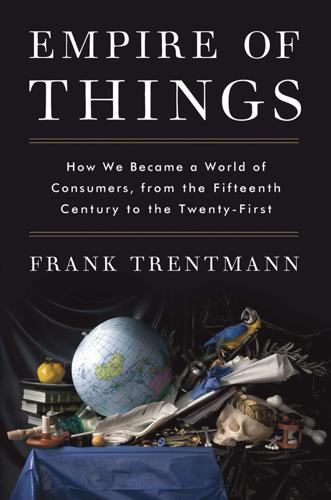
Empire of Things: How We Became a World of Consumers, From the Fifteenth Century to the Twenty-First
by
Frank Trentmann
Published 1 Dec 2015
Repression had given way to greater sexual freedom. Saint-Geours’ was a distinctly French way of making peace with affluence. Consumer society was not a social disease. It had not killed culture, he wrote. It had merely democratized it. The creative spirit was alive and well; Saint-Geours was one of the first to imagine a ‘post-industrial society’ where the pleasure and freedom to consume would revolve around new experiences. He could see what Galbraith, fifteen years earlier, could not. Affluent societies were spending more and more on health and education: in the early 1960s, public expenditure was 36 per cent of GDP in France (33 per cent in the UK; 35 per cent in West Germany); by the late 1970s it had reached 46 per cent in all three.
…
Admittedly, Stevenson managed to combine idle moments with writing thirteen novels, six travel books, collections of essays and poetry, composing – he played the flageolet, a type of flute – and travelling to North America and Samoa, where he cleared land and built a home, all in a life cut short at forty-four. Keynes, too, had a dismal view of work. In his eyes, the rich, if they worked at all, were motivated by avarice, the poor by the need to survive. That work might be a source of pleasure and pride largely eluded him.25 In post-industrial society, managers and professionals are spending longer hours at the office than their counterparts two generations earlier. In part, they do so because their job is more satisfying today – ‘le bonheur du travail ’, as the French say.26 The contrast between hard-working Americans and idle Europeans is almost a cliché today.
…
It is no coincidence that professional busyness, active leisure and ‘quality time’ have arisen together in the late twentieth century, a period when affluent Western societies began the transition from industrial to knowledge-based societies. After centuries of trying to break free from the world of work, leisure today is close to mimicking its rhythm. It is too early to tell whether in post-industrial society leisure and work will once again fuse into an organic whole; the use of social media points in that direction. If they do, it is unlikely to involve the contemplative, disinterested qualities cherished by the ancients. Slow Food, Cittaslow and similar movements hope to stop the acceleration of life.
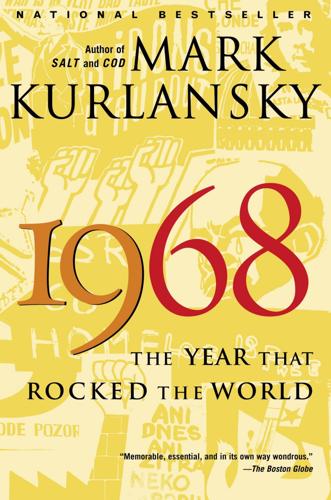
1968: The Year That Rocked the World
by
Mark Kurlansky
Published 30 Dec 2003
He warned that in the next thirty years they would all be living in what was called “the post-industrial society.” He added, “We should remember this term, for it defines our future.” Among the other prescient predictions: “Time and space will no longer be a problem in communications” and “The gap between high and low salaries in the post-industrial society will be considerably stronger than today.” But he also endorsed the widespread belief in 1968 that by the end of the century Americans would be awash in leisure time. In thirty years, Servan-Schreiber predicted, “America will be a post-industrial society with a per capita income of $7,500. There will be only four work days a week of seven hours per day.

Digital Dead End: Fighting for Social Justice in the Information Age
by
Virginia Eubanks
Published 1 Feb 2011
Flatter hierarchies and more interesting work are the social payoffs; rising incomes and an end to slumps the economic payoffs. Quality replaces quantity, knowledge replaces physical capital, and flexible networks replace rigid organization charts” (Henwood 2003, 3–4). 14. Among the most popular are Daniel Bell’s The Coming of Post-Industrial Society (1976), Alvin Toffler’s The Third Wave (1980), John Naisbett’s Megatrends (1984), Peter Drucker’s Post-Capitalist Society (1993), Bill Gates’s The Road Ahead (1996), Kevin Kelly’s Out of Control (1995) and New Rules for the New Economy (1998), Esther Dyson’s Release 2.0 (1997), Thomas Friedman’s The World Is Flat (2005), and Don Tapscott’s Wikinomics (2006). 15.
…
Bastian, Michelle. 2006. Haraway’s Lost Cyborg and the Possibilities of Transversalism. Signs: Journal of Women in Culture and Society 31:1027–1049. Bastian, Sunil, and Nicola Bastian. 1996. Assessing Participation: A Debate from South Asia. New Delhi: Konark Publishers. Bell, Daniel. 1976. The Coming of Post-Industrial Society. New York: Basic Books. Benhabib, Seyla. 1996. Democracy and Difference: Contesting the Boundaries of the Political. Princeton, NJ: Princeton University Press. Benner, Chris. 2002. Work in the New Economy: Flexible Labor Markets in Silicon Valley. Oxford: Blackwell Publishers. Berger, Michele Tracy. 2004.

The Future of Money
by
Bernard Lietaer
Published 28 Apr 2013
.' - Dee Hock, Chairman VISA 'The real voyage of discovery consists not in seeking new landscapes, but in having new eyes.' -Marcel Proust 'Confusion is the word we invented to refer to an order we don't yet understand.' - Henry Miller In less than two decades, what Daniel Bell originally called the Post- Industrial Society is now commonly referred to as the Information, Knowledge or Communications Age. As information becomes our critical resource, there are sweeping implications not only for our economy, but also for the very fabric of our society. We saw that our oldest information systems are money systems (chapter 1) remember, even writing was initially invented to record financial transactions.
…
We saw that our oldest information systems are money systems (chapter 1) remember, even writing was initially invented to record financial transactions. So it is no surprise that money is again in the forefront in computerized cyberspace. We can expect fundamental changes not only in payment systems for conventional currencies, but also the emergence of new types of money. Post Industrial Society = Knowledge Age In the 1940s, IBM's first Chairman, Thomas Watson, predicted a world market for 'maybe five computers'. By 1975, about 50,000 were operating, and in 1997 more than 140 million. By 1999, there are an additional 600 million computers-on-a-card currently in use worldwide, as well as the innumerable 'invisible computers' that are built into routine appliances - a typical car today contains more computer-processing power than the first spacecraft that landed on the moon in 1969.

The Einstein of Money: The Life and Timeless Financial Wisdom of Benjamin Graham
by
Joe Carlen
Published 14 Apr 2012
Notably, Marjorie had married Irving Janis, the acclaimed psychologist who, according to the New York Times, became “best known for coining the term ‘group think’ to describe the sometimes risky way decisions are made in high-powered political and corporate circles.”50 Considering Graham's own intellectualism, it is interesting that Graham's second daughter, the thrice-married Elaine, was also drawn to the intellectual type: her first marriage was to the Harvard sociologist Daniel Bell, the celebrated author of such books as The End of Ideology51 and The Coming of Post-Industrial Society.52 (A 2010 interview of the late academic revealed that Bell's association with his former father-in-law was not only family related: “I worked for Ben, and I made some money with it.”53) Elaine later moved to her father's native England and married yet another acclaimed sociologist, Cyril Sofer—the noted Cambridge professor and author of such books as Men in Mid-Career54 and Organizations in Theory and Practice.55 Elaine had her only two children with Mr.
…
Bernard Sarnat and Rhoda Gerard Sarnat, July 18, 2011, Los Angeles, CA. 50. “Irving Janis Dies at 72; Coined ‘Group Think,’” New York Times, November 18, 1990. 51. Daniel Bell, The End of Ideology: On the Exhaustion of Political Ideas in the Fifties (Cambridge, MA: Harvard University Press, 1962). 52. Daniel Bell, The Coming of Post-Industrial Society: A Venture in Social Forecasting (New York: Basic Books, 1973). 53. Roberto Foa and Thomas Meaney, “The Last Word,” Utopian, February 10, 2011 (interview with Daniel Bell conducted on September 21, 2010). 54. Cyril Sofer, Men in Mid-Career: A Study of British Managers and Technical Specialists (Cambridge, United Kingdom: Cambridge University Press, 1970). 55.

Kill All Normies: Online Culture Wars From 4Chan and Tumblr to Trump and the Alt-Right
by
Angela Nagle
Published 6 Jun 2017
The reformist-left writer Christopher Lasch applied the Freudian conception of transgression as anti-civilizational to his critique of the vacuous nihilism and narcissism of post 60s American consumer society. But since the 60s the norm has until now been that critics of transgression have generally come from the right. Theorist of post-industrial society Daniel Bell lamented the transgressive ethos of the 60s and warned of its ‘obsessive preoccupation with homosexuality, transvestism, buggery, and, most pervasive of all, publicly displayed oral-genital intercourse.’ The transgressive irreverent style of the 60s counterculture was everything the right hated in previous culture wars.
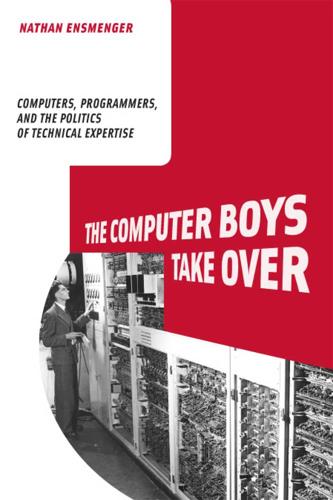
The Computer Boys Take Over: Computers, Programmers, and the Politics of Technical Expertise
by
Nathan L. Ensmenger
Published 31 Jul 2010
By this point the rhetoric of crisis had become so commonplace in the computer industry literature that for many young programmers the software crisis was “less a turning point than a way of life.”16 This comes back to some of the central questions of this book: How can we explain the continued existence of a seemingly perpetual crisis in what is generally considered to be one of the most successful and profitable industries of all time? How can we understand the role of computer specialists—in many respects the paradigmatic “knowledge workers” of post-industrial society—within this troubled framework of crisis, conflict, and contested identity? If, as Shoshona Zuboff has suggested, computer-based technologies are not simply neutral artifacts, but rather “embody essential characteristics that are bound to alter the nature of work within factories and offices, and among workers, professionals, and managers,” then what are the “essential characteristics” of software and software development that shape our understanding of work, identity, and power in the information technology industry (and the many industries that rely on information technology)?
…
“Developments in Computing Work: Control and Contradiction in the Software Labour Process.” In Developments in Computing Work: Control and Contradiction in the Software Labour Process, ed. Paul Thompson and Chris Warhurst, 142–162. New York: Macmillan, 1998. Bell, Daniel. The Coming of Post-Industrial Society. New York: Basic Books, 1973. Bemer, Robert. Computers and Crisis: How Computers Are Shaping Our Future. New York: ACM Press, 1971. Bendix Computer Division. “Is Your Programming Career in a Closed Loop?” (ad). Datamation 8 (9) (1962): 86. Benington, Herbert. “Production of Large Computer Programs” (reprint).

New Localism and Regeneration Management
by
Jon Coaffee
Published 1 Mar 2005
Benson, J.K. (1975), “The interorganizational network as a political economy”, Administrative Science Quarterly, Vol. 20, pp. 229-49. Bingle, P. (2004), “PFI and politics”, speech to the PPC Forum Conference, Birmingham, July. Byrne, D. (2001), “Partnership – participation – power: the meaning of empowerment in post-industrial society”, in Balloch, S. and Taylor, M. (Eds), Partnership Working: Policy and Practice, The Policy Press, Bristol, pp. 243-59. Coote, A., Allen, J. and Woodhead, D. (2004), Building Knowledge about Complex, Community-Based Initiatives, Kings’ Fund, London. Darwin, J. (1992), “The network organisation”, MBA dissertation, Sheffield Hallam University, Sheffield.

Automation and the Future of Work
by
Aaron Benanav
Published 3 Nov 2020
Of that 17 percent, a sizable fraction are informally employed, engaging in domestic industry: the production of bricks, cigarettes, locks, and shoes in tiny household or backyard shops and foundries. 34 According to the ILO’s Key Indicators, service workers came to represent the majority of the global labor force in 2020. 35 Daniel Bell, The Coming of Post-industrial Society, Basic Books, 1973. 36 See William Baumol, “Macroeconomics of Unbalanced Growth: The Anatomy of Urban Crisis,” American Economic Review, vol. 57, no. 3, June 1967, pp. 415–26; as well as Baumol et al., Productivity and American Leadership: The Long View, MIT Press, 1989. 37 William Baumol et. al., “Unbalanced Growth Revisited: Asymptotic Stagnancy and New Evidence,” American Economics Review, vol. 75, no. 4, 1985, p. 806. 38 For a similar analysis, see Servaas Storm, “The New Normal: Demand, Secular Stagnation, and the Vanishing Middle Class,” International Journal of Political Economy, no. 46, 2017, pp. 169–210, although Storm claims that job shedding in the dynamic sectors of the economy is due to automation rather than to international overcapacity. 39 Jonathan Gershuny and I.D.
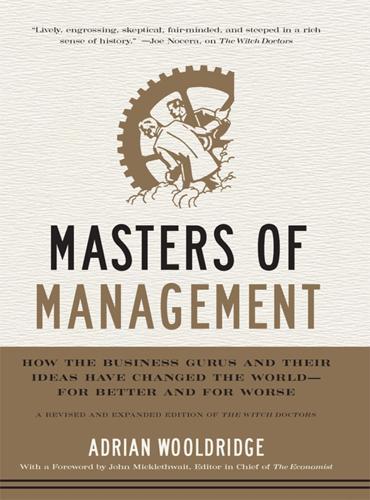
Masters of Management: How the Business Gurus and Their Ideas Have Changed the World—for Better and for Worse
by
Adrian Wooldridge
Published 29 Nov 2011
In the United States, women make up more than two-thirds of the employees in ten out of the fifteen job categories that the U.S. Census department thinks will grow fastest in the next few years. The growing demand for female labor is a function of economic progress. The landmark book in the rise of feminism was arguably not Betty Friedan’s The Feminine Mystique but Daniel Bell’s The Rise of Post-Industrial Society, an account of the decline of the manufacturing sector (where men had an advantage in terms of brute strength) and the rise of the service sector (where women can compete as well as men). What happened in the developed world over the past fifty years is now being repeated in the developing world.
…
Business Excellence in a Disruptive Age (Peters), 58, 96, 97 Reinventing Government: How the Entrepreneurial Spirit Is Transforming the Public Sector (Osborne and Gaebler), 318 Remix: Making Art and Commerce Thrive in the Hybrid Economy (Lessig), 156–157 Revlon, 172 Rhee, Michelle, 330 Ricardo, David, 22 Richards, Keith, 195 The Rise of Meritocracy (Young), 129, 386 The Rise of Post-Industrial Society (Bell), 345 The Rise of the Creative Class: And How It’s Transforming Work, Leisure and Everyday Life (Florida), 129, 130 Robbins, Anthony, 50, 394 Robin Hood Foundation, 47 Roddick, Anita, 33, 36 Rogers, Jay, 242 Romney, Mitt, 53, 316 Rosenzweig, Phil, xiii, 13, 413 Rosling, Alan, 287 Ross Business School, 61 Roux, Geoffrey, 195 Rubin, Robert, 126 Rumsfeld, Donald, 322 Saez, Emmanuel, 382 Said School, 56, 189–190 Sainsbury, 36 Salaries.

The Next Shift: The Fall of Industry and the Rise of Health Care in Rust Belt America
by
Gabriel Winant
Published 23 Mar 2021
Hacker, The Divided Welfare State: The Battle over Public and Private Social Benefits in the United States (New York: Cambridge University Press, 2002); Colin Gordon, Dead on Arrival: The Politics of Health Care in Twentieth-Century America (Princeton, NJ: Princeton University Press, 2003); Jennifer Klein, For All These Rights: Business, Labor, and the Shaping of America’s Public-Private Welfare State (Princeton, NJ: Princeton University Press, 2003). 9. This process was anticipated by Daniel Bell, but he envisioned such conflicts as the result of affluence rather than deprivation. See The Coming of Post-Industrial Society: A Venture in Social Forecasting (New York: Basic Books, 1973), 127–128. 10. Klein, For All These Rights, 129–130; Margaret C. Albert, A Practical Vision: The Story of Blue Cross of Western Pennsylvania, 1937–1987 (Pittsburgh: Blue Cross of Western Pennsylvania, 1987), 25. See also Gerald Markowitz and David Rosner, “Seeking Common Ground: A History of Labor and Blue Cross,” Journal of Health Politics, Policy and Law 16, no. 4 (1991), 695–718.
…
On the role of Pittsburgh elites in economic restructuring, see Tracy Neumann, Remaking the Rust Belt: The Postindustrial Transformation of North America (Philadelphia: University of Pennsylvania Press, 2016). 76. Allegheny Conference on Community Development, “A Strategy for Growth,” vol. 2, III-2-III-3, box 7, folder 89, ACCDC. 77. Daniel Bell, The Coming of Post-Industrial Society: A Venture in Social Forecasting (New York: Basic Books, 1973), 128, 137; Allegheny Conference on Community Development, “A Strategy for Growth: An Economic Development Program For the Pittsburgh Region,” vol. 1, p. 18, box 7, folder 89, ACCDC; US Congress, House of Representatives, Committee on Banking, Finance and Urban Affairs, Subcommittee on Economic Stabilization, Service Industries: The Future Shape of the American Economy, 98th Cong., 2nd sess., 1984, June 8, p. 103. 78.
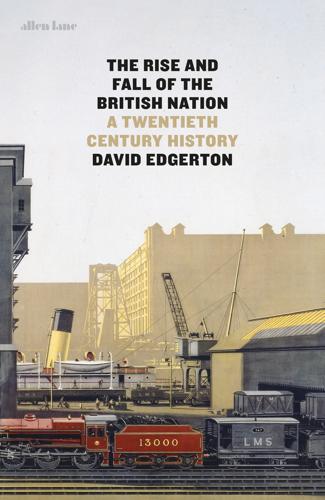
The Rise and Fall of the British Nation: A Twentieth-Century History
by
David Edgerton
Published 27 Jun 2018
Thus it was, as we have seen, that new power stations and motorways were being built in the late 1960s and 1970s, and expansion plans for steel and cars assumed much greater demand in the future. In this it was similar to the 1940s and 1950s, when investing for a richer future was the order of the day. Some, however, called for a new kind of post-industrial society – a radically less industrialized society which would be in better relationship with nature.5 Neither was to be the sort of post-industrial society that would be talked about in the 1980s and neither predicted what happened. Far from continuing to grow apace, British industrial production would stagnate, and employment in industry would fall drastically as imports surged.
…
The quadrupling of the oil price by the cartel of oil-producing countries in 1973 and their flexing of political and economic muscle was a new phenomenon in world history, and it led to huge transfers of wealth to them. There was industrial unrest all over the world and in many places revolution too. New ideas were everywhere. EXPECTATIONS DASHED In the late 1960s and early 1970s there was talk of an emerging post-industrial society. It was to be a society with high and increasing industrial output, greater levels of research and development and, because of higher productivity, much more leisure. It was post-industrial not because there would be less industry, but because industry would not need so many people. Indeed, British planners, like their counterparts elsewhere, were looking forward to higher levels of production of all sorts.
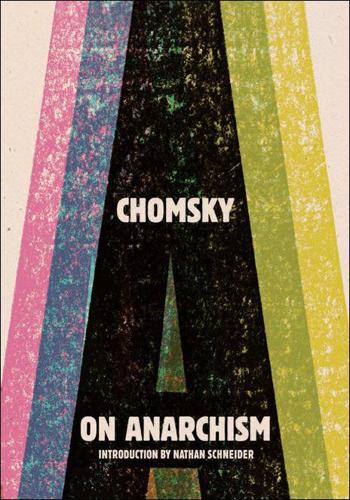
On Anarchism
by
Noam Chomsky
Published 4 Nov 2013
The more so, since now society is such a complicated structure, based on abstract and difficult science, that only the highest intellectual acumen is capable of embracing, grasping and handling it. Should the working masses, from lack of insight, fail to acknowledge this need of superior intellectual lead, should they stupidly try to take the direction into their own hands, chaos and ruin will be the inevitable consequence. 2. See Daniel Bell, “Notes on the Post-Industrial Society: Part I,” Public Interest, no. 6 (1967), pp. 24–35. Albert Parry has suggested that there are important similarities between the emergence of a scientific elite in the Soviet Union and the United States, in their growing role in decision making, citing Bell’s thesis in support. See the New York Times, March 27, 1966, reporting on the Midwest Slavic Conference. 3.

How to Be Right: In a World Gone Wrong
by
James O'Brien
Published 2 Nov 2018
I often wonder whether sympathy would have been more forthcoming if cabbies hadn’t revelled in a reputation for having no sympathy for other people on the receiving end of right-wing sharp practice. I guess we’ll never know, but Uber taught me two lessons. First, neo-liberal entrepreneurship in a post-industrial society will effectively involve identifying markets where normal people are earning a decent living in the hope of introducing technology that will see some of that money end up with neo-liberal entrepreneurs and their backers. Second, the risk of launching new businesses is being increasingly passed from the owners to their underpaid, over-worked and widely exploited workforce.

To Serve God and Wal-Mart: The Making of Christian Free Enterprise
by
Bethany Moreton
Published 15 May 2009
The following very general sketch of management theory draws heavily on Mauro Guillén, Models of Management: Work, Authority, and Organization in a Comparative Perspective (Chicago: University of Chicago Press, 1994), 30–90; and Waring, Taylorism Transformed. I am indebted to Rakesh Khurana for suggesting these guides. William H. Whyte Jr., The Organization Man (New York: Simon and Schuster, 1956), 37. Rosabeth Moss Kanter, Men and Women of the Corporation (New York: Basic Books, 1977), 23–25. Daniel Bell, The Coming of Post-Industrial Society: A Venture in Social Forecasting; Special Anniversary Edition with a New Foreword by the Author (New York: Basic Books, 1999), 17. W. Jack Duncan, Great Ideas in Management: Lessons from the Founders and Foundations of Managerial Practice (San Francisco: Jossey-Bass, 1989), 187–89; Waring, Taylorism Transformed, 133–42.
…
Census Bureau, Population Profile of the United States: 2000 (InterÂ�net Release) (2001), fig. 8-2, http://www.census.gov/population/ pop-profile/2000/profile2000.pdf. 48. Howard Brick, “Optimism of the Mind: Imagining Postindustrial Society in the 1960s and 1970s,” American Quarterly 44, no. 3 (September 1992): 348–80. 49. Daniel Bell, The Coming of Post-Industrial Society: A Venture in Social Forecasting; Special Anniversary Edition with a New Foreword by the Author (New York: Basic Books, 1999), 269. 50. Bergdahl, What I Learned from Sam Walton, 151. 51. College of the Ozarks, Bulletin (Clarksville, AR, 1969–70), 15. 52. Vernon McDaniel, “Milestone at Ozarks: Arkansas’s Oldest College Marks Its 125th Year This Week; New Era Dawns,” AG, October 25, 1959, 2E. 53.
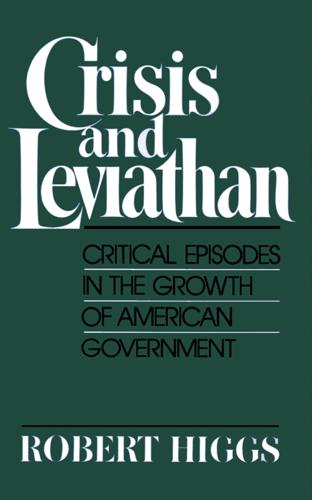
Crisis and Leviathan: Critical Episodes in the Growth of American Government
by
Robert Higgs
and
Arthur A. Ekirch, Jr.
Published 15 Jan 1987
Kalt, "Public Goods and the Theory of Government," Cato Journal 1 (Fall 1981): 565-584; Russell D. Roberts, "A Taxonomy of Public Provision," Public Choice 47 (1985): 267-303. Compare E. C. Pasour,jr., "The Free Rider as a Basis for Government Intervention," Journal of Libertarian Studies 5 (Fall 1981): 453-464. 21. Victor R. Fuchs, "The Economics of Health in a Post-Industrial Society," Public Interest (Summer 1979): 19, 13. For provocative variations on the theme, see Robert Nisbet, Twilight of Authority (New York: Oxford University Press, 1975), esp. pp. 230-287. 22. Wilhelm Ropke, A Humane Economy: The Social Framework of the Free Market, trans. Elizabeth Henderson (Chicago: Henry Regnery, 1971), pp. 156, 164-165.
…
Lately even the mighty Pentagon has suffered defeat at the hands of a determined congressman. John J. Fialka, "Oregon Congressman Outflanks the Pentagon In Single-Minded, Single-Handed Weapon War," Wall Street Journal (Sept. 13, 1985): 54. 29. Victor R. Fuchs, "The Economics of Health in a Post-Industrial Society," Public Interest (Summer 1979): 16; Shultz and Dam, Economic Policy Beyond the Headlines, pp. 51-52; John Mark Hansen, "The Political Economy of Group Membership," American Political Science Review 79 (March 1985): 81. 30. See the related discussions of the "endowment effect" by Richard H.
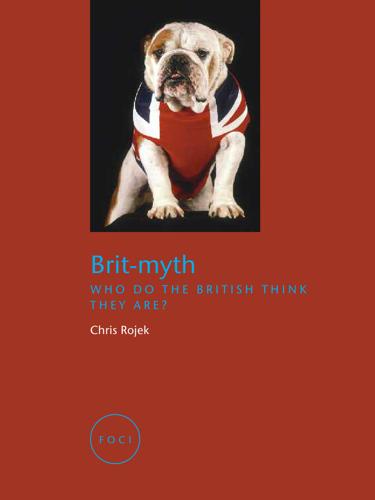
Brit-Myth: Who Do the British Think They Are?
by
Chris Rojek
Published 15 Feb 2008
It weakens the hands of states to control information and regulate populations by making national boundaries essentially porous. 31 ‘C O O L BRITANNIA’ AND THE NATION Two main versions of globalization theory have emerged. The first emphasizes the standardization and regimentation of global culture that follows the creation and colonization of the global market by multinational corporations. This is akin to the return of mass society and post-industrial society theories of the 1960s and ’70s that portrayed the future of the world as some sort of global office in the sky. The second stresses the interplay of local conditions and global forces. The term glocalization has been coined to capture this process. Both versions raise a set of questions that cannot be tackled here.
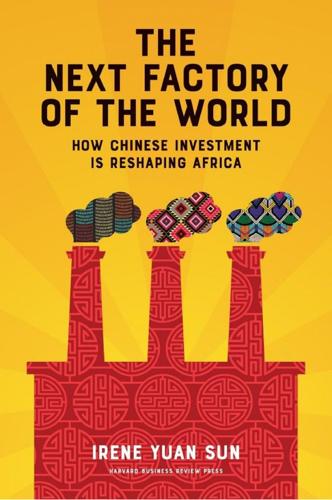
The Next Factory of the World: How Chinese Investment Is Reshaping Africa
by
Irene Yuan Sun
Published 16 Oct 2017
Yet, as we shall see, this possibility feels deeply uncertain, even to some of those closest to the transformation. Throughout Africa, Chinese bosses complain about their African workers; even those who grew up working in factories themselves tend to forget how hard it is to get used to factory work. And it is easy for people in industrial and post-industrial societies, ourselves included, to forget how many profound transitions are unleashed when someone goes to work in a factory. History shows that industrialization has fundamentally transformed every society it has touched. Africa, now feeling the first reverberations of its coming, will be no exception.
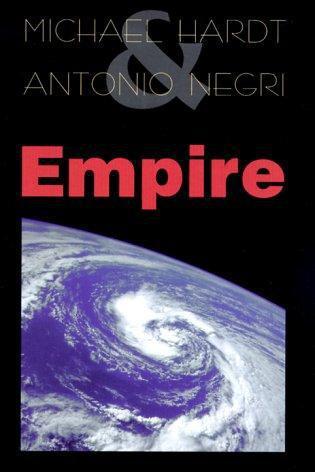
Empire
by
Michael Hardt
and
Antonio Negri
Published 9 Mar 2000
Zhang makes clear the fabulous creativity released during this period. 3 . 4 P O S T M O D E R N I Z A T I O N 1. The texts that set the terms for an enormous literature that debates the periodization ofthe phases ofmodern production are Daniel Bell, Coming of Post-industrial Society (New York: Basic Books, 1973); and Alain Toura-ine, Post-industrial Society, trans. Leonard Mayhew (New York: Random House, 1971). 2. See Manuel Castells and Yuko Aoyama, ‘‘Paths towards the Informational Society: Employment Structure in G-7 Countries, 1920–90,’’ International Labour Review, 133, no. 1 (1994), 5–33; quotation p. 13. 3.

The Aristocracy of Talent: How Meritocracy Made the Modern World
by
Adrian Wooldridge
Published 2 Jun 2021
THE GREAT ACCELERATION The great acceleration from the 1950s onwards was driven by a combination of powerful economic and political forces. The decline in manufacturing and the rise of the knowledge and service economies levelled the gender playing field or even tilted it towards women. (The landmark book in the rise of feminism was arguably not Betty Friedan’s The Feminine Mystique (1963) but Daniel Bell’s The Coming of Post-Industrial Society (1973).) Household appliances such as vacuum cleaners, washing machines and the rest reduced the amount of time women had to spend on housework. Improved contraception, particularly the contraceptive pill, increased women’s control over their fertility and revolutionized their incentives: women now had much more reason to invest time and effort in acquiring skills, particularly slow-burning skills that are hard to learn and take many years to pay off, because they are much less likely to have to drop out of university or law school to have an unplanned baby.
…
The Twelve-Pound Look 271 Beach, Moses Yale, Wealth and Biography of the Wealthy Citizens of New York City 191 Beard, Charles and Mary, The Rise of American Civilization 21 Beaumarchais, Pierre-Augustin Caron, The Marriage of Figaro 119–20 Becket, Thomas, Archbishop of Canterbury 102 Beethoven, Ludwig van 142 bell curve 281, 380–81 Singapore and 4, 350 Bell, Daniel, The Coming of Post-Industrial Society 274 Ben-Gurion, David 91 Bender, Wilbur 224, 233 Benedict, St 101 Bennett, Alan, The History Boys 245 Bentham, Jeremy 148 Official Aptitude Maximized; Expense Minimized 149 Berger, Peter 293 Berggruen, Nicolas 12, 361 Berkeley, University of California 239 Bernstein, Basil 293 Bevan, Aneurin 173–4 Beveridge, William 234 Bevin, Ernest 173, 340 Bezos, Jeff 3 Bible 89, 111 as authority for natural hierarchy 28 Biden, Hunter 319 Biden, Dr Jill 13 Biden, Joe 3 and 2020 election 332, 346 Bilderberg Group 320 Bildung (self-cultivation) 140–41 Biles, Simone 371 Binet, Alfred 208–9 Binet-Simon intelligence test 209 Birdwood, George 15 Birmingham, Edward VI Grammar School 104 Black Americans and affirmative action 387 and American constitution 179 and black rights movement 298 inequality 283, 302–5, 346–8 and IQ tests 285, 381 Jackson and 190 self-improvement movement 199–200 social scientists 285 wealth disadvantage 8 Black Lives Matter movement 5, 346–8 Black people, as intellectuals 15 Blacker, C.
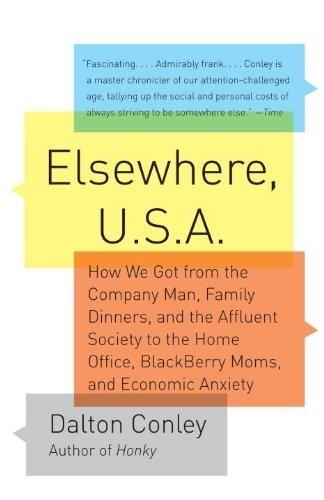
Elsewhere, U.S.A: How We Got From the Company Man, Family Dinners, and the Affluent Society to the Home Office, BlackBerry Moms,and Economic Anxiety
by
Dalton Conley
Published 27 Dec 2008
Class Acts: Service and Inequality in Luxury Hotels (Berkeley: University of California Press, 2007). CONVESTMENT 1. Ronald Inglehart, The Silent Revolution: Changing Values and Political Styles Among Western Publics (Princeton, N.J.: Princeton University Press, 1977). See also Ronald Inglehart, “The Silent Revolution in Post-Industrial Societies,” American Political Science Review 65 (1971): 991-1017. Ted Nordhaus and Michael Shellenberger elaborate on Inglehart’s concept in their book Break Through to suggest that we now live in a condition of “insecure affluence.” See, Ted Nordhaus and Michael Shellenberger, Break Through: From the Death of Environmentalism to the Politics of Possibility (New York: Houghton Mifflin, 2007). 2.
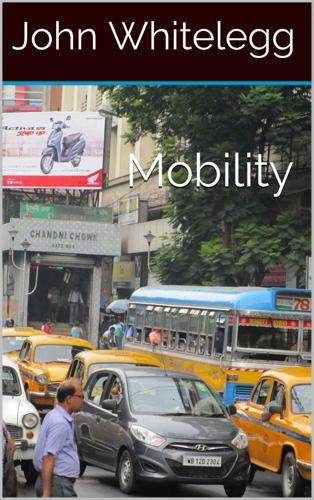
Mobility: A New Urban Design and Transport Planning Philosophy for a Sustainable Future
by
John Whitelegg
Published 1 Sep 2015
Whatever high levels of mobility have brought to enrich the lives of children or improve the quality of life of all of us, and the balance sheet is far from positive, it is clear that low mobility was associated with high level of satisfaction, enjoyment and developmental significance. The low mobility world of the 1950s was embedded in a wider life style and societal context that has been largely swept away in so-called developed societies or post-industrial societies. The Oldham of my childhood in the 1950s was characterised by large numbers of local shops within walking distance, a vigorous and enormous open air market and indoor market (Tommyfield) again within walking distance, local parks, a local library, a local swimming pool (Robin Hill Baths) and perhaps even more surprisingly a public wash house where my mother took the family washing and joined in with many other women to do the washing in an enormous, steamy room full of washing and drying facilities (and from the point of view of a 6 year old boy, full of very scary women).

What About Me?: The Struggle for Identity in a Market-Based Society
by
Paul Verhaeghe
Published 26 Mar 2014
Believers must pray and work hard to attain God’s mercy. The ignorant must study hard, and if necessary seek psychological counselling in order to attain reason through the proper insights. The post-modern scientistic view is more pessimistic: we will have to wait for a genetic modification of the human race that will fit us better for the post-industrial society that we have created.* [* That this idea has become more widespread is evident from the fact that it represents the closest thing to an optimistic notion in the cynical world of The Elementary Particles, the book with which Michel Houellebecq achieved his international breakthrough. His first novel, Whatever, describes with painful beauty the origin of that cynicism.]
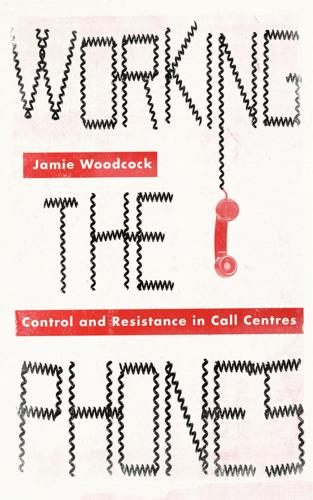
Working the Phones: Control and Resistance in Call Centres
by
Jamie Woodcock
Published 20 Nov 2016
David Harvey, A Brief History of Neoliberalism (Oxford: Oxford University Press, 2007), p. 38. 121. Enda Brophy, ‘The Subterranean Stream: Communicative Capitalism and Call Centre Labour’, Ephemera, Vol. 10, No. 3/4 (2010), p. 474. This refers to the utopian perspective of Daniel Bell, The Coming of Post-Industrial Society: A Venture in Social Forecasting (New York: Basic Books, 1973). 122. Brophy, ‘The Subterranean Stream’ (2010), p. 471. 123. Goodrich, The Frontier of Control (1975). 170 Notes chapter 2 1. See Richard Murphy, ‘Vodafone’s Tax Case Leaves a Sour Taste’, The Guardian, 22 October 2010, www.theguardian.com/commentisfree/ 2010/oct/22/vodafone-tax-case-leaves-sour-taste 2.

The Great Reset: How the Post-Crash Economy Will Change the Way We Live and Work
by
Richard Florida
Published 22 Apr 2010
See “Today in Lehman Poaching: Barclays and UBS,” Wall Street Journal, October 8, 2008, retrieved from http://blogs.wsj.com/deals/2008/10/08/today-in-lehman-poaching-barclays-and-ubs; “China’s Sovereign Wealth Fund Seeking Talent,” Reuters, June 17, 2009, retrieved from http://money.cnn.com/2009/06/17/news/international/CIC_hiring.reut; “Wall Street’s Job Losses May be Asia’s Gain,” Reuters, Trading Places, September 19, 2008, retrieved from http://blogs.reuters.com/trading-places/2008/09/19/wall-street-job-losses-may-be-asias-gain; Gavin Finch and Poppy Trowbridge, “Nomura, Barclays Lure Bankers as Rivals Cut Jobs, Cap Bonuses,” Bloomberg, November 6, 2009, retrieved from www.bloomberg.com/apps/news?pid=newsarchive&sid=aGY5f6XsWveE. 14. Michael Pettis, “Bigger Than Ever: Why the Crisis Will Only Help Ny-Lon,” Newsweek, May 23, 2009, retrieved from www.newsweek.com/id/199100. Chapter 10: Fire Starter 1. Daniel Bell, The Coming of Post-Industrial Society (New York: Harper Colophon Books, 1976); Thierry Noyelle and Thomas Stanback, The Economic Transformation of American Cities (Totowa, N.J.: Rowman and Allanheld, 1984). 2. Eric Janszen, “The Next Bubble: Priming the Markets for Tomorrow’s Big Crash,” Harper’s, February 2008, retrieved from www.harpers.org/archive/2008/02/0081908. 3.
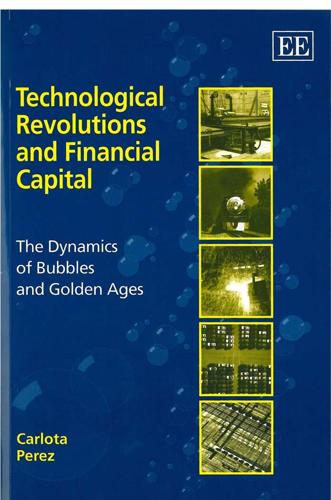
Technological Revolutions and Financial Capital: The Dynamics of Bubbles and Golden Ages
by
Carlota Pérez
Published 1 Jan 2002
Barras, Richard (1986), ‘Towards a Theory of Innovation in Services’, Research Policy, Vol. 15, pp. 161–73. Barras, Richard. (1990), ‘Interactive Innovation in Financial and Business Services: The Vanguard of the Service Revolution’, Research Policy, Vol. 19, No. 3, pp. 215–39. Bell, Daniel (1973:1976), The Coming of Post-Industrial Society, Harmondsworth, Middlesex: Peregrine/Penguin. Berghahn, Volker R. (1994), Imperial Germany, 1871–1914. Economy, Society, Culture and Politics, Providence, RI and Oxford: Berghahn Books. Beveridge, Sir William (1944:1967), Full Employment in a Free Society, London: George Allen & Unwin (Second impression).
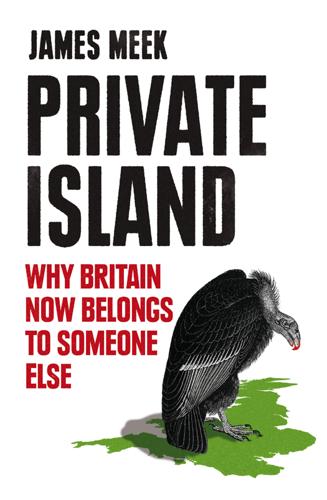
Private Island: Why Britain Now Belongs to Someone Else
by
James Meek
Published 18 Aug 2014
Classical Marxism had an entirely different answer to the problem of relative justice in society. It assumed that competition, envy, and evil all resulted from scarcity, and that the abundance of goods would make such conflicts unnecessary. But what we have come to realise is that we will never overcome scarcity. In the post-industrial society … there would be new scarcities which nineteenth-century utopians could never envision. The selling off of Britain’s municipal housing without replacing it, which I write about in the last section of this book, was supposed to be a triumphant coming together of the individual and free market principles.
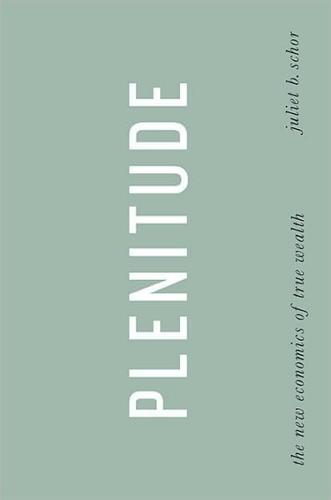
Plenitude: The New Economics of True Wealth
by
Juliet B. Schor
Published 12 May 2010
Available from http://www.garmentdistrict.com/dollar_lb/dollar_a_pound.htm (accessed March 17, 2009). Gershenfeld, Neil. 2005. Fab: The coming revolution on your desktop; From personal computers to personal fabrication. New York: Basic Books. Gershuny, Jonathan. 2000. Changing times: Work and leisure in post-industrial society. New York: Oxford University Press. Ghertner, D. Asher, and Matthias Fripp. 2007. Trading away damage: Quantifying environmental leakage through consumption-based, life-cycle analysis. Ecological Economics 63: 563-77. Global Carbon Project. 2008. Carbon budget and trends 2007. Available from http://www.globalcarbonproject.org/carbonbudget/07/index.htm (accessed July 1, 2009).

The Economic Singularity: Artificial Intelligence and the Death of Capitalism
by
Calum Chace
Published 17 Jul 2016
In his 1962 book, The production and distribution of knowledge in the United States, he introduced the notion of the knowledge industry, by which he meant education, research and development, mass media, information technologies, and information services. He calculated that in 1959, it accounted for almost a third of US GDP, which he felt qualified the US as an information society. Alvin Toffler, author of the visionary books Future Shock (1970) and The Third Wave (1980), argued that the post-industrial society has arrived when the majority of workers are doing brain work rather than personally manipulating physical resources – in other words when they are part of the service sector. Services grew to 50% of US GDP shortly before 1940,[viii] and they first employed the majority of working Americans around 1950.

Protocol: how control exists after decentralization
by
Alexander R. Galloway
Published 1 Apr 2004
But more than being about fashion, the American middle-class youth culture Tron targeted was also one that existed during significant technological transformations, transformations we are still understanding today. The development of the personal computer, along with computer networks, has had a profound, stratified impact on the way in which social, political, and economic life is experienced. Recent discussions of the post-industrial society, the information society, the network society, disciplinary society, control society, informatization, scale-free networks, small worlds, and smart mobs are all ways of attempting to understand how social change is indissociable from technological development (research, design, use, distribution, marketing, naturalization, consumption)—though not determined by it.

Inside the Robot Kingdom: Japan, Mechatronics and the Coming Robotopia
by
Frederik L. Schodt
Published 31 Mar 1988
Clearly, there are other ways besides manufacturing for nations to earn a living in the world community, whether through agriculture, finance, or the sale of resources. Why not accept the world trend of specialization and international division of labor and become, as many experts suggest, post-industrial societies based on software, design, and the service industries? First, nations with strong manufacturing industries have historically dominated other areas as well. Process and product technology have become much more closely linked today, so that to remain technologically advanced an industry requires a mastery of manufacturing technology equal to or greater than its mastery of design technology.
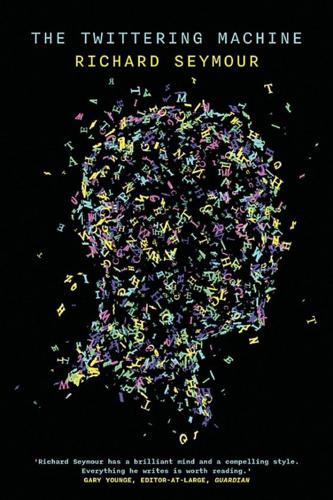
The Twittering Machine
by
Richard Seymour
Published 20 Aug 2019
For the ex-Marxists among the postmodernists, this was clearly an attempt at sublimating their historical defeat. Nonetheless, the identification of a postmodern era was an attempt to describe something that had happened to capitalism. That something – whether it went under the name of the post-industrial society, the knowledge economy or informational capitalism – was the growing importance of images and signs in everyday life. The rise of information technologies and whole industries based around communications, signs and images, altered not only the economy but the structure of meaning. The growth of information economies fits well with the inherent and ever-increasing celerity of capitalism.

The Digital Party: Political Organisation and Online Democracy
by
Paolo Gerbaudo
Published 19 Jul 2018
On left-libertarian parties, see the most influential account by Herbert P. Kitschelt, ‘Left-libertarian parties: explaining innovation in competitive party systems’, World Politics 40, no.2 (1988): 194–234. 36. Here I refer to the famous argument by Ronald Inglehart about the rise of post-materialist values paralleling the transformation from industrial to post-industrial society. See, in particular, Ronald Inglehart, Culture shift in advanced industrial society (Princeton, NJ: Princeton University Press, 1990). 37. Alexis De Tocqueville, Democracy in America and two essays on America (London: Penguin books, 2003); Moisei Ostrogorski, Democracy and the organization of political parties, Vol. 2 (New York: Macmillan, 1902); Maurice Duverger, Political parties: their organization and activity in the modern state (London: Methuen, 1959); Max Weber, Economy and society: an outline of interpretive sociology (Berkeley, CA: University of California Press, 1978); Sigmund Neumann and Frederick C.

The Shock of the Old: Technology and Global History Since 1900
by
David Edgerton
Published 7 Dec 2006
.: Small is beautiful 191 science museums 28, 29, 38, 104 science parks 192 scientific revolution 3 scientists government 192–3 nature of xiii scramjet ix Scud missiles 154–5, 156 sea transport, cheap 115 Second World War 1, 34, 34, 127, 142, 155 artillery-intensive 144 battle of France 150 battleships x, 93, 148–9 casualty rates 146 conquest of Malaya 150–51 conventional and atomic bombing 12–18 dispersal of forces in space 147–8 horsepower x, 34, 35–6 motor torpedo boats 68 a physicist’s war 138 R&D 197 repair organisations 99 transfer machines 85 US atomic bomb project 198, 199 service industries 70–74 extension of 53 IKEA 72 shift from industry 52 Seversky, Alexander de 104 sewing, domestic 81 sewing machines 50, 55, 58–60 sexual revolution 22, 24 Shakuntala Express 96 shanty towns xii, 40–43, 49, 207 Sheffield 173 shellac records 7 Shenzhou-5 capsule 137 shipbreaking 207–8, 208 Shippingport nuclear reactor, Pennsylvania 20 ships container 74 cruise 49–50 efficiency 68 inventive activity in 190–91 lascar employment 135–6 maintenance 91–5 ocean-going x, 28 refits 91–2 reserve technologies 11 sailing 91, 95 world merchant fleet 73–4 Siemens 130, 196 significance 1–27 assessing aviation and nuclear energy 11–19 assessing technologies 4–5 malaria 25–7 small technologies and big effects 22–5 spin-off 19–22 technological choice 8–11 use is not enough 5–8 Silicon Valley, California, USA 133, 186, 195–6 Sinclair, Upton: The Jungle 168–9, 173–4 Singapore 91, 150 Singer Sewing Machine Company 57, 58, 59, 71, 130 Sino–Japanese War, second 140, 179 slaughterhouses 168–73, 171, 175 small arms 143–6, 190 smallpox 163 Smith, Kline French 196 Smithsonian Institution, Washington 104 Sobibor extermination camp, Poland 179 society civil 22 seen as slow to adapt to new technology vii, viii transition from industrial to post-industrial society 3 Soho, London 47 Solvay process 190 sound reproduction 7 South Africa national industrial development 118 output per head 207 petrol production 122 South America guerrilla rebellions 152–3 torture in 157 South Vietnamese army 152 Soviet bloc 118, 126, 129, 133, 145 Soviet Union agriculture 79 car production 69 China produces Soviet technology 44 dams and hydro-electric projects 127 economic growth 110, 112, 206, 207 engineers 102 entry into the Second World War 17 family farms 62–4 foreign technology and socialism 126–9 German invasion of 34, 35–6 Great Terror 179 hydrogenation 121 imitation of foreign technologies 112, 136–7 links with China (1949–60) 131 a multi-national state 131 R&D 110, 128, 137 rifles 144–5 soldiers’ deaths in Second World War 144 television 131 space rockets 1, 2 Spain 122 aviation 125, 126 economic growth 109, 112 executions 176 Francoist 118 imitation of foreign technologies 112 nationalistic and autarchic 131 R&D 109, 121–2 spare parts 79, 96 Speer, Albert 14, 18 spermicides 23, 25 spin-off 19–22, 190 Spin-off magazine (NASA) 21 Spindles Board 38 spinning ‘jenny’ 36 spinning mule 36–8, 47, 60 spinning wheels 54, 60, 63, 107 Sputnik 128, 189 SS 182 Stalin, Joseph 104, 125, 152 Stalinets (tracked Caterpillar 60) 126 Stalingrad tractor factory 126 Stalinism 73, 126, 127 ‘Stalin’s falcons’ 104 Standard Oil 121 Stanford University 186 Star Wars programme 155 state and boundaries 117 and engineers 101–2 funding of big, controversial technologies 22 television 131 statistical offices 5 steam engine 3 reciprocating 3, 29 steam power ix, 2, 3, 29, 105 steam turbine 3 steamships xiv, 113 steel ix, 2, 19, 44, 68, 73, 127, 208–9 sterilisation 23 Stopes, Marie 23–4 Suame Magazine, Ghana 83 Suez Canal 134 suicide, and reserve technologies 11 sulphonamides 163 Swift meat packers 171, 172 Switzerland 80 synthetic ammonia 119 System 360 196 T Ta 183 fighter aircraft 125 Tabun nerve gas 153, 164 Taiwan 45, 109, 136, 177, 207–8 Tamil Tigers 153 Tank, Kurt 125 tanks 159 tank warfare 141–2 tape recorders 7 tariffs 117 Taxol 187 Taylorism 72 TB (tuberculosis) 25 tea-making machines 38 techno-globalism 105, 113–17 techno-nationalism 103–8 Asia and 136–7 technological boosterism 4 technological choice 8–11 ‘technological dualism’ 44 technological futurism vii–viii, xiii–xiv technological importance, assessing 4–5 technological nationalism 117 technological retro x technological revolution 74 technological sharing 111 technology museums 28, 29, 38, 104 technology transfer 111, 127 Tefal 20 Teflon (PTFE) 19–21 Tehran, Iran 154 Telefunken 131 telegraphy xiv, 3, 6, 7, 19, 113, 193 telephone xiv, 6, 7, 55, 193, 195 telephony 3 television ix, 3, 7, 31, 32, 55, 59, 103, 111, 130–31 ‘terotechnology’ 77 Texas Instruments 195 textiles ix, 2, 28, 60, 65, 105 Thailand 177 Thermo-King 170 Three Gorges dam, China 128 tide predictors 7 time 28–51 creole technology 43–5 decline of the ‘mule’ spinning-machine 36–8 horses, mules and oxen 32–6 not Alphaville but bidonville: technology and the poor megacity 39–43 remodelling the boat 47–9 retro and reappearance 49–51 times are changing 31–2 transport 45–7 time between overhaul (TBO) 88, 89 Time magazine 170 timelines, technological vii, ix, x, 29, 31, 212 Tirpitz (battleship) 149 Titanic 50 Togliatti, Palmiro 127 Togliattigrad, Soviet Union 127 Tokaev, Colonel Grigory 125 tools disappearance of 29 Ghananian car repairers 83 of household production 56–7 and small trades 60–62 torture 156–7, 212 Trabant car 10, 129 tractors animal power replaces 36 displacement of horses xiii, 62 Fordson 62, 63, 126 maintenance 79 number on US farms 55 oxen replace 36, 207 USA 62 USSR 63, 126–7 trade global 115 interwar years 115 names 57 ‘traditional technology’ 28–9 trains see railways transfer machines 85–6 transistors 195 Treblinka extermination camp, Poland 179 trucks British truck production 69 Jiefang 126 Model AA 126 number on US farms 55 Tu 4 bombers 123 Tunisia 169 Turkish Navy 92 Tutsis 41–2, 182–3 typhus 26, 162, 163 Tyson Foods 175 U Ukraine: Carpathian foothills 48 Umkhonto we Sizwe (Spear of the Nation) 122 Unamuno, Miguel de 133 Unilever 166 Union Cold Storage 172 Union Stockyards, Chicago 168 United Arab Republic (UAR) 125 United Fruit Company 134 United Nations 18, 79, 122, 129 United States agricultural horsepower xiii, 33 attitude to blacks 132–3 aviation 104, 111 car production 111 domination of world production/innovation 112 economic growth 206 energy use levels 209 executions 165, 176, 178, 182 family farms 62 and guerrilla armies 153 horsepower in First World War 35 Korean War 13 mechanised agriculture 34 modification of cars 97–8 the most motorised nation in the world 69 patents 200 post-war atomic programme 18–19 R&D spending 108, 110 railways 5–6 rifles 144 space programme 19, 20 television 131 torture techniques 157 uptake of new technologies 32 wheat and cotton exports 65 universities 185–7, 192 University of Goettingen 186 University of Oxford 186 UNIX operating system 195 uranium bomb 164 urbanisation, new 40, 207 Uruguay 170–71, 171, 172, 173 Uruguay (liner) 124 US Air Force 95 US Army Air Force 12 US Army Corps of Engineers 11–12, 198 US Food and Drug Administration 201 US Navy 68 US Steel Corporation 127 US Strategic Bombing Survey (USSBS) 14–15 USAAF (United States Army Air Forces) 12, 18 use-centred history ix–xii alternatives for technologies x–xi appearance, disappearance and reappearance of technologies x genuinely global ix, xi–xii gives a radically different picture of technology ix involves rethinking of the history of all technology xii the most significant technologies x novel technological worlds xi–xii refutes some conclusions of innovation-centric history xii rethinking of the history of all technology xii V V-2 rocket x, 17–18, 142, 154, 181 V-agents 164 vacuum cleaners xiv, 55 vehicles, electric vs petrol-powered 9–10 Veinticinco de Mayo (aircraft carrier) 94–5 Venerable, HMS 94 Vengeance, HMS 95 Vestey family 172 Vickers 130, 154 video recorders 55 Vietcong 152, 163 Vietnam war 94, 145, 146, 151–2 Vikrant, INS 95 vinyl records 7, 50 Volkswagen Beetle 44, 70 Golf 70 VX agent 164 W Wal-Mart 71–2, 74, 137 Walla Walla County, Washington xiii Walter Rau floating factory 166 Walton, Sam 72 war 138–59, 212 casualty rates 146 civilianisation of 138–9, 145–6 the conventional story 139–42, 140 industrialisation of 138–9 Iraq and the past 153–6 old weapons and killing in war 142–6 paradoxes of lethality 146–8 power and effect – unused and unusable weapons 148–9 technological and economic determinism in war 150–53 torture 156–7 war, technology and the history of the twentieth century 157–9 Warsaw Pact powers 149 washing machines xiv, 4, 32, 55 water ancient dependence on the control of 76 treatment/supply systems 4 wax cylinders 7 Weber, Albert 165 Wehrmacht 35–6 Wellcome 196 Wells, H.
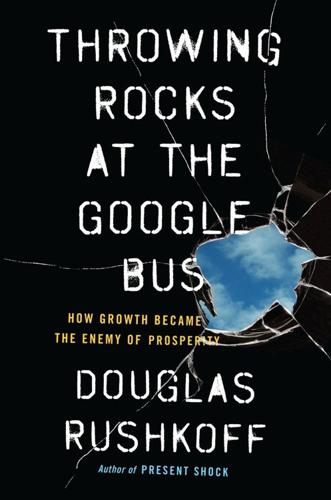
Throwing Rocks at the Google Bus: How Growth Became the Enemy of Prosperity
by
Douglas Rushkoff
Published 1 Mar 2016
Trebor Scholz, “Crowdmilking,” collectivate.net, March 9, 2014. 42. Andrew Keen, The Internet Is Not the Answer (New York: Atlantic Monthly Press, 2015). 43. Vivek Wadhwa, “The End of Chinese Manufacturing and Rebirth of U.S. Industry,” forbes.com, July 23, 2012. 44. Daniel Bell, The Coming of Post-Industrial Society: A Venture in Social Forecasting (New York: Basic Books, 1976). 45. David Rotman, “How Technology Is Destroying Jobs,” technologyreview.com, June, 12, 2013. 46. Ibid. 47. Thomas Piketty, Capital in the Twenty-First Century, trans. Arthur Goldhammer (Cambridge, Mass.: Belknap Press, 2014). 48.

Capitalism Without Capital: The Rise of the Intangible Economy
by
Jonathan Haskel
and
Stian Westlake
Published 7 Nov 2017
The historian James Beniger (1986) argued that modern information technology developed as it did because of an overwhelming need to control production and operations, first on the part of the military, and then in the world of business—by this logic, IT and the research that led to it was shaped by an economy hungry for intangible investment rather than intangible investment happening as a response to the serendipitous invention of various forms of IT.6 Industrial Structure One plausible explanation for the rise in intangible investment is that the balance of what businesses produce has changed. Everyone knows that the output of developed countries, even ones with large manufacturing sectors like Germany or Japan, consists mostly of services. Some of the sociologists and futurists who first heralded the rise of “post-industrial society” were also prophets of what became known as the knowledge economy. Is it true, then, that the modern world is replacing dark satanic mills with service businesses that invest in systems, information, and ideas? It turns out the evidence is not so clear-cut. Figure 2.7 shows that, in all our countries, the service sector was, in the late 1990s, more tangible-intensive, but this has reversed.

The Great Divergence: America's Growing Inequality Crisis and What We Can Do About It
by
Timothy Noah
Published 23 Apr 2012
A decade after the Nobelists sent their letter, the Harvard sociologist (and onetime Fortune magazine journalist) Daniel Bell observed that it was “one more instance of the penchant for overdramatizing a momentary innovation and blowing it up far out of proportion to its actuality.” See Daniel Bell, The Coming of Post-Industrial Society: A Venture in Social Forecasting (New York: Basic Books, 1999; originally published in 1973), 463. 8. Frank Levy and Richard J. Murnane, The New Division of Labor: How Computers Are Creating the Next Job Market (Princeton, NJ.: Princeton University Press, 2004), 13–25; and Farhad Manjoo, “Will Robots Steal Your Job?
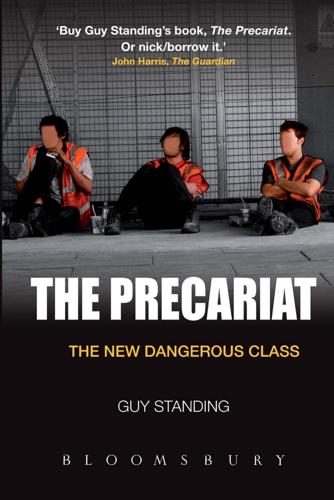
The Precariat: The New Dangerous Class
by
Guy Standing
Published 27 Feb 2011
Available at http://search.japantimes.co.jp/print/eo20100705bc.html [accessed 2 December 2010]. Choe, S.-H. (2009), ‘South Korea Fights Slump through Hiring, Not Firing’, International Herald Tribune, 2 April, pp. 1, 4. 184 BIBLIOGRAPHY 185 Coase, R. H. (1937), ‘The Nature of the Firm’, Economica, 4(16): 386–405. Cohen, D. (2009), Three Lectures on Post-Industrial Society, Cambridge, MA: Massachusetts Institute of Technology Press. Cohen, N. (2010), ‘Now, More than Ever, the Poor Need a Voice’, Observer, 7 October, p. 33. Coleman, D. (2010), ‘When Britain Becomes “Majority Minority”’, Prospect, 17 November. Collison, M. (1996), ‘In Search of the High Life’, British Journal of Criminology, 36(3): 428–43.

The New Gold Rush: The Riches of Space Beckon!
by
Joseph N. Pelton
Published 5 Nov 2016
Modern humans have a much higher standard of living today, but one of the prices we pay is almost total dependence on electric power systems, modern transport and distribution systems, banking systems and more. The frightening question raised by this book is, could we survive the loss of our space systems? The Increasing Risks from Cosmic Hazards We humans today are truly more vulnerable as a post-industrial society than we were even in the days of the caveman. It is much easier to find a new cave, and to find a new place to hunt and forage, than to build a new city and a completely new modern infrastructure. And now we learn that the level of threat to humanity from cosmic hazards is greater than previously understood.
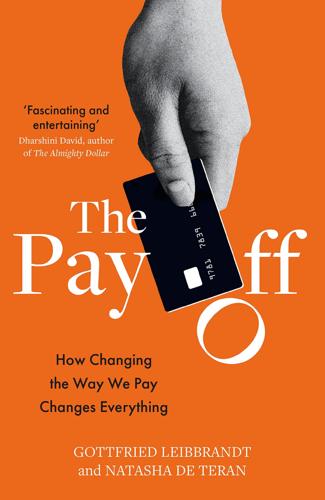
The Pay Off: How Changing the Way We Pay Changes Everything
by
Gottfried Leibbrandt
and
Natasha de Teran
Published 14 Jul 2021
The second row shows the invoices we pay to, and the money we get from, businesses and governments – rent, utility bills and taxes, as well as our wages, salaries and social benefits. This row includes the business-to-business payments that underpin supply chains and the general commerce that is the engine of any (post-)industrial society. These transactions are less frequent than our daily purchases, around one per week per person globally, but they are much bigger, averaging around $3,000. In total value, they represent well over ten times global GDP. Table 2. Overview of major payment flows. Payment flow Transactions (billion/year) Total value ($ trillion/year) Average value ($/transaction) Purchases 1,800 37 20 Invoices 300 900 3000 Financial 2 5,000 2,500,000 Figures for 25 BIS/CPMI countries, 2019.
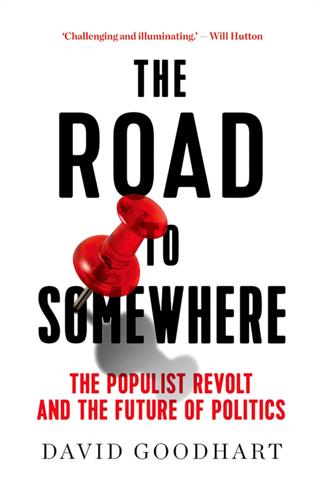
The Road to Somewhere: The Populist Revolt and the Future of Politics
by
David Goodhart
Published 7 Jan 2017
This is the fate of too many Somewhere children in what economist Bob Rowthorn has called the ‘dual economy’, with about 35 to 40 per cent of people working in high productivity sectors—from the car industry to finance—and another 35 per cent working in low productivity service jobs, mainly in the private sector. The Disappearing Middle As we have evolved from an industrial to a post-industrial society over the past fifty years, most people in Britain have become much richer and generally now lead more comfortable, healthier and freer lives. And in the working life of the average Briton there is less drudgery and physical strain and much greater probability of a career rather than just a job.

Loneliness: Human Nature and the Need for Social Connection
by
John T. Cacioppo
Published 9 Aug 2009
His reproductive objectives demand that he keep track of all females in the troop, any of whom may sneak away at any time to have sex with a male she prefers over the alpha. Among the !Kung we saw that violations of the pair bond for sexual fidelity were far from unusual within the human environment of evolutionary adaptation. In today’s post-industrial societies, DNA testing to sort out uncertain paternity is a thriving business. To stay on top, the alpha not only needs accurate information; he needs to refine his own manipulative use of it as his physical powers decline with age. On the other side of the equation, an upstart chimp, hoping to rise in status, learns to manipulate by dissembling.
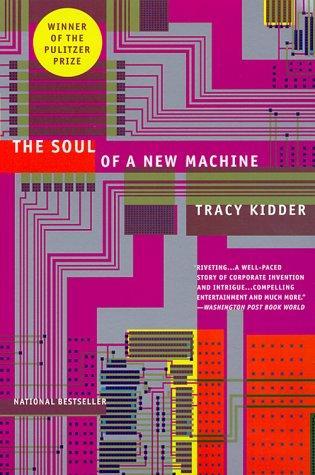
The Soul of a New Machine
by
Tracy Kidder
Published 1 Jan 1981
Computers had become less noticeable as they had become nailer, more reliable, more efficient, and more numerous. Surely this happened by design. Obviously, to sell the devices far and wide, manufacturers had to strive to make them easy to use and, wherever possible, invisible. Were computers a profound, unseen hand? In The Coming of Post-Industrial Society, Daniel Bell asserted that new machines introduced in the nineteenth century, such as the railroad train, made larger changes in "the lives of individuals than computers have. Tom West liked to say: "Let's talk bout bulldozers. Bulldozers have had a hell of a lot bigger effect on people's lives."
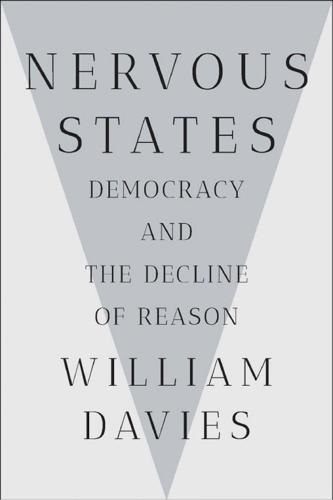
Nervous States: Democracy and the Decline of Reason
by
William Davies
Published 26 Feb 2019
Since the 1980s, policymakers in many countries have deliberately sought to encourage greater commercial applications of scientific knowledge, to develop a “knowledge economy.” Treating knowledge as a private economic asset has led to a vast expansion in consultancy services, such that by the late 1990s, one-sixth of all graduates from American Ivy League universities and Oxford and Cambridge were going into careers in management consultancy.5 In post-industrial societies “creative industries” became viewed as a gold mine, as long as copyright enforcement was strong enough to protect their assets. Universities have been encouraged, and often required, to act more like commercial entities, and to pay more attention to the commercial value of research and education.
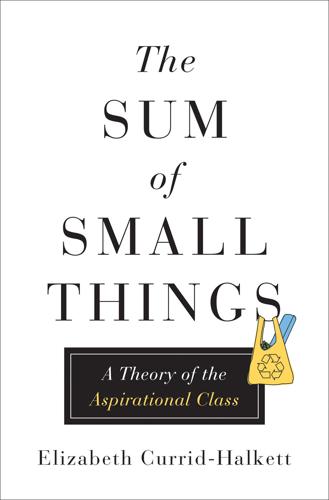
The Sum of Small Things: A Theory of the Aspirational Class
by
Elizabeth Currid-Halkett
Published 14 May 2017
The validity of consumption data: Are the Consumer Expenditure Interview and Diary Surveys informative? In Improving the measurement of consumer expenditures, edited by C. Carroll, T. Crossley, & J. Sabelhaus, 204–240. Chicago: University of Chicago Press, 2015. Bell, D. (1973). The coming of post-industrial society: A venture in social forecasting. New York: Basic Books. ———. (1976). The cultural contradictions of capitalism. New York: Basic Books. Bennhold, K. (2012, April 26). Class war returns in new guises. New York Times. Retrieved from http://www.nytimes.com/2012/04/27/world/europe/27iht-letter27.html.

Revolution Française: Emmanuel Macron and the Quest to Reinvent a Nation
by
Sophie Pedder
Published 20 Jun 2018
This French pattern matched that noted in America by John Judis and Ruy Teixeira, who showed in 2004 how the socially liberal politics of growing post-industrial big-city America were being shaped by the university-educated voters attracted to their service-based economies: ‘the new professionals who live according to the ethics of post-industrial society’.3 The parallel with France is inexact. But just as America’s fast-growing service-based urban centres voted for Barack Obama and Hillary Clinton, so France’s thriving regional cities, with their uncomplicated links to globalization and technological change, are Macron territory. In the second-round presidential vote Macron scored a massive 90 per cent in Paris, 88 per cent in Rennes and 86 per cent in Bordeaux.
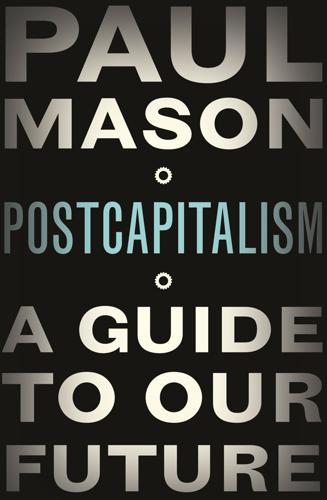
Postcapitalism: A Guide to Our Future
by
Paul Mason
Published 29 Jul 2015
Marx, I think, abandoned this thought experiment because it had scant relevance to the society he lived in. But it has massive relevance for ours. A THIRD KIND OF CAPITALISM? To the neoliberals, the emergence of info-capitalism seemed like their greatest achievement. They could barely conceive that it might contain flaws. Intelligent machines, they believed, would create a post-industrial society in which everybody did high-value, knowledge-based work and in which all the old social conflicts died out.47 Information would enable the idealized capitalism of the textbooks – with transparency, perfect competition and equilibrium – to become reality. In the late 1990s the literature of the mainstream – from Wired magazine to the Harvard Business Review – was filled with celebratory descriptions of the new system.

The Meritocracy Myth
by
Stephen J. McNamee
Published 17 Jul 2013
The simple fact is that there is far more intelligence, talent, ability, and hard work in the population as a whole than there are people who are lucky enough to find themselves in a position to take advantage of these qualities. References Averitt, Robert T. 1968. Dual Economy. New York: Norton. Barnsley, R., and A. H. Thompson. 1988. “Birthdate and Success in Minor Hockey: Key to NHL.” Canadian Journal of Behavioral Science 20, no. 2: 167–76. Bell, Daniel. 1976. The Coming of Post-Industrial Society. New York: Basic Books. Bernhardt, Annette, Martina Morris, Mark Handcock, and Mark Scott. 2001. Divergent Paths: Economic Mobility in the New American Labor Market. New York: Sage. Blau, Joel. 1999. Illusions of Prosperity: America’s Working Families in an Age of Economic Insecurity. New York: Oxford University Press.

The Human City: Urbanism for the Rest of Us
by
Joel Kotkin
Published 11 Apr 2016
“Potable water and sanitation in Tenochtitlan: Aztec culture,” IWA Publishing, http://ws.iwaponline.com/content/7/1/147. BECKERT, Sven. (2001). The Monied Metropolis: New York City and the Consolidation of the American Bourgeoisie, Cambridge: Cambridge University Press. BELL, Daniel. (1973). The Coming of Post-Industrial Society: A Venture in Social Forecasting, New York: Basic Books. BELL, Daniel A. and Avner DE-SHALIT. (2011). The Spirit of Cities: Why the Identity of a City Matters in a Global Age, Princeton, New Jersey: Princeton University Press. BELLMAN, Eric. (2010, July 9). “A New Detroit Rises in India’s South,” Wall Street Journal, http://www.wsj.com/articles/SB10001424052748704111704575354853980451636.
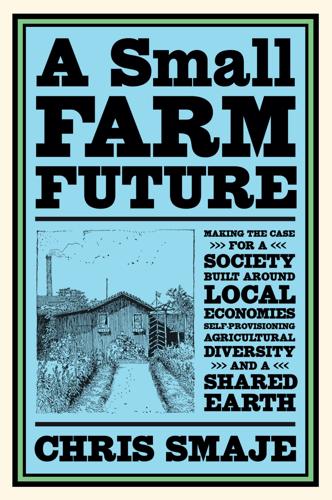
A Small Farm Future: Making the Case for a Society Built Around Local Economies, Self-Provisioning, Agricultural Diversity and a Shared Earth
by
Chris Smaje
Published 14 Aug 2020
Wise authors avoid speculating on future events because time usually makes their words look foolish, but such dignity isn’t a luxury our generation can afford. We need to start imagining another world into being right now. Modern thinkers have coined numerous terms for the way we now live to distinguish it from the past: the affluent society, the effluent society, industrial society, post-industrial society, Industria, consumer society, postmodern society, the information society, the virtual society. These all capture something significant about our times, but they too easily allow us to forget that in fact our modern societies are agrarian societies, just like almost all other human societies over the past few thousand years.
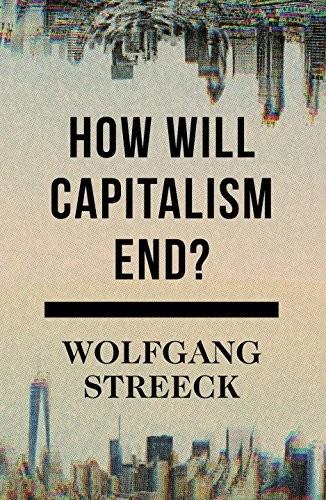
How Will Capitalism End?
by
Wolfgang Streeck
Published 8 Nov 2016
Obviously the incumbent management of advanced and not-so-advanced capitalism is uniquely clueless: consider the senseless production of money to stimulate growth in the real economy; the desperate attempts to restore inflation with the help of negative interest rates; and the apparently inexorable coming apart of the modern state system on its periphery.57 But there is also the absence of a vision of a practically possible progressive future, of a renewed industrial or new post-industrial society developing further and at the same time replacing the capitalist society of today. Not just capital and its running dogs but also their various oppositions lack a capacity to act collectively. Just as capitalism’s movers and shakers do not know how to protect their society from decay, and in any case would lack the means to do so, their enemies, when it comes to the crunch, have to admit that they have no idea of how to replace neoliberal capitalism with something else – see the Greek SYRIZA government and its capitulation in 2015 when the ‘Eurogroup’ began to play hardball and SYRIZA, to mix metaphors, was forced to show its hand.

In Our Own Image: Savior or Destroyer? The History and Future of Artificial Intelligence
by
George Zarkadakis
Published 7 Mar 2016
They may not be discussed as explicitly as I have done here, but implicitly they are everywhere one looks. They inform fashion, military tactics, government policies, corporate cultures, video games and business models on the web. At the same time, social networks erode previous social structures and reintroduce tribalism into our post-industrial societies. Marketers nowadays talk about ‘tribes on the Internet’ when they plan the next marketing strategy using social media. Consumerism is transforming and adapting to this new paradigm, which is reminiscent of pre-industrial epochs. We are all different now and we all have individualised – or tribalised – needs.

Radicals Chasing Utopia: Inside the Rogue Movements Trying to Change the World
by
Jamie Bartlett
Published 12 Jun 2017
It often takes outsiders to suggest that another world is possible. Even if they are not completely right—no single idea ever is—they are often half right. And we only know which half if radical ideas are allowed to flourish. The free-love commune Tamera might not be a plausible model for a complex post-industrial society, but water retention, energy autonomy and switched-off mobile phones are things we could all benefit from. Zoltan might be mostly interested in living forever, but his quixotic pursuit forces us to ponder the implications of technologies—AI and anti-ageing in particular—that are approaching quickly, and will have enormous ramifications.

Making the Modern World: Materials and Dematerialization
by
Vaclav Smil
Published 16 Dec 2013
At the same time, it must be kept in mind that data for inexpensive, readily available bulk construction materials (particularly for sand and gravel) that are usually sold not far from their points of extraction are generally much less reliable than the statistics for metal ores and industrial nonmetallic minerals that are globally traded. Economic realities dictate that the diffusion of successive changes of human organization – urbanization, industrialization, post-industrial societies characterized by mass consumption – promote, widen, and often also accelerate the use of materials. Although the resulting outcomes must be expected, some of the contrasts still amaze: for example, the world now consumes in one year nearly as much steel as it did during the first post-World War II decade, and (even more incredibly) more cement than it consumed during the first half of the twentieth century.

Tools for Thought: The History and Future of Mind-Expanding Technology
by
Howard Rheingold
Published 14 May 2000
.: MIT Press, 1980), 371. [2] C. Blair, "Passing of a great Mind," Life,, February 25, 1957, 96. [3] Stanislaw Ulam, "John von Neumann, 1903-1957," Bulletin of the American Mathematical Society, vol. 64, (1958), 4. [4] Goldstine, The Computer, 182. [5] Daniel Bell, The coming of Post-Industrial Society (New York: Basic Books. 1973), 31. [6] Katherine Fishman, The Computer Establishment (New York: McGraw-Hill Book Co., 1981), 22. [7] Ibid., 24. [8] Goldstine, The Computer, 153. [9] Ibid., 149. [10] Heims, von Neumann and Wiener, 186. [11] Goldstine, The Computer, 196
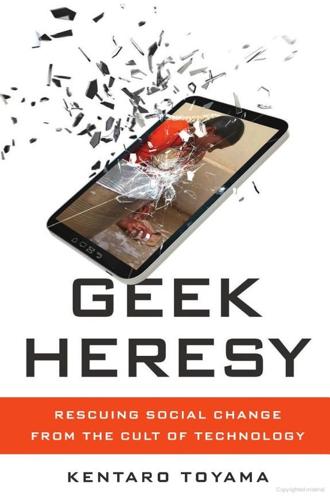
Geek Heresy: Rescuing Social Change From the Cult of Technology
by
Kentaro Toyama
Published 25 May 2015
LiveMint, Dec. 16, 2010, www.livemint.com/Opinion/Y3Rhb5CXMkGuUIyg4nrc3I/Limits-of-ICT-in-education.html. ———. (2012). Silver bullets in education. LiveMint, April 4, 2012, www.livemint.com/Opinion/BPS5faZixFQKrlUFGlivUL/Silver-bullets-in-education.html. Bell, Daniel. (1999). The Coming of Post-Industrial Society: A Venture in Social Forecasting. Basic Books. Bell, Genevieve. (2006). The age of the thumb: A cultural reading of mobile technologies from Asia. Knowledge, Technology, & Policy, Summer 2006, 19(2):41–57, http://link.springer.com/article/10.1007%2Fs12130-006-1023-5. Bendavid, E., and J.
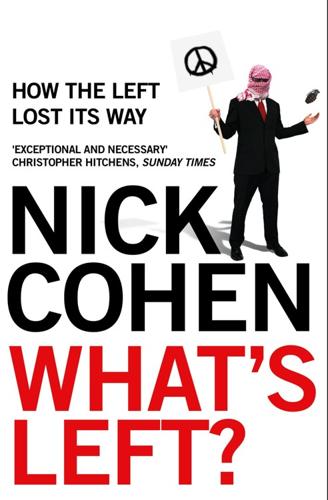
What's Left?: How Liberals Lost Their Way
by
Nick Cohen
Published 15 Jul 2015
The names that Bohemia adopted for itself – avant-garde, advanced, progressive, le dernier cri, new wave, modernist, postmodernist – reflect the Anxiety of Cool, the relentless struggle to get out in front and control the production of new cultural information.’ Spotting trends and selling them was turning into a big business in post-industrial societies. But each new wave carried high culture further away from the working class. Rose quoted the opinions of young working-class men of theatres and art house cinemas. ‘Theatre goers? Someone well off,’ said one. ‘It’s a class thing.’ Then he searched the Modern Language Association of America’s international database of academic books published between 1991 and 2000.
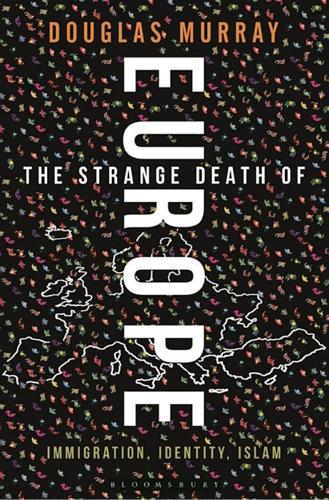
The Strange Death of Europe: Immigration, Identity, Islam
by
Douglas Murray
Published 3 May 2017
The fact that our country, our state and our city celebrate this holiday around this man who murdered and enslaved and raped indigenous people and decimated an entire population.’14 Of course, none of this had happened in her lifetime, nor the lifetime of anybody who she had ever known. Once again both perpetrators and victims are dead and there are few if any ways to alleviate such sentiments. Although one option is, as in Australia, to play into those agrarian myths and romances that feature around the world but have such a niche in Western post-industrial societies. These see the establishment of modern civilisation as having not merely wrecked once-beautiful landscapes but as having filled hitherto unsullied human beings with the deadliest sins of human greed. It is a vision that was encapsulated, though not invented, by Jean-Jacques Rousseau, but has taken on a particular popularity in the late twentieth and early twenty-first century.

Invisible Women
by
Caroline Criado Perez
Published 12 Mar 2019
Chapter 4 1 Goldin, Claudia and Rouse, Cecilia (2000), ‘Orchestrating Impartiality: The Impact of ‘Blind’ Auditions on Female Musicians’, American Economic Review, 90:4, 715–41 2 http://www.stltoday.com/entertainment/arts-and-theatre/in-orchestras-a-sea-change-in-gender-proportions/article_25cd8c54-5ca4-529f-bb98-8c5b08c64434.html 3 https://nyphil.org/about-us/meet/musicians-of-the-orchestra 4 Kunovich, Sheri and Slomczynski, Kazimierz M. (2007), ‘Systems of Distribution and a Sense of Equity: A Multilevel Analysis of Meritocratic Attitudes in Post-industrial Societies’, European Sociological Review, 23:5, 649–63; Castilla., Emilio J. and Benard, Stephen (2010), ‘The Paradox of Meritocracy in Organizations’, Administrative Science Quarterly, 55:4, 543–676 5 Reynolds, Jeremy and Xian, He (2014), ‘Perceptions of meritocracy in the land of opportunity’, Research in Social Stratification and Mobility, 36, 121–37 6 Castilla and Benard (2010) 7 http://fortune.com/2014/08/26/performance-review-gender-bias/ 8 Castilla and Benard (2010) 9 http://stateofstartups.firstround.com/2016/#highlights-diversity-prediction 10 Uhlmann, Eric Luis and Cohen, Geoffrey L. (2007), ‘“I think it, therefore it’s true”: Effects of self-perceived objectivity on hiring discrimination’, Organizational Behavior and Human Decision Processes, 104:2, 207–23; Castilla and Benard (2010) 11 https://www.newyorker.com/magazine/2017/11/20/the-tech-industrys-gender-discrimination-problem 12 https://www.newyorker.com/magazine/2017/11/20/the-tech-industrys-gender-discrimination-problem 13 https://hbr.org/2014/10/hacking-techs-diversity-problem 14 https://www.theatlantic.com/magazine/archive/2017/04/why-is-silicon-valley-so-awful-to-women/517788/ 15 http://www.latimes.com/business/la-fi-women-tech-20150222-story.html#page=1 16 Reynolds and Xian (2014) 17 Handley, Ian M., Brown, Elizabeth R., Moss-Racusin, Corinne A. and Smith, Jessi L. (2015), ‘Quality of evidence revealing subtle gender biases in science is in the eye of the beholder’, Proceedings of the National Academy of Sciences of the United States of America, 112:43, 13201–13206 18 https://erc.europa.eu/sites/default/files/document/file/Gender_statistics_April_2014.pdf; Wenneras, C. and Wold, A. (1997), ‘Nepotism and sexism in peer-review’, Nature, 387:341; Milkman, Katherine L., Akinola, Modupe and Chugh, Dolly (2015), ‘What Happens Before?
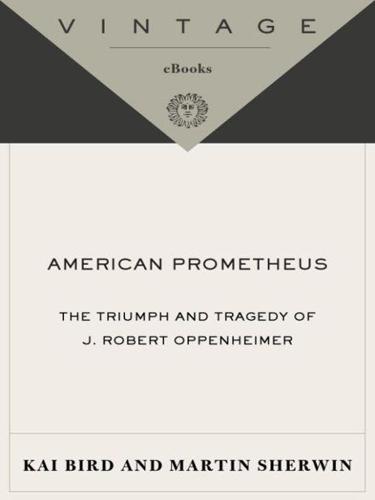
American Prometheus: The Triumph and Tragedy of J. Robert Oppenheimer
by
Kai Bird
and
Martin J. Sherwin
Published 18 Dec 2007
Merry, Taking on the World, pp. 262–63. 548 “you opened a good many”: Bird, The Chairman, p. 425. 548 “The case was ultimately”: Bernstein, “The Oppenheimer Loyalty-Security Case Reconsidered,” Stanford Law Review, July 1990, p. 1388. 548 “I can think of no”: Eisenhower to Strauss, 6/16/54, Ann Whitman DDE Diaries, June 1954 folder (1), box 7, DDEL. 548 “the problem of how far”: McGrath, Scientists, Business, and the State, 1890–1960, p. 167. 549 Mortified, Zuckert beat: Strauss, memo to file, 12/5/57, box 67, Strauss Papers, HHL. 549 “it is probably quite impossible”: Thorpe, “J. Robert Oppenheimer and the Transformation of the Scientific Vocation,” dissertation, p. 588. 549 “messianic role of the scientists”: Daniel Bell, The Coming of Post-Industrial Society, p. 400; Thorpe, “J. Robert Oppenheimer and the Transformation of the Scientific Vocation,” dissertation, p. 551. 549 “Scientists and administrators”: Ambrose, Eisenhower, p. 612; McGrath, Scientists, Business, and the State, 1890–1960, p. 4. Chapter Thirty-eight: “I Can Still Feel the Warm Blood on My Hands” 551 “Robert and I”: Jane Wilson to Kitty Oppenheimer, 6/20/54, Robert Wilson folder, box 78, JRO Papers. 551 “Aren’t you tired”: Babette Oppenheimer Langsdorf to Philip Stern, 7/10/67, Stern Papers, JFKL. 551 known “all the time”: FBI “Summary for July 8, 1954,” sect. 45, doc. 1858, JRO FBI file. 551 “One day he would”: Harold Cherniss, interview by Alice Smith, 4/21/76, p. 24. 551 “damn fool”: Francis Fergusson, interview by Sherwin, 6/23/79, pp. 6–8. 552 “He was like”: Ibid. 552 “dry crucifixion”: Brown, Through These Men, p. 288. 552 “Much of his previous”: The Day After Trinity, Jon Else, transcript, p. 76, Sherwin Collection. 552 “a sad man”: Serber, Peace and War, p. 183. 552 “looking actually happy”: Lilienthal, The Journals of David E.
…
New York: Berkeley Books, 2000. Baruch, Bernard. Baruch: My Own Story. New York: Henry Holt & Co., 1957. ———. The Public Years. New York: Holt, Rinehart & Winston, 1960. Belfrage, Cedric. The American Inquisition, 1945–1960. Indianapolis and New York: Bobbs-Merrill Co., 1973. Bell, Daniel. The Coming of Post-Industrial Society: A Venture in Social Forecasting. New York: Basic Books, 1973. Benson, Robert Louis, and Michael Warner. Venona: Soviet Espionage and the American Response, 1939–1957. Washington, DC: National Security Agency and Central Intelligence Agency, 1996. Bernstein, Barton J., ed. The Atomic Bomb: The Critical Issues.
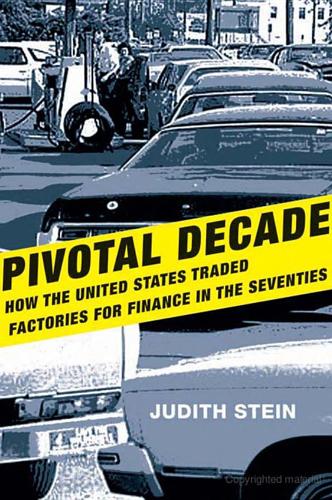
Pivotal Decade: How the United States Traded Factories for Finance in the Seventies
by
Judith Stein
Published 30 Apr 2010
Karen Orren, “Union Politics and Postwar Liberalism in the United Sates,” Studies in American Political Development 1 (1986), 215–52. 58. U.S. Bureau of Census, Historical Statistics of the United States: Colonial Times to 1970 (Washington, D.C.: Government Printing Office, 1976), 382–85. 59. Daniel Bell, “The Post-Industrial Society,” in Technology and Social Change, ed. Eli Ginzberg (New York: Columbia University Press, 1964), 44–49. 60. U.S. Bureau of Census, Labor Force Characteristics (Washington, D.C.: Government Printing Office, 1970), 217. 61. Todd Gitlin, The Sixties: Years of Hope, Days of Rage (New York: Bantam, 1987), 1–135; James Miller, Democracy Is in the Streets: From Port Huron to the Siege of Chicago (Cambridge, Mass.: Harvard University Press, 1987), 1–126. 62.
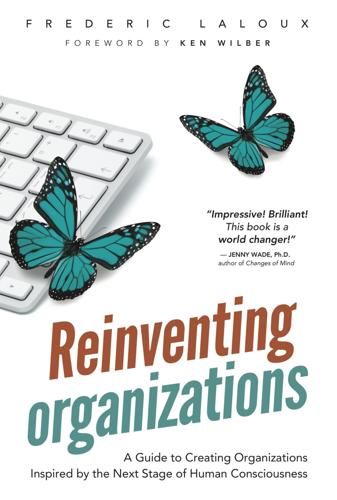
Reinventing Organizations: A Guide to Creating Organizations Inspired by the Next Stage of Human Consciousness
by
Frederic Laloux
and
Ken Wilber
Published 9 Feb 2014
Another way to avoid attaching judgment to stages is to recognize that each stage is well adapted to certain contexts. If we were caught in a civil war with thugs attacking our house, Impulsive-Red would be the most appropriate paradigm to think and act from so as to defend ourselves. On the other hand, in peaceful times in post-industrial societies, Red is not as functional as some of the later stages. The complexity of human evolution The discussion of stages and colors is only an abstraction of reality, just like a geographical map is only a simplified depiction of a territory; it gives us distinctions that facilitate understanding of a complex underlying reality, but it cannot claim to offer a full portrayal of reality.
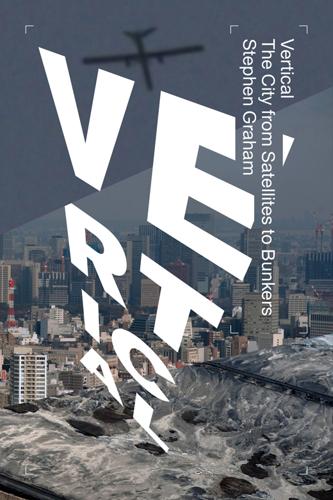
Vertical: The City From Satellites to Bunkers
by
Stephen Graham
Published 8 Nov 2016
Most notable here have been the three series of the History Channel’s Cities of the Underworld (2007–9). 45Don DeLillo, Underworld, London: Picador, 1997, p. 248, cited in Beck ‘Concrete Ambivalence’, p. 95. 46This term comes from Frank Watson, Cold War Sites in England, London: Hush House Publishers, 2004. 47See Owen Hatherley, ‘Fossils of Time Future: Bunkers and Buildings from the Atlantic Wall to the South Bank’, in Robin Mackay, ed., Collapse: Geo/Philosophy, vol. 6, Oxford: Urbanomic, 2010. 48See Vanderbilt, Survival City; Joseph Masco, ‘“Survival Is Your Business”: Engineering Ruins and Affect in Nuclear America’, Cultural Anthropology 23:2, 2008, pp. 361–98. 49Beck, ‘Concrete Ambivalence’, p. 82. 50Wayne Cocroft and John Schofield, eds, A Fearsome Heritage: Diverse Legacies of the Cold War, Walnut Creek, CA: Left Coast, 2007; Wayne Cocroft and Roger Thomas, Cold War: Building for Nuclear Confrontation 1946–89, Swindon, UK: English Heritage, 2003. 51See David Monteyne, Fallout Shelter: Designing for Civil Defense in the Cold War, Minneapolis: University of Minnesota Press, 2011. 52See Hugh Gusterson, ‘Nuclear Tourism’, Journal for Cultural Research 8:1, 2004, pp. 23–31; Sue Roff, ‘The Glass Bead Game: Nuclear Tourism at the Australian Weapon Test Sites’, Medicine, Conflict and Survival 14:4, 1998, pp. 290–302. 53See Gretchen Heefner, The Missile Next Door: The Minuteman in the American Heartland, Cambridge, MA: Harvard University Press, 2012. 54Titan Missiles Museum, at titanmissilemuseum.org. 55See the Berliner Unterwelten website at berliner-unterwelten.de. 56Disused bunkers built during the Cold War deep into the Alps in Switzerland, meanwhile, are now used as residences, hotels, museums and even mushroom farms. 57Situationist International, ‘The Geopolitics of Hibernation’, in Ken Knabb, ed. and trans., Situationist International Anthology, Berkeley: University of California Press, 1981, pp. 78–9. 58Brian Dillon, ‘Decline and Fall’, Frieze Magazine 130, April 2010, cited in Beck, ‘Concrete Ambivalence’, p. 87. 59See Italo Calvino, Invisible Cities, London: Random House, 2010; Knabb, Situationist International. 60Situationist International, ‘The Bad Days Will End’, in Knabb, Situationist International, p. 197. 61See McKenzie Wark, The Beach Beneath the Street: The Everyday Life and Glorious Times of the Situationist International, London: Verso, 2011. 62Bradley Garrett, ‘Urban Exploration as Heritage Placemaking’, in Hilary Orange, ed., Reanimating Industrial Spaces: Conducting Memory Work in Post-industrial Societies, Oakland: Left Coast Press, 2013. 63Bradley Garrett, ‘Security Breach: The London Mail Rail’, 24 April 2011, available at placehacking.co.uk. See also Bradley Garrett, Explore Everything: Place-Hacking the City, London: Verso, 2013. 64Bradley Garrett, ‘Undertaking Recreational Trespass: Urban Exploration and Infiltration’, Transactions of the Institute of British Geographers 39:1, 2014, pp. 1–13. 65The UE movement has also been criticised as being overly dominated, not by ideas of resistance, but by an exclusionary notion of ‘exploration’ based on old notions of the heroic male conqueror.
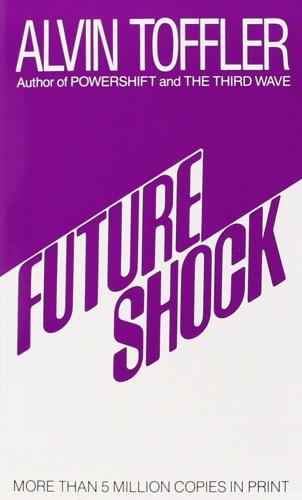
Future Shock
by
Alvin Toffler
Published 1 Jun 1984
(London: Hodder and Stoughton, 1965.) [149] Gordon, Theodore J., The Future. (New York: St. Martin's Press, 1965.) [150] Gordon, Theodore J., and Helmer, Olaf, Report on a Long-Range Forecasting Study. (Santa Monica, Calif.: The RAND Corporation, September, 1964.) [151] Gross, Bertram M., Space-Time and Post-Industrial Society. (Syracuse, N. Y.: Maxwell Graduate School, Syracuse University. Comparative Administration Group Occasional Paper, May, 1966.) [152] Gumucio, Mariano B., Los Dias Que Vendrán. (Caracas: Monte Avila Editores, 1968.) [153] Heilbroner, Robert, The Future as History. (New York: Grove Press, 1959.) [154] Helmer, Olaf, Gordon, Theodore J., Enzer, Selwyn, De Brigard, Raul, and Rochbert, Richard, Development of Long-Range Forecasting Methods for Connecticut.
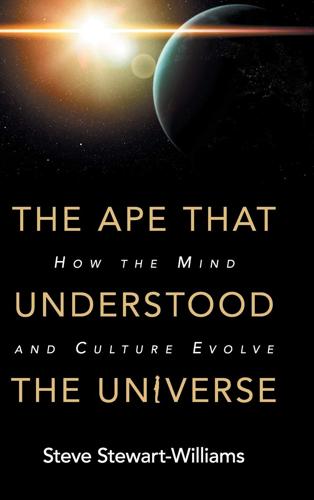
The Ape That Understood the Universe: How the Mind and Culture Evolve
by
Steve Stewart-Williams
Published 12 Sep 2018
Just as we haven’t evolved any new bodily organs in the last 10,000 years (a spare pair of hands, say), we haven’t evolved any new psychological adaptations, either: a new emotion, for example, or a new cognitive faculty. It’s very unlikely that we’ve evolved any psychological adaptations specifically for agricultural life. And it’s extremely unlikely that we’ve evolved any psychological adaptations specifically for life in industrial or post-industrial societies: adaptations that fit us to city living, for instance, or capitalism, science, or tech.44 But although evolutionary psychologists don’t deny that we’ve done some evolving since we gave up our hunting and gathering ways, it’s fair to say that they’ve sometimes underestimated quite how much we’ve done.

Evil Geniuses: The Unmaking of America: A Recent History
by
Kurt Andersen
Published 14 Sep 2020
Inequality and Growth: Patterns and Policy. 2 vols. New York: Palgrave Macmillan, 2016. Baum, Sandy. “The Evolution of Student Debt in the United States.” In Student Loans and the Dynamics of Debt, edited by Brad Hershbein and Kevin M. Hollenbeck. Kalamazoo, Mich.: Upjohn Institute, 2015. Bell, Daniel. The Coming of Post-Industrial Society: A Venture in Social Forecasting. New York: Basic Books, 1976. ———. “The Cultural Contradictions of Capitalism.” Journal of Aesthetic Education 6, nos. 1–2 (1972): 11–38. ———. Work and Its Discontents: The Cult of Efficiency in America. Boston: Beacon Press, 1956. Berman, Marshall.
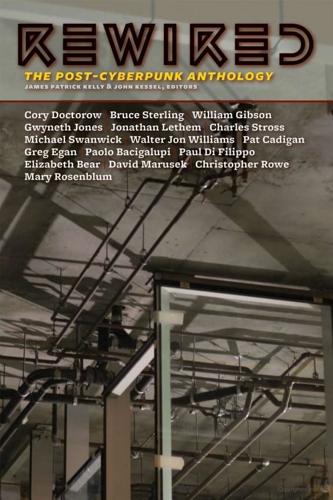
Rewired: The Post-Cyberpunk Anthology
by
James Patrick Kelly
and
John Kessel
Published 30 Sep 2007
Sure, there’s the rage, and It, whatever It is, should indeed pay a terrible price for making us like this… If we were really able to get hold of Whatever-It-Is, we ought to be able to talk intelligibly, at least to our contemporaries, in our own voices, and be heard and understood, and even, possibly, appreciated. I don’t know what that kind of fiction would look like, but it would be the ‘native literature of a post-industrial society,’ and it would look right, and feel natural, and we’d be happy with it.” Kessel to Sterling, 8 May 1987: “I’ve come to feel that wasn’t such a bad fate, to acknowledge that all our ladders start there, in our mundane existence… You talk about just this with your understanding of the rage at the mundane world that lurks behind all our futures, be they brightly painted or grimly sketched….
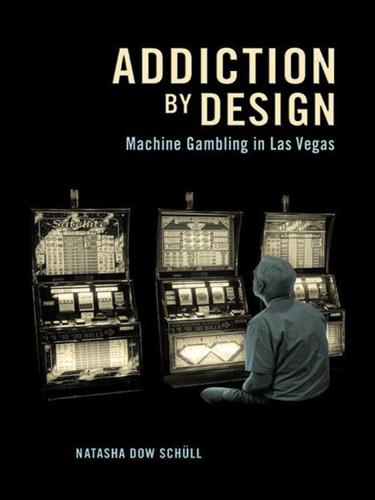
Addiction by Design: Machine Gambling in Las Vegas
by
Natasha Dow Schüll
Published 15 Jan 2012
Reflexive Modernism: Politics, Tradition, and Aesthetics in Modern Social Order. Stanford, CA: Stanford University Press. Becker, Howard. 1986. “Consciousness, Power, and Drug Effects.” In Doing Things Together: Selected Papers, edited by H. Becker. Evanston, IL: Northwestern University Press. Bell, Daniel. 1973. The Coming of Post-Industrial Society: A Venture in Social Forecasting. New York: Basic Books. ———. 1976. The Cultural Contradictions of Capitalism. New York: Basic Books. Benjamin, Walter. 1968 [1939]. “On Some Motifs in Baudelaire.” In Illuminations: Essays and Reflections, edited by H. Arendt, translated by H. Zohn, 155–200.
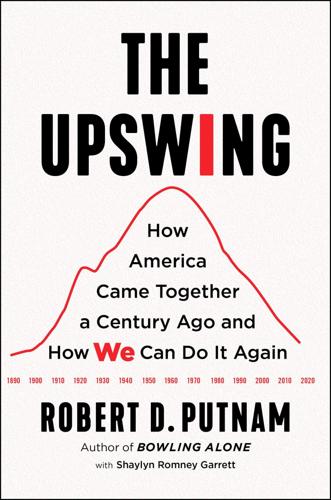
The Upswing: How America Came Together a Century Ago and How We Can Do It Again
by
Robert D. Putnam
Published 12 Oct 2020
(New York: Vintage, 1994), 15–16, 286–87. 27 Interestingly, according to Ngram, the term “self-actualization” exploded into common usage during the 1960s, peaked in 1975, just as Inglehart was formulating his argument, and then virtually disappeared from American culture. Inglehart’s initial formulation of his argument was Ronald Inglehart, “The Silent Revolution in Europe: Intergenerational Change in Post-Industrial Societies,” American Political Science Review 65, no. 4 (1971): 991–1017, doi:10.2307/1953494, and his subsequent book, Ronald Inglehart, The Silent Revolution: Changing Values and Political Styles Among Western Publics (Princeton: Princeton University Press, 1977). Like all good empirically rooted theorists, Inglehart has expanded and to some extent modified his theory over the nearly half century since it was first published.
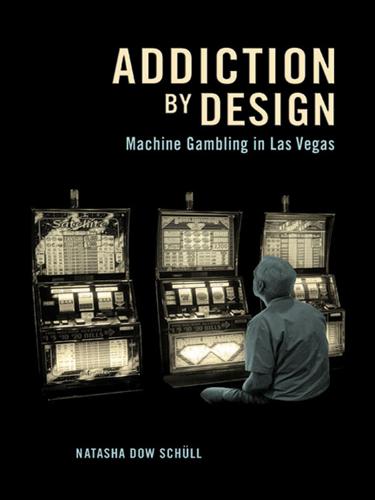
Addiction by Design: Machine Gambling in Las Vegas
by
Natasha Dow Schüll
Published 19 Aug 2012
Reflexive Modernism: Politics, Tradition, and Aesthetics in Modern Social Order. Stanford, CA: Stanford University Press. Becker, Howard. 1986. “Consciousness, Power, and Drug Effects.” In Doing Things Together: Selected Papers, edited by H. Becker. Evanston, IL: Northwestern University Press. Bell, Daniel. 1973. The Coming of Post-Industrial Society: A Venture in Social Forecasting. New York: Basic Books. ———. 1976. The Cultural Contradictions of Capitalism. New York: Basic Books. Benjamin, Walter. 1968 [1939]. “On Some Motifs in Baudelaire.” In Illuminations: Essays and Reflections, edited by H. Arendt, translated by H. Zohn, 155–200.
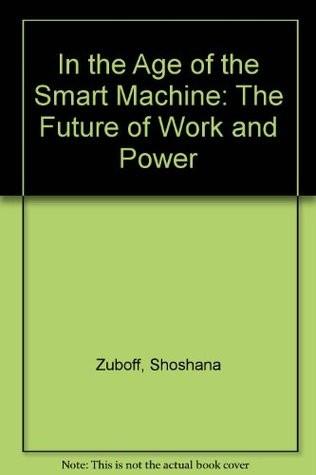
In the Age of the Smart Machine
by
Shoshana Zuboff
Published 14 Apr 1988
It seemed likely that in the apparently maladaptive responses of workers to computer-based technology (what many called "resis- tance to change"), it would be possible to trace a lineage of ordinary assumptions that referred back to the realities of the past and their points of disjuncture with the future. Like many other scholars of my generation, I had been struck by Daniel Bell's formulation of the post- industrial society, but discussions of these social changes were fre- quently limited to sociological abstractions. I wanted to discover the flesh and blood behind the concepts, the interior texture rather than the external form. I wanted to understand the practical problems that would have to be confronted in order to manage the new computerized workplace in ways that would fulfill the lofty promise of a knowledge- based society and to generate knowledge that would be instructive to those charged with that managerial responsibility.
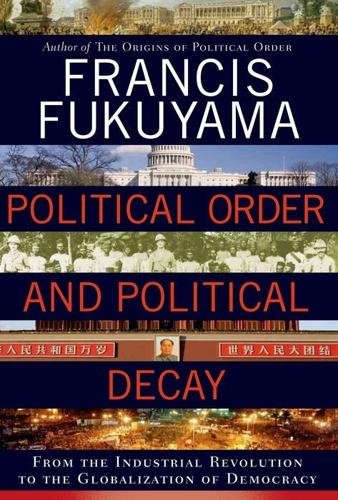
Political Order and Political Decay: From the Industrial Revolution to the Globalization of Democracy
by
Francis Fukuyama
Published 29 Sep 2014
Baumgartner, Frank R., et al. 2009. Lobbying and Policy Change: Who Wins, Who Loses, and Why. Chicago: University of Chicago Press. Beer, Lawrence W., and John M. Maki. 2002. From Imperial Myth to Democracy: Japan’s Two Constitutions, 1889–2002. Boulder: University Press of Colorado. Bell, Daniel. 1973. The Coming of Post-Industrial Society: A Venture in Social Forecasting. New York: Basic Books. Berman, Sheri. 2013. “The Promise of the Arab Spring: In Political Development, No Gain Without Pain.” Foreign Affairs 92(1):64–74. Bernhardt, Kathryn, and Philip C. C. Huang, eds. 1994. Civil Law in Qing and Republican China. Stanford, CA: Stanford University Press.
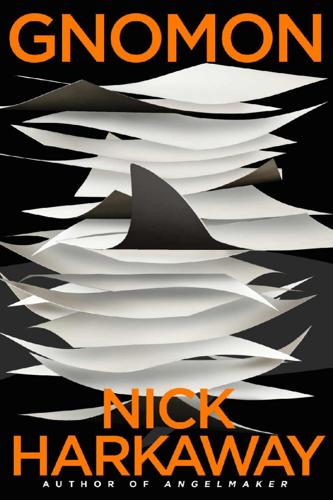
Gnomon
by
Nick Harkaway
Published 18 Oct 2017
The endless re-encountering of the same people, for example, and the echoing restatement of the same conversations, to the point where it seems that only a few humans actually inhabit the earth and all the other billions exist simply as shades and mannequins, is also an experience common to both post-industrial society and the worldview of sociopaths. She looks back queasily at the poem on the wall, taking in the title. ‘Non Sum Qualis Eram Sub Regno Cynarae’ – ‘I am not what I was under the reign of Cynara’. A perfectly innocent example of its type, chosen by a simple software script. Except for that one word, which is now, and for the duration of the case, a name: Regno.
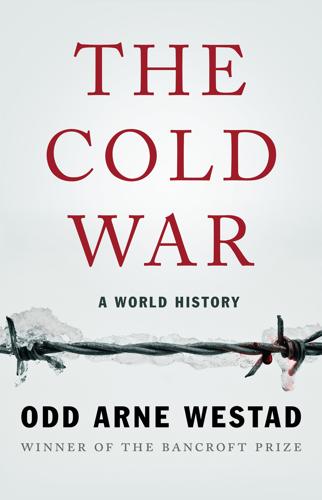
The Cold War: A World History
by
Odd Arne Westad
Published 4 Sep 2017
Next door, in Japan, an already developed economy was experiencing continuous high growth rates of around 5 percent. At the beginning of the decade, the Harvard social scientist Ezra Vogel had argued that Japan, in many respects, was already the number one country globally. Japan, he argued, “has dealt more successfully with more of the basic problems of post-industrial society than any other country.”3 Comparing the influence of global powers eight years later, the Yale historian Paul Kennedy saw Japan as “enormously productive and prosperous, and getting much more so.”4 It was hard not to conclude that the future, at least in some ways, belonged to Japan. The argument that Japan had achieved its extraordinary position in spite of (some would say because of) not prioritizing military affairs was tremendously powerful in the debates of the 1980s.